A Window into Our Classroom: Summer Session 2025
We have had such a sweet and close knit summer session! The smaller group size has given us the opportunity to work closely in intimate groups, allowing for more individualized attention and stronger relationships. This month, we welcomed four new friends into the classroom and explored new materials and interests in the summer sunshine!
Memorable Highlights
Thanks to the generosity of Brenda and Tyler (Levi’s grown-ups), a new classroom interest emerged: butterflies, ants, bees, and other insects. Over the past few weeks, we’ve built experiences around this emerging curiosity, offering opportunities that support all areas of child development while honoring the children’s natural interests.
In our classroom this month, we filled our sensory bin with dirt and large bugs for the children to explore with tongs, pots, and Handy Scoopers. These intentional materials provide the children with access to natural element tactile input, fine motor strengthening, scissor scaffolding, visual perception, and language development. In our art studio children practice their fine motor skills and bug part identification with insect stickers, stamps, and stencils.
During our caterpillar/butterfly exploration, we learned a new song -- The Butterfly Song -- that outlines the process of metamorphosis as the caterpillar becomes a butterfly. The children were interested in learning a new word - chrysalis. While singing our butterfly song, we discussed the shape of an egg, caterpillar, cocoon, and butterfly, acting out each phase with our hands, strengthening language development and coordination.
We made caterpillars using construction paper, glue, and pipecleaners, allowing each child to create and manipulate their own caterpillar, practicing fine motor skills, executive functioning, and exercising creative freedom and problem solving. Check out the children’s unique caterpillars on the front wall in the foyer!
We watched the caterpillars in our classroom form their cocoons, and we welcomed four butterflies into the world! We enjoyed watching our classroom ants form their tunnels and have experimented with feeding them some of our snacks. We have connected the ants working together as a team to build their tunnels, just like we are a team in our classroom, working together to keep our classroom safe, clean, and kind.
As we delved into the world of honeybees, we learned about how a beehive looks on the inside (a cluster of hexagon shaped cells), and the children worked collaboratively to create a hive out of recycled materials. The children painted the hive with yellows, oranges, and browns, and they worked together to glue toilet paper rolls to the cardboard, while analyzing our photograph of a real bee hive’s interior. As the children explored the inside of a beehive, they practiced early science skills by observing details, comparing shapes, and asking questions about the natural world. Working together to build the hive encouraged cooperation, communication, and problem solving. Painting and assembling supported fine motor development and gave them rich sensory experiences with texture and color and print making. Using a real photograph as a reference also strengthened visual analysis and spatial thinking.
The children carried their bee studies to the block rug where they constructed a beehive out of our unit blocks and larger blocks.
We had also planned to create a larger hive that children could climb inside, but thanks to the creativity of the students, the beehive transformed into a bee-mobile! It was complete with a steering wheel, a yellow interior painted by children, and a brown paper hive-like exterior. The children loved participating in dramatic play in the bee-mobile, asking their backseat passengers, “Where do you want to go?” which was often met with an enthusiastic response: “To the ice cream shop!” Dramatic play like this boosts language aquisition (children are more likely to take risks with language in an un-pressured setting!) and social and emotional growth, as the children played collaboratively and further developed their communication and problem solving skills in their shared stylish bee-mobile.
We celebrated “Bee Day,” and each child was given the opportunity to create their own bee to hang on the front wall. Many of them also chose to dress in bee colors and create a bee hat! Be sure to check out the bees on our front wall, created with black tape, yellow construction paper (created by the students using yellow paint!). Each child brought their own ideas and creativity to their bee design and we love to see each child’s interpretation of a honey bee!
The teachers brought in ladybugs and worms for the children to explore. The children actively participated by digging in the dirt to help find the worms. This type of sensory rich activity provides proprioceptive input, which supports body awareness and regulation-a strategy we’ve incorporated from our occupational therapy training. During our insect exploration, the children also observed ladybugs closely, noticing how they felt in their hands, discussing the helpful role they play in our garden, and comparing the different types we discovered. Ask your child about our ladybug and worm exploration, we’d love to hear what they noticed and remember!
In addition to our insect exploration this summer, we worked with our classroom’s core materials, tended the garden, built forts outside, came together in dance and song, created art, read A LOT of books, and savored apples from Ita’s garden!
Questions Teachers Asked
What do you know about bees?
What is another word for a cocoon?
What do you like about bees?
Do you know what bees make in their hives?
How many legs does a bee have?
What do the lady bugs feel like?
What do you know about worms?
Where do you think it might be going? Why?
What would it be like if you were as small as this insect?
What do you notice about how this insect moves?
What do you think this insect likes to eat?
Can you draw what you see?
Insect Insights From the Children
“We saw two bees last day!” - Dillon
“They make a leaf and then make a home and then become a butterfly” - Arthur
“The butterflies are going to fly to Ita’s house”-Freya
“I like that butterflies are pink” - Eisley
“They sting because they need honey” - Tommy
“If you want honey here, you have to let the bee live!” - Idris
“I like the honey bees” - Winter
“Honey is gooey” - Sammy
“I like the bees because they make honey” - Kaiyas
“I like bees and hornets because they’re poisonous” - Idris
“I really, really like to squish bees” - Eisley
“Teacher, you’re scaring them with your eyeballs” - Sloane
“It’s a monarch!!” - Idris
“Don’t touch them teacher, they’re poisonous!” - Kaiyas
“Bees reach high stuff”-Freya
“When I’m farting they go away” - Dylan
“I can see a butterfly there!” - Sylvie
“I think he’s getting ready to fly to the oranges and raspberries, maybe he’s hungry” - Idris
“Do the worms like the water?”-Eisley
“The lady bugs tickle”-Sloane
“I am so gentle and kind to the lady bugs”-Kaiyas
“That one is the mama, that one is the dada, and that one is the baby”-Eisley about the lady bugs
“This one’s going to be for mama”-Sylvie about the lady bugs
“It’s crawling on my dress!”-Kiran about the lady bugs
“Some lady bugs are poisonous”-Tommy
Books We Loved
The Digger and the Butterfly by Joseph Kuefler
The Very Hungry Caterpillar by Eric Carle
Lola Meets the Bees by Anna McQuinn
Bear and Bee by Sergio Ruzzier
Ladybugs by Gail Gibbons
Songs we Sang
Our Good Morning Song
Jump Up Into the Circle
I Can Sing A Rainbow
The Butterfly Song -
Butterfly starts as an egg, as an egg, as an egg
Butterfly starts as an egg, let’s see what happens next
Caterpillar hatches out, hatches out, hatches out
Caterpillar hatches out, lets see what happens next
Caterpillar gobbles leaves, gobbles leaves, gobbles leaves
Caterpillar gobbles leaves, let’s see what happens next
It becomes a chrysalis, chrysalis, chrysalis
It becomes a chrysalis, let’s see what happens next
Butterfly comes out to fly, out to fly, out to fly
Butterfly comes out to fly way up into the sky
PHOTO GALLERY
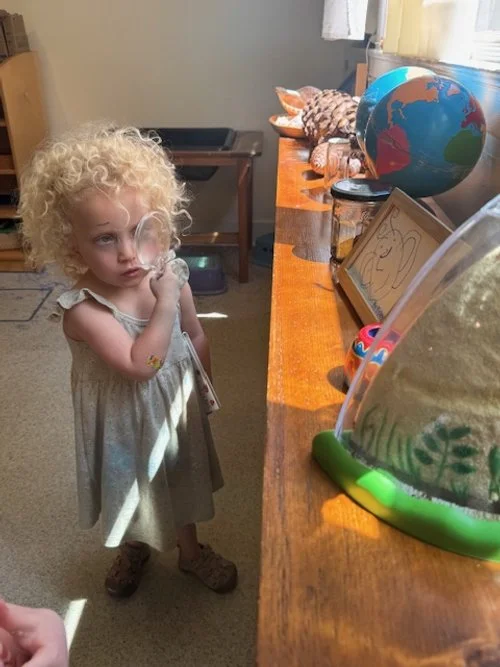
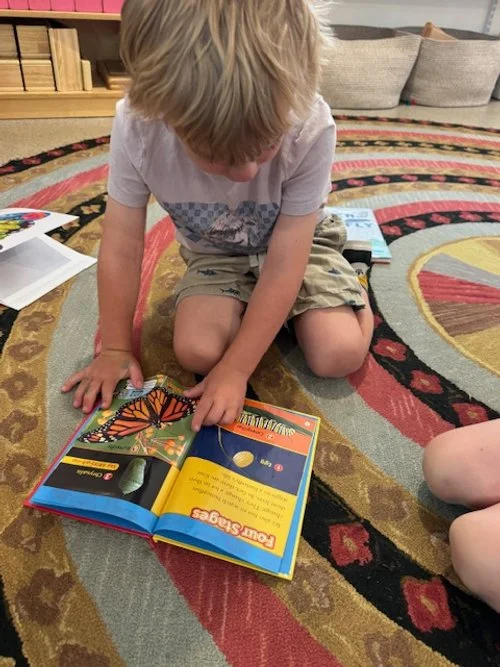
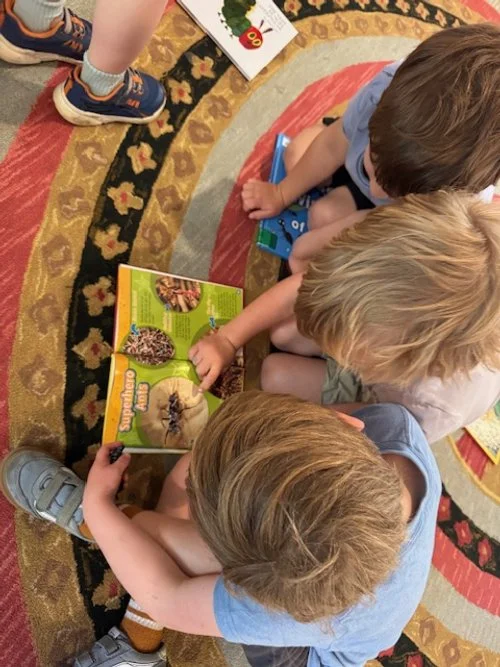
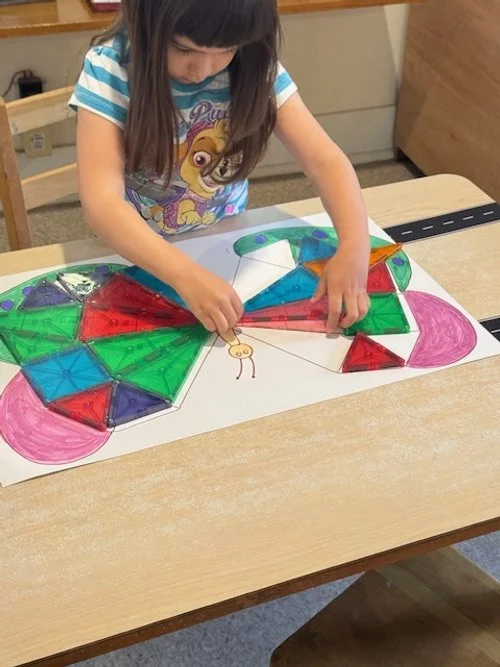
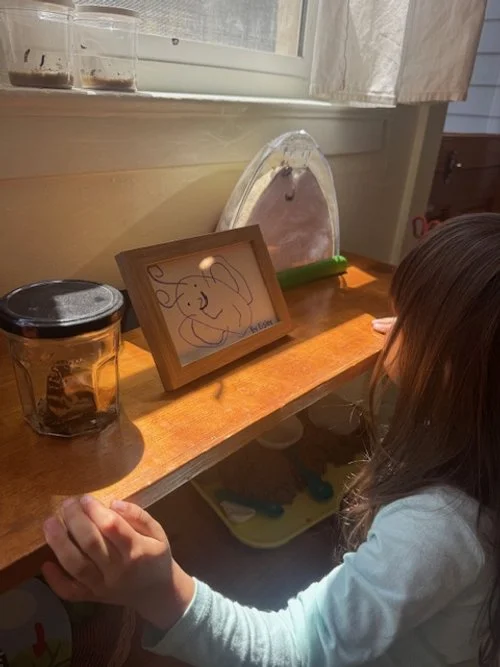
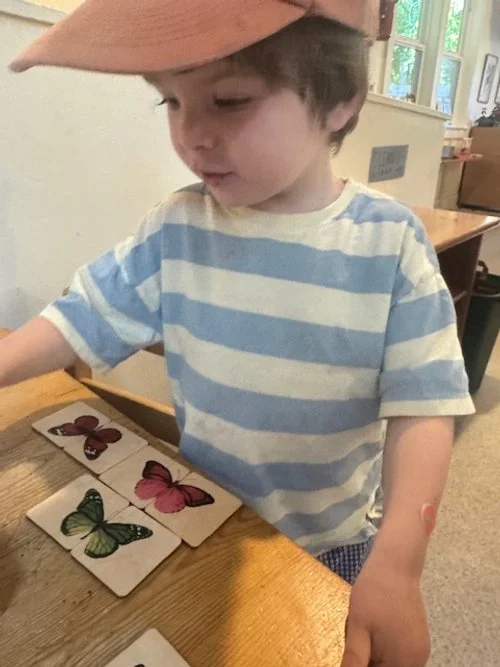
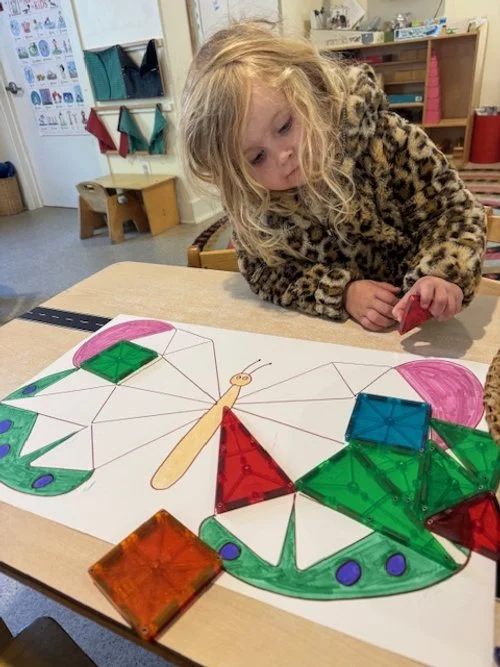
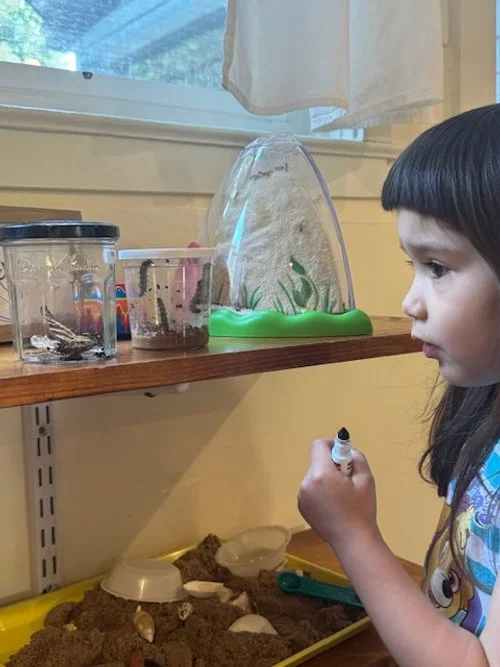
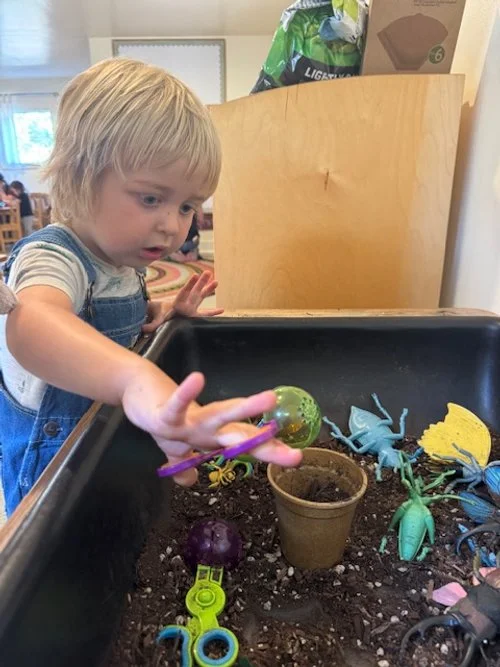
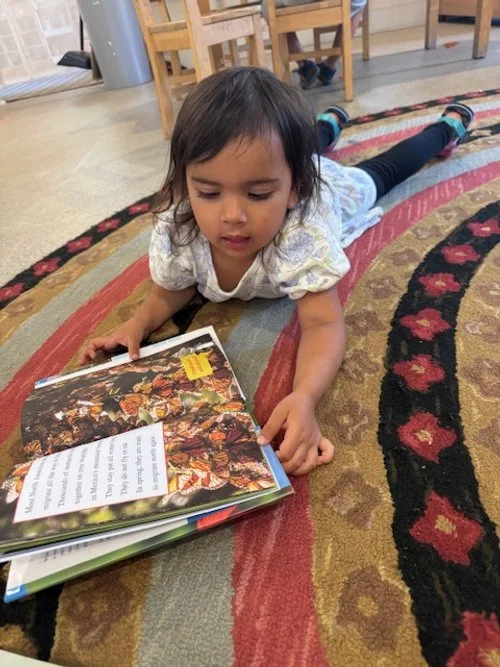
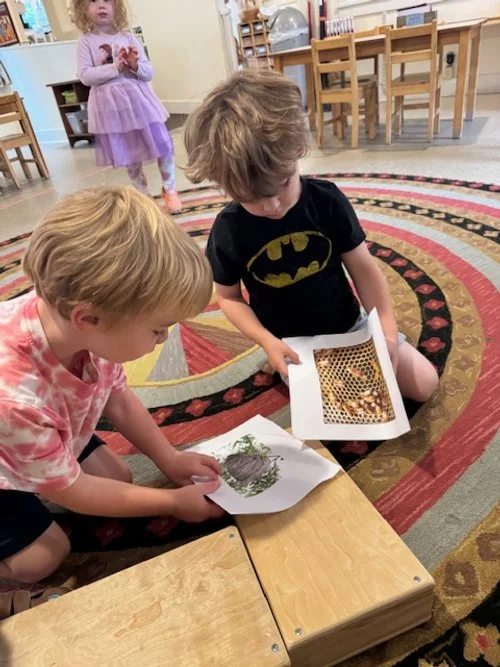
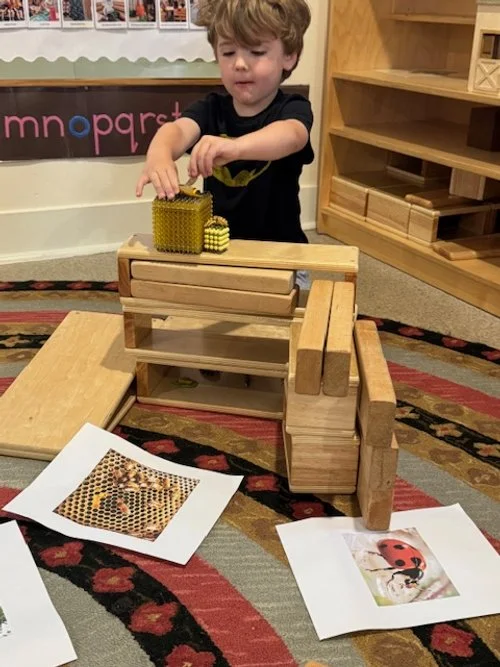
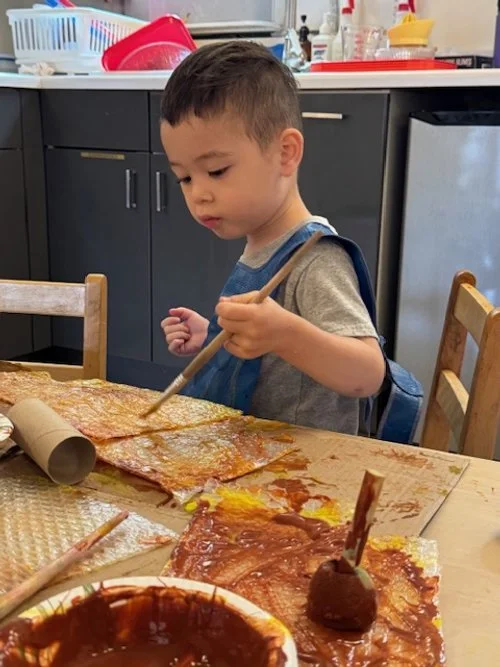
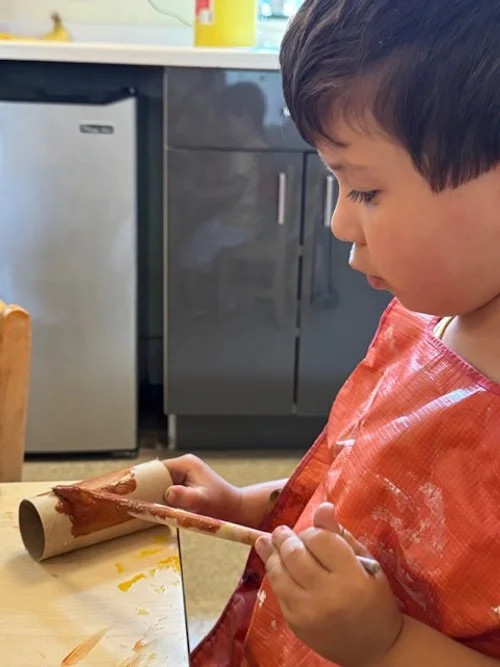
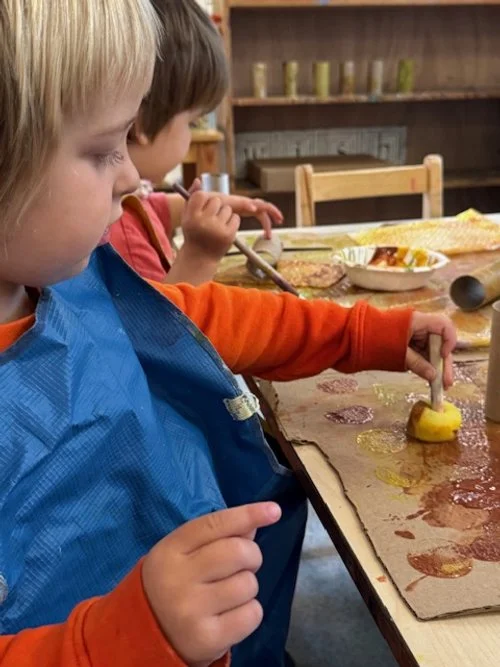
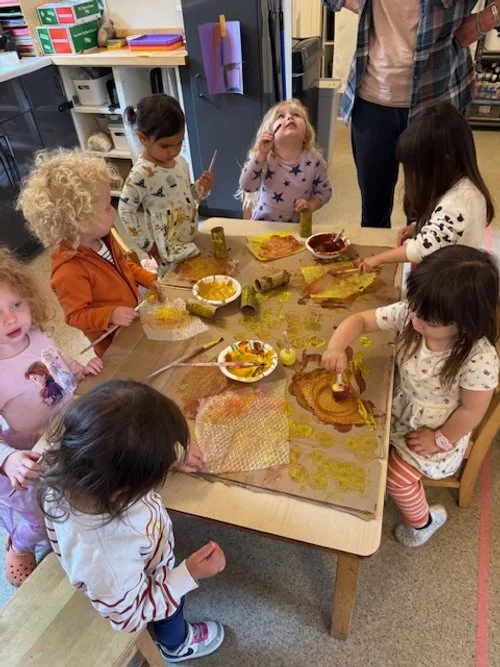
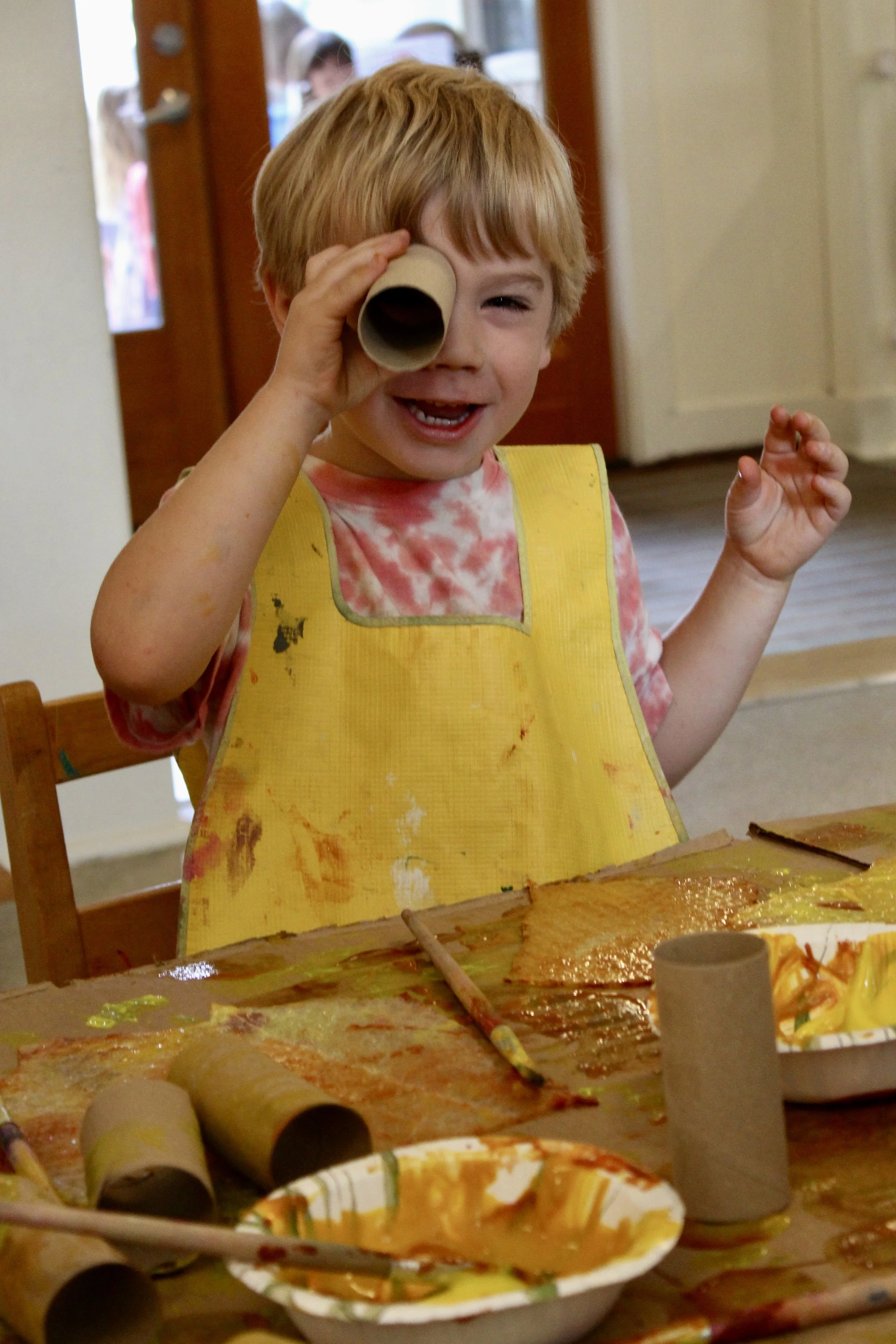
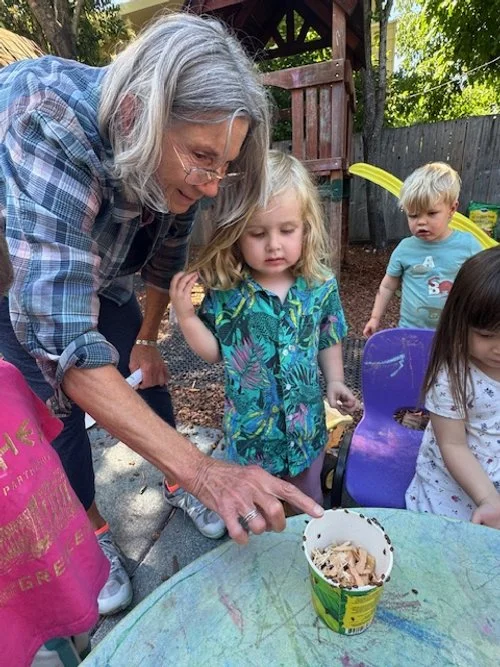
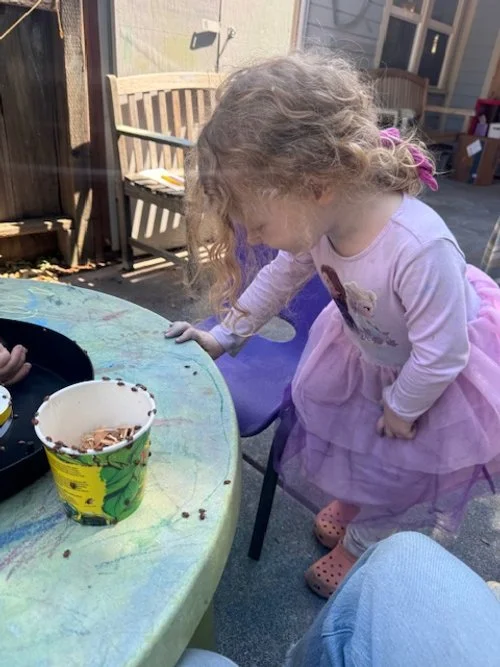
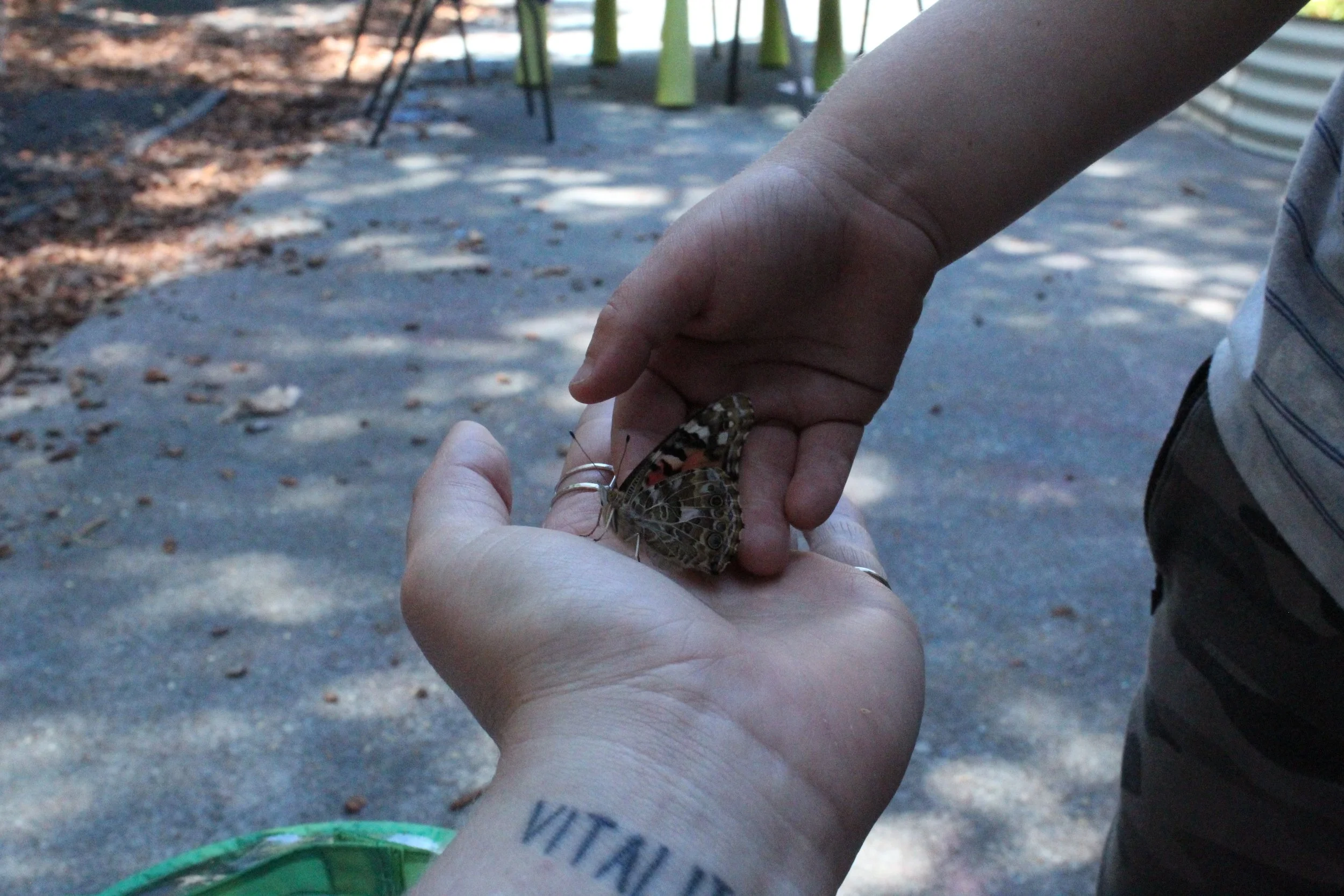
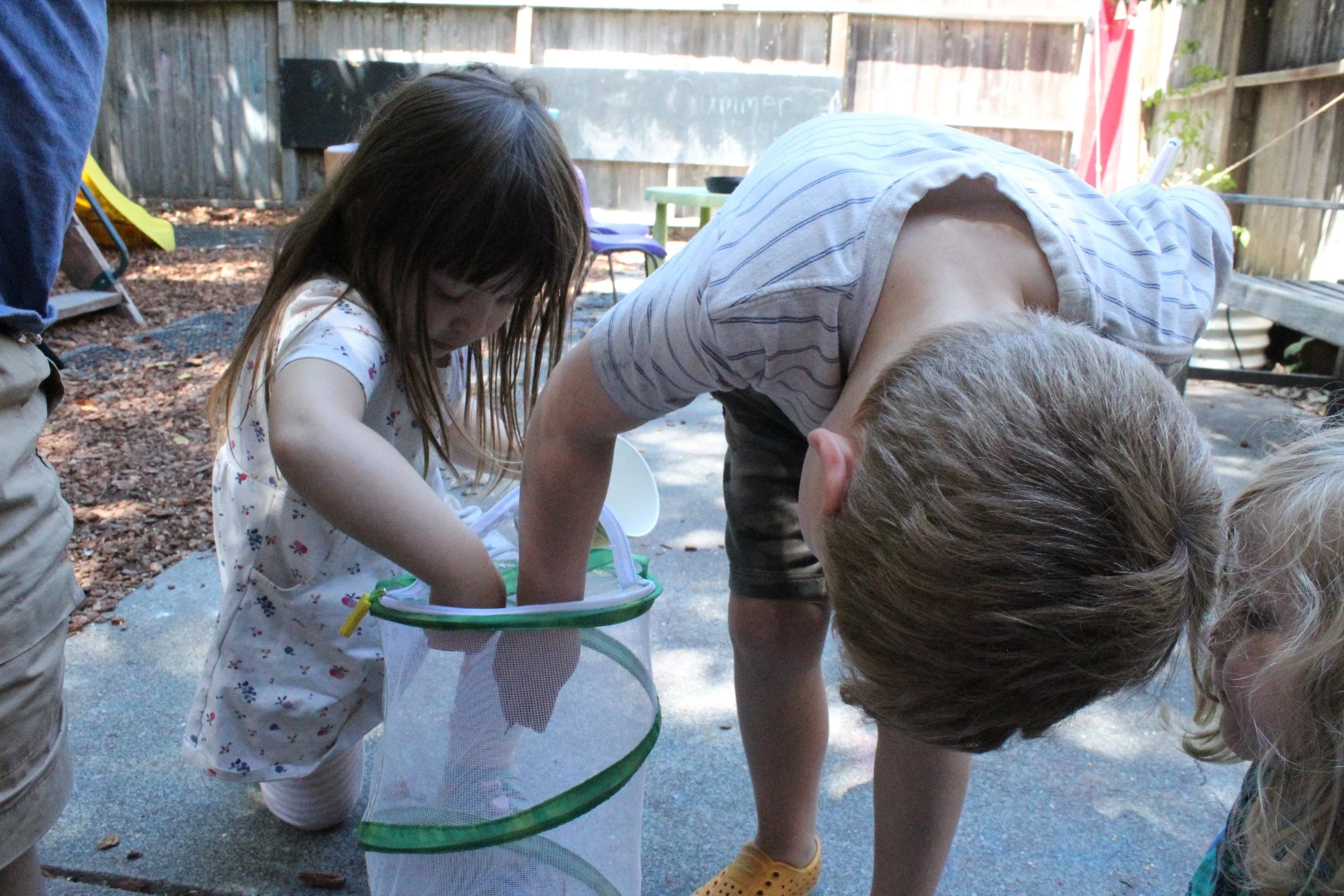

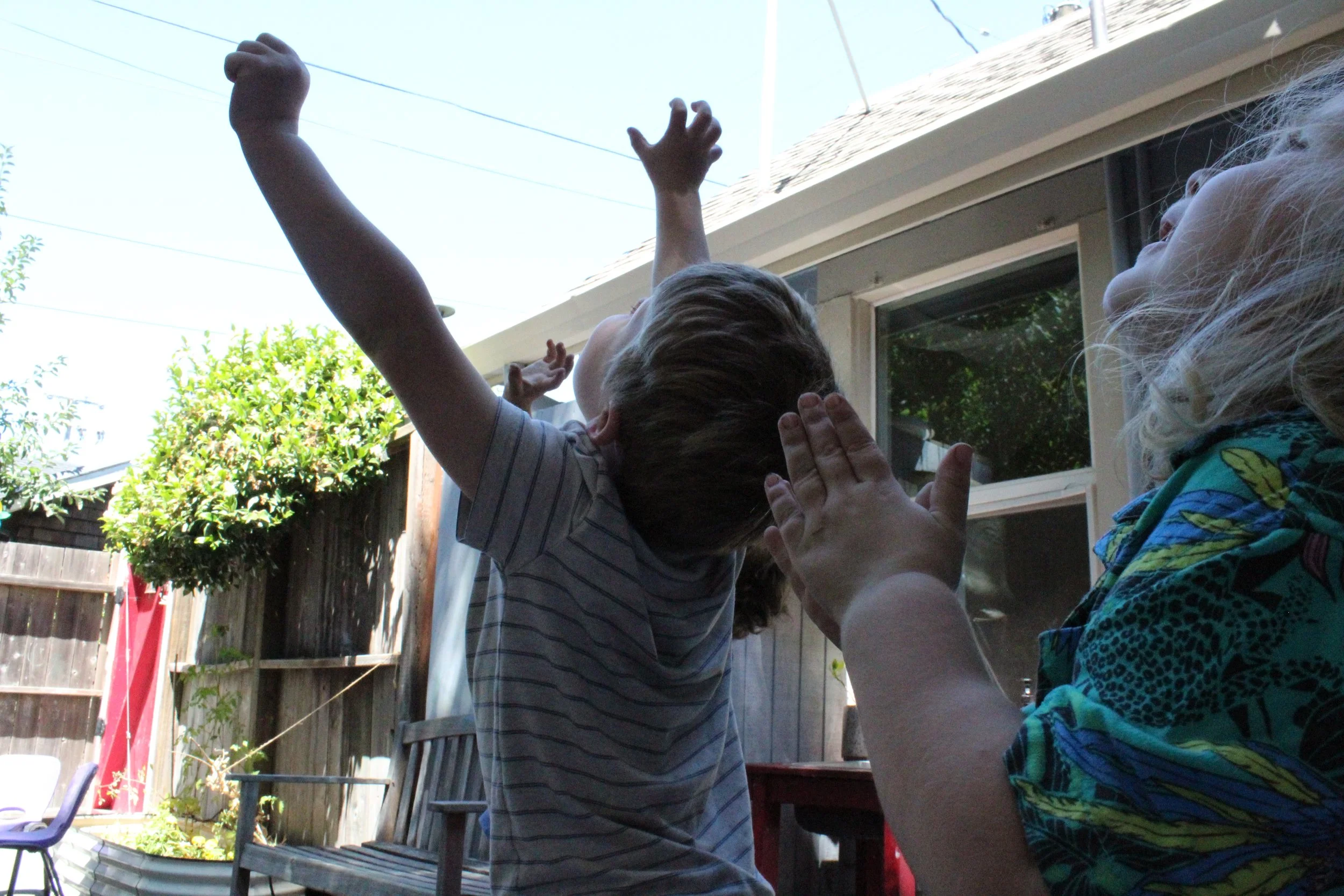
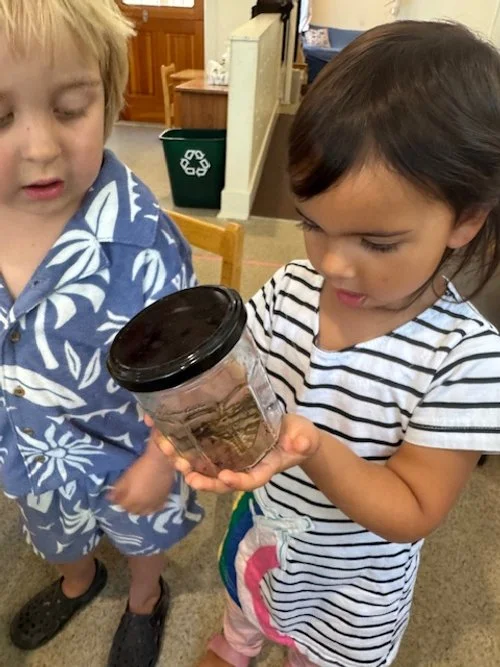
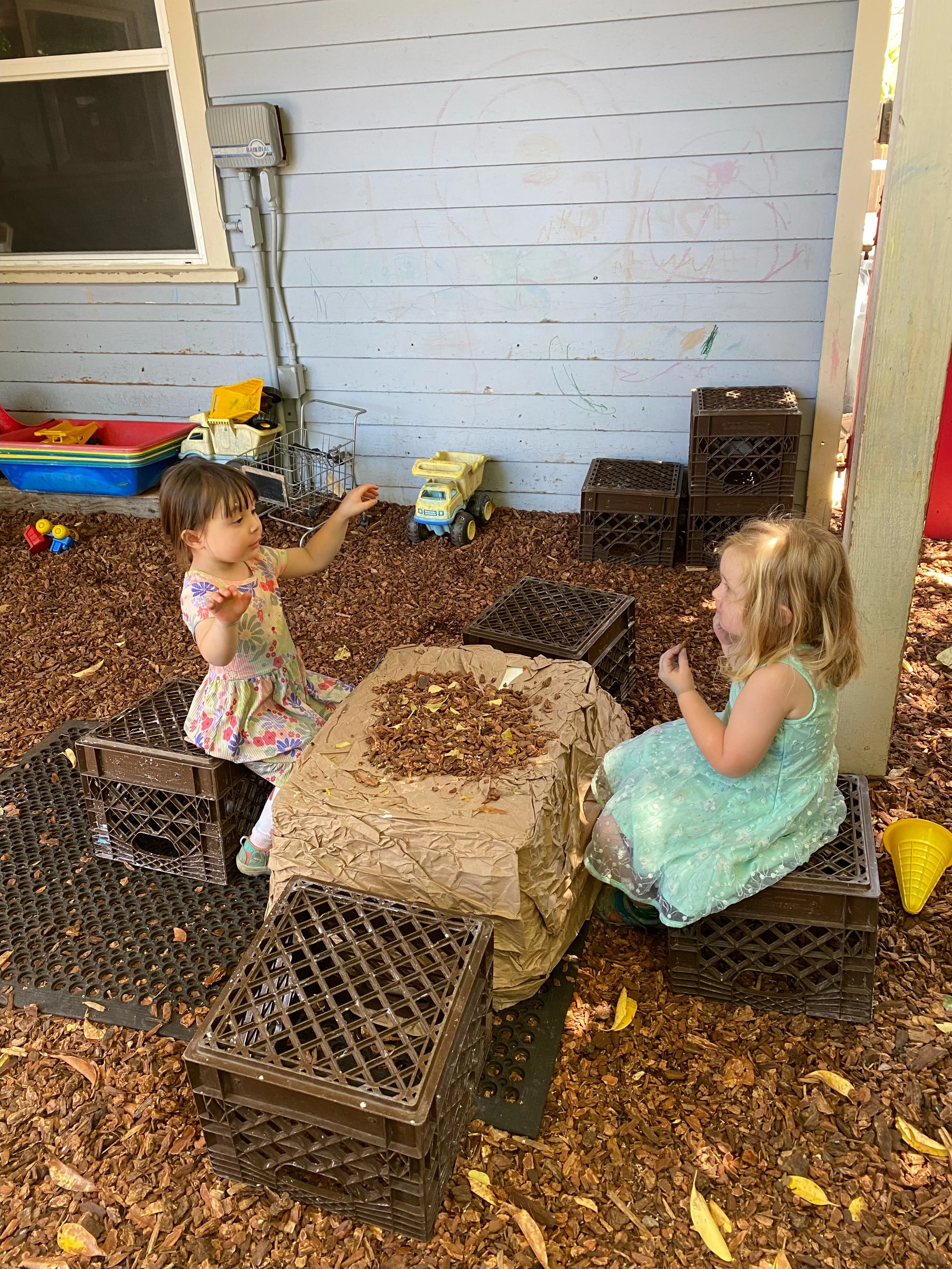
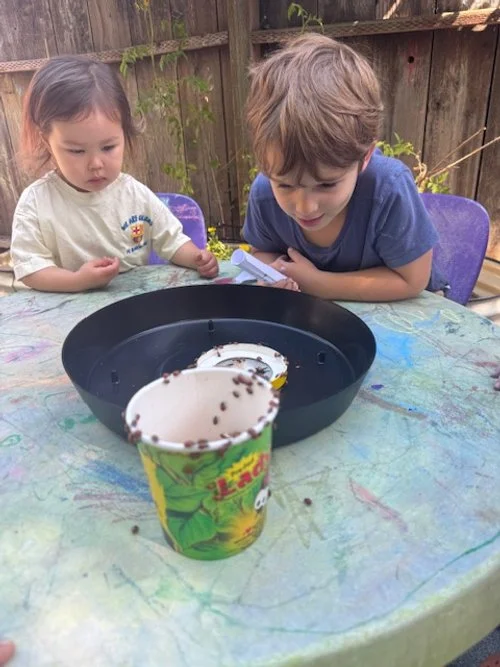
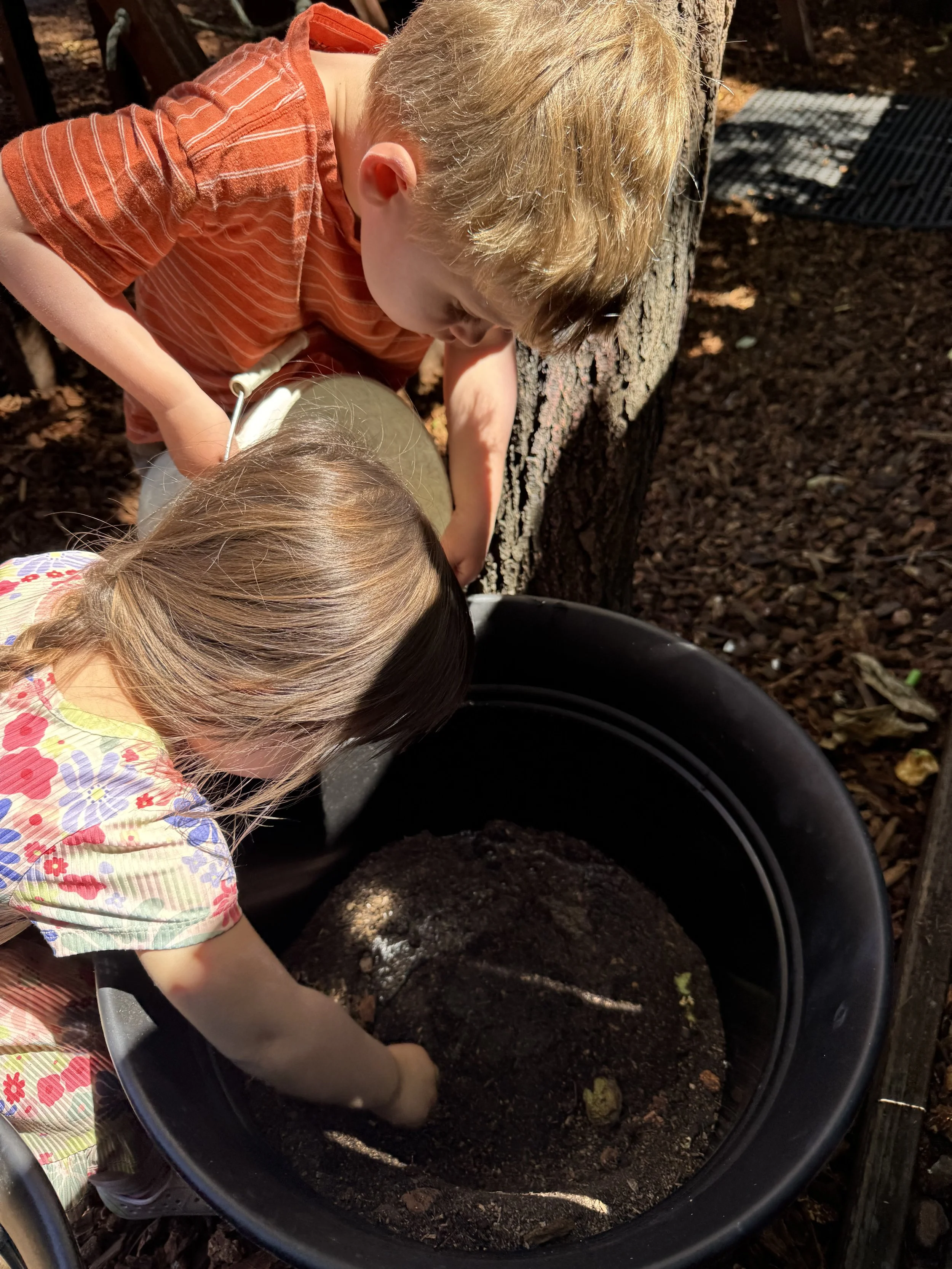
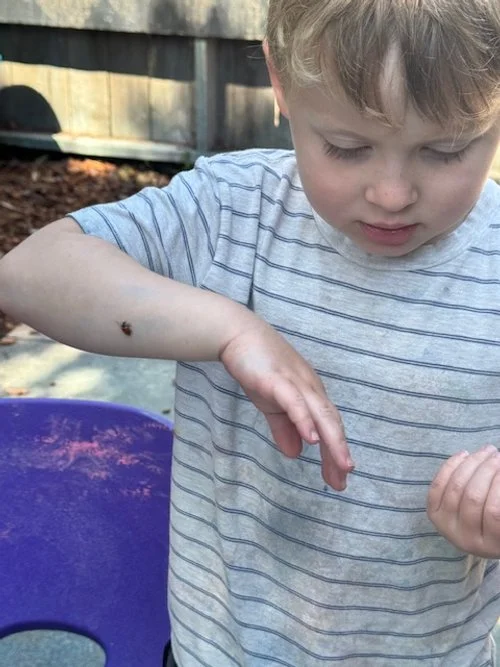
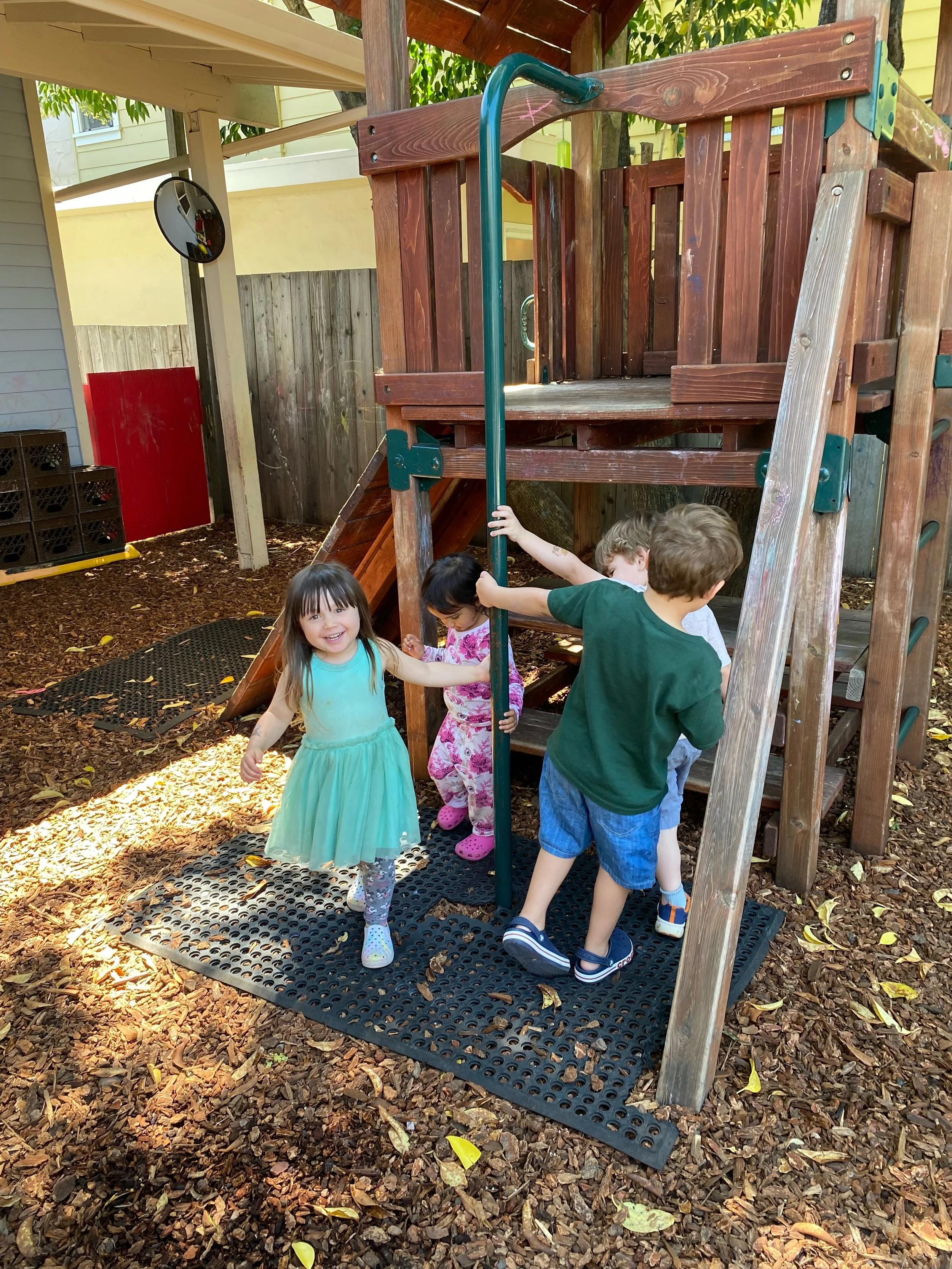
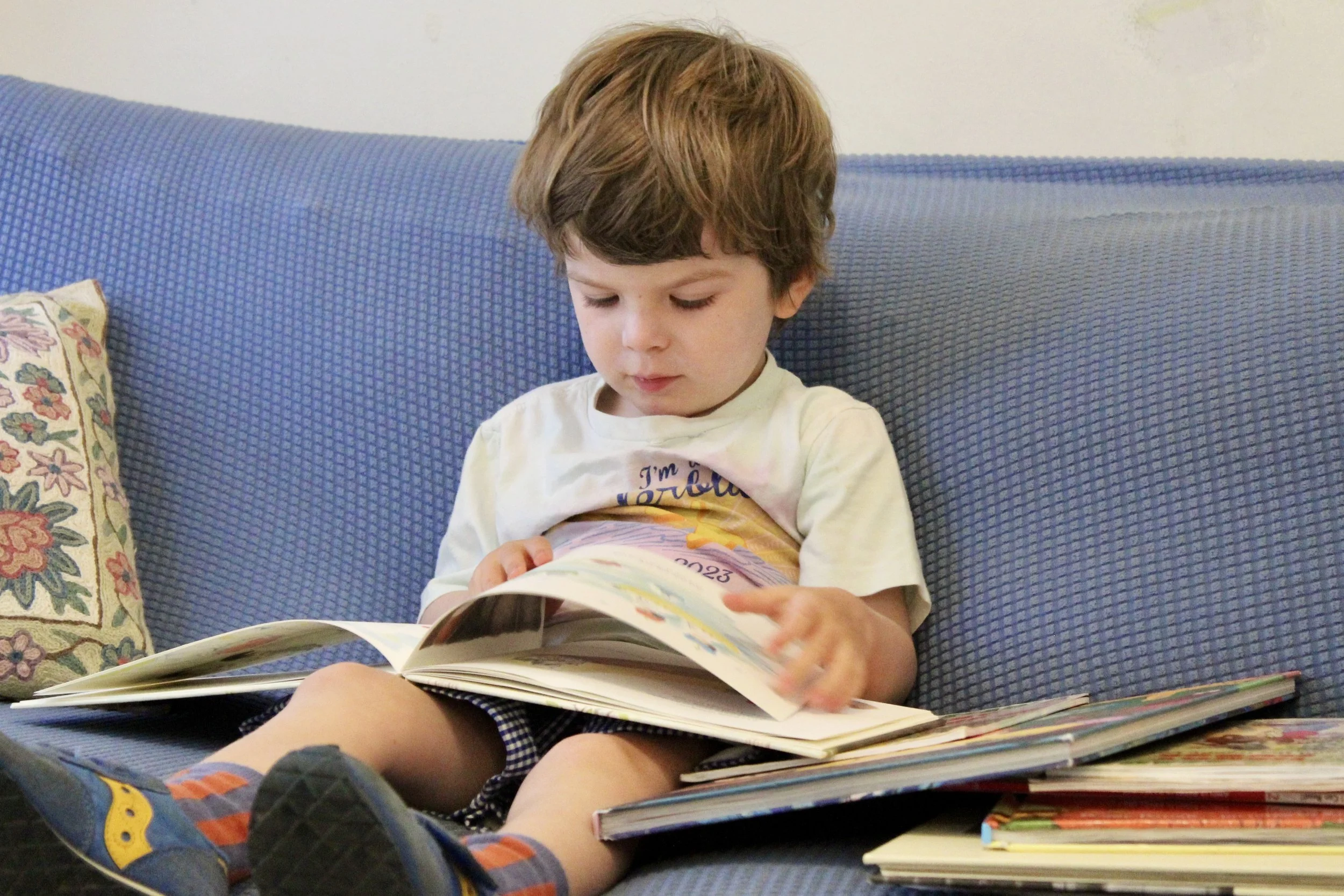
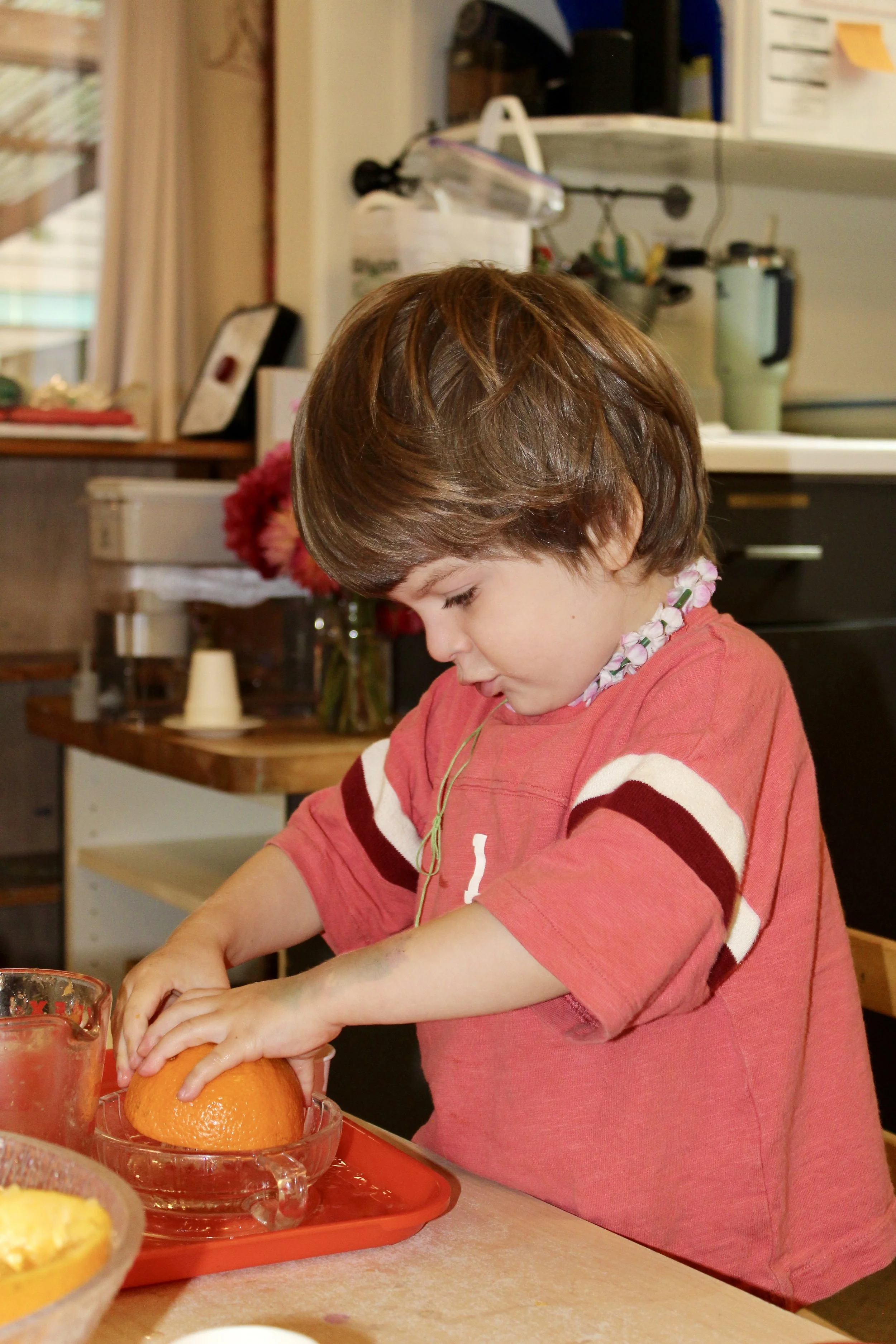
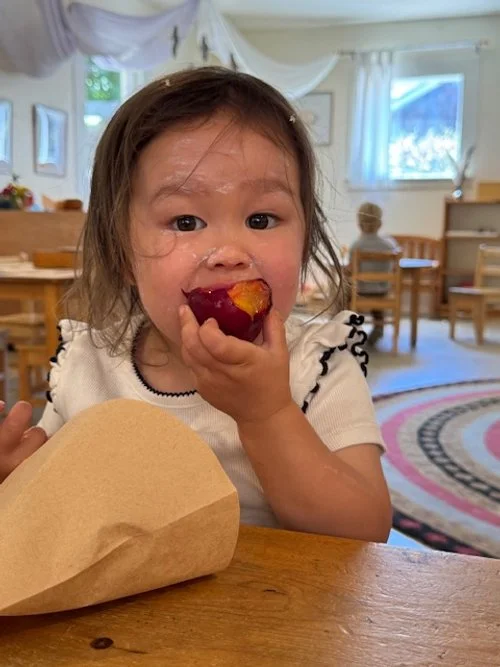
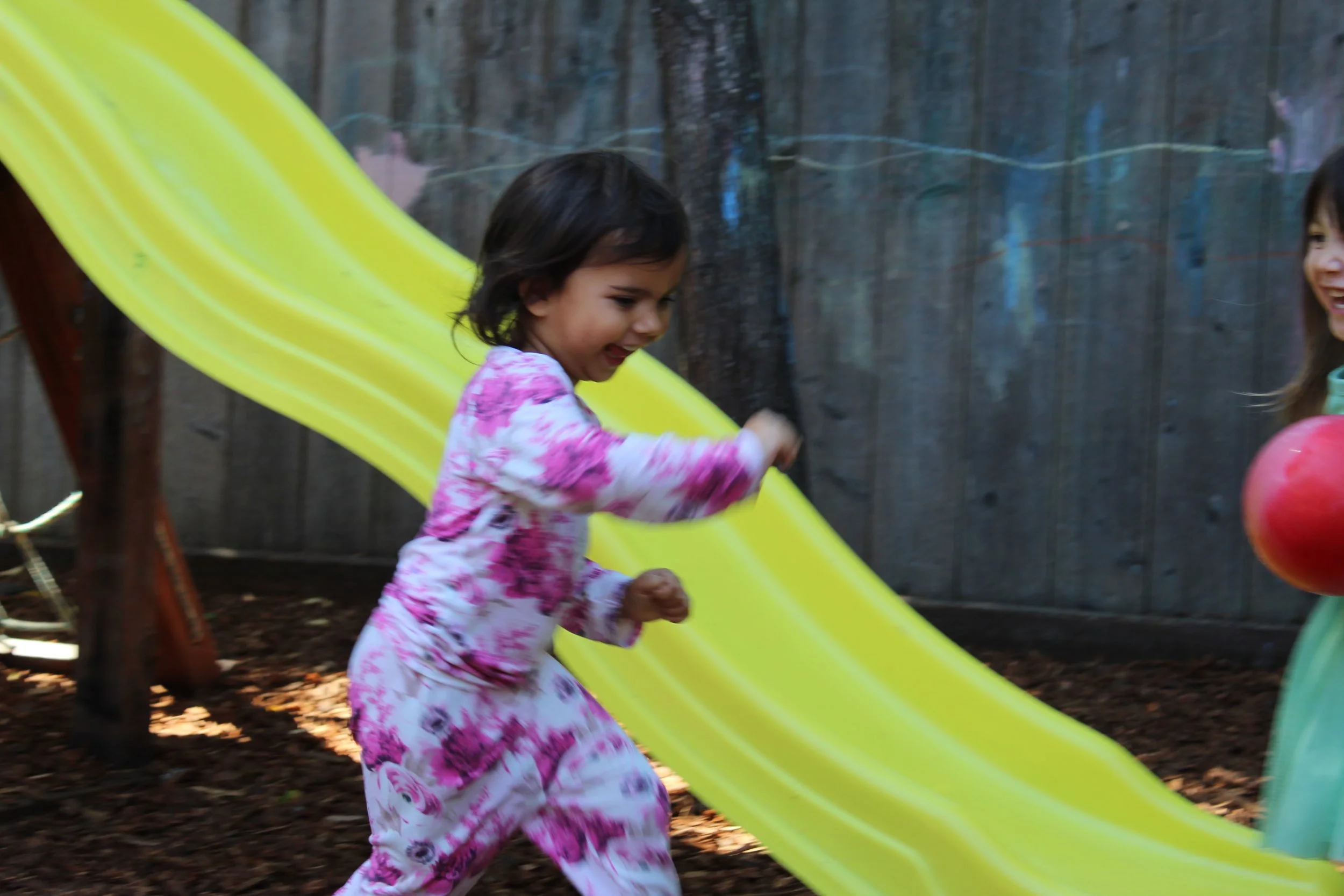
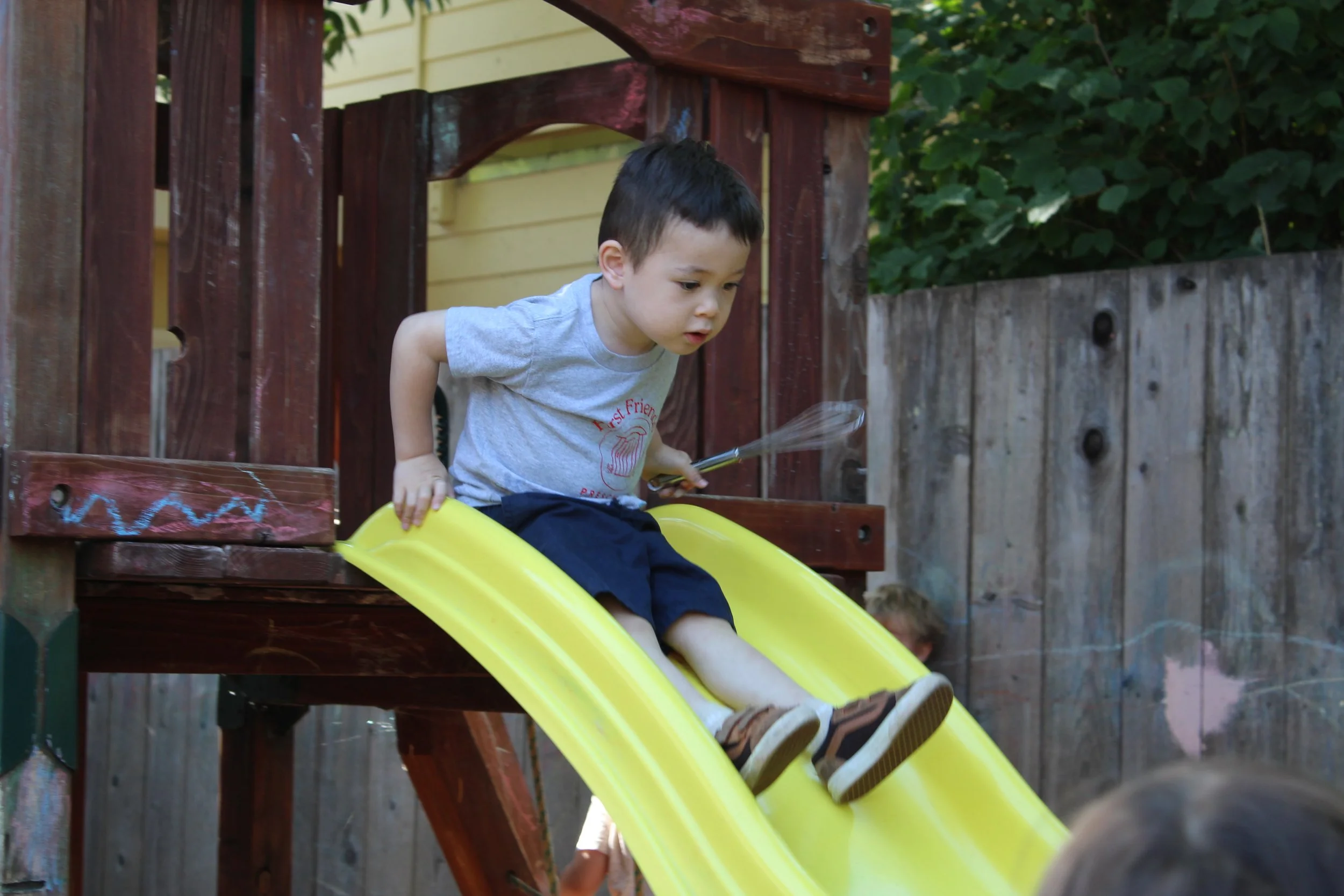

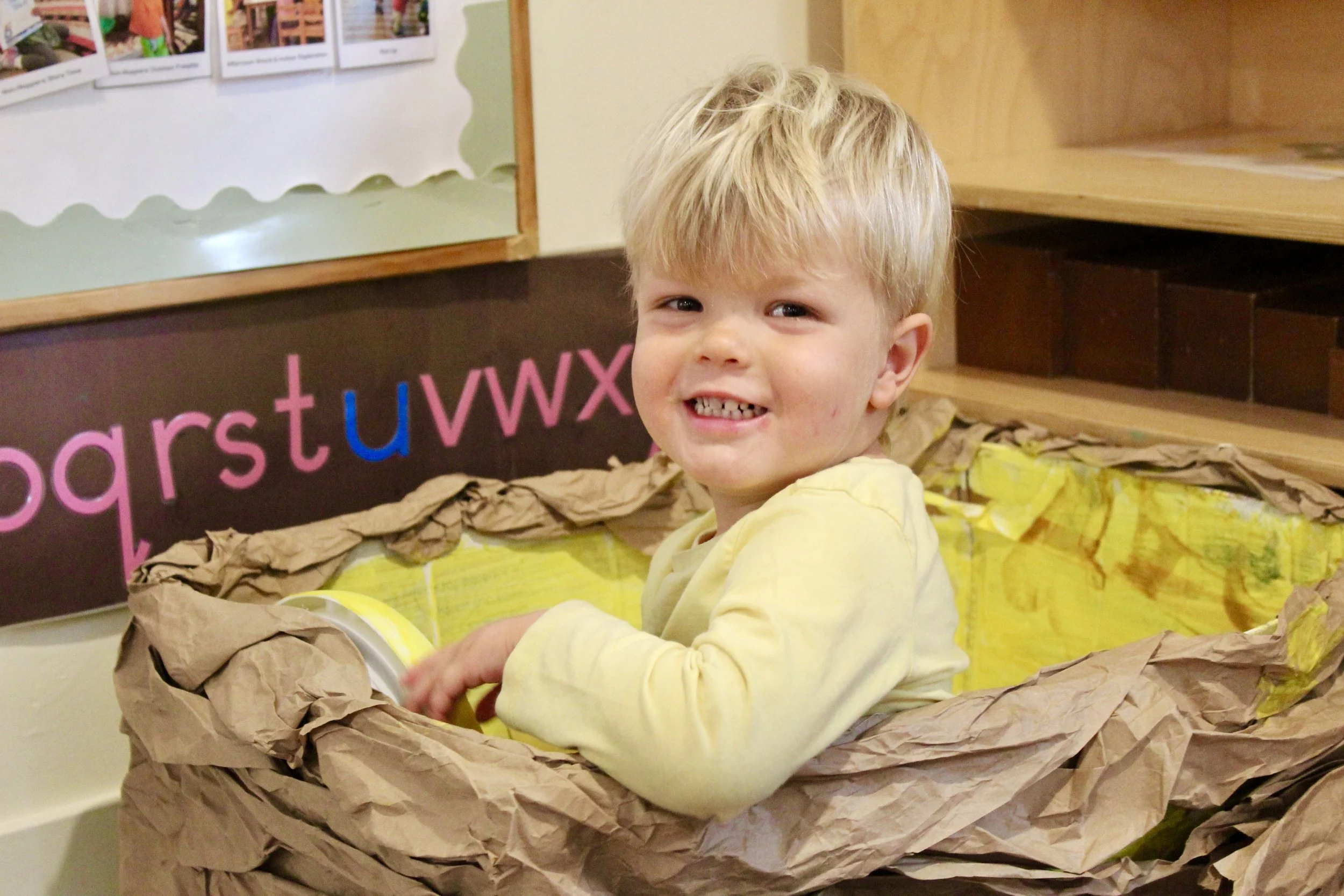
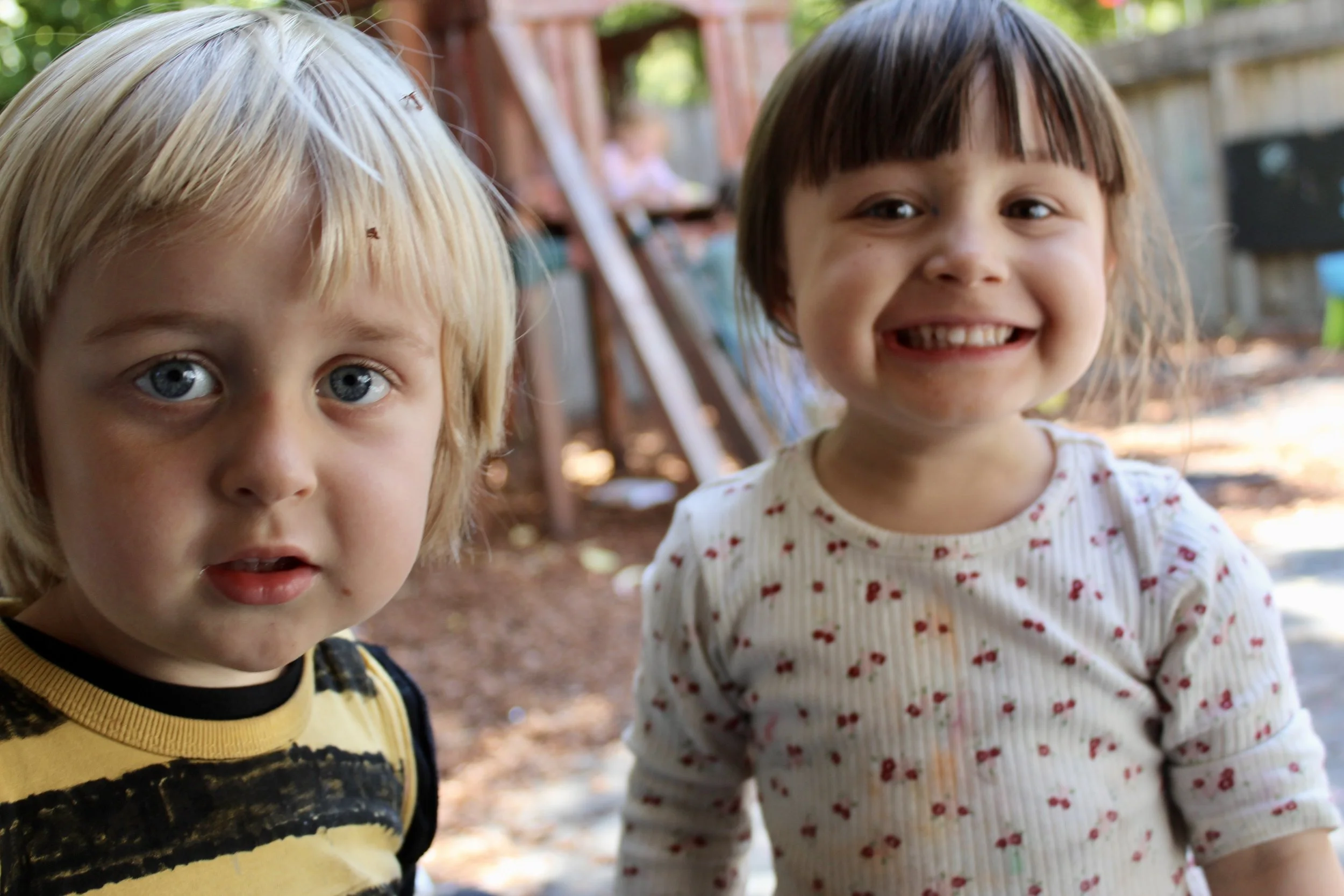
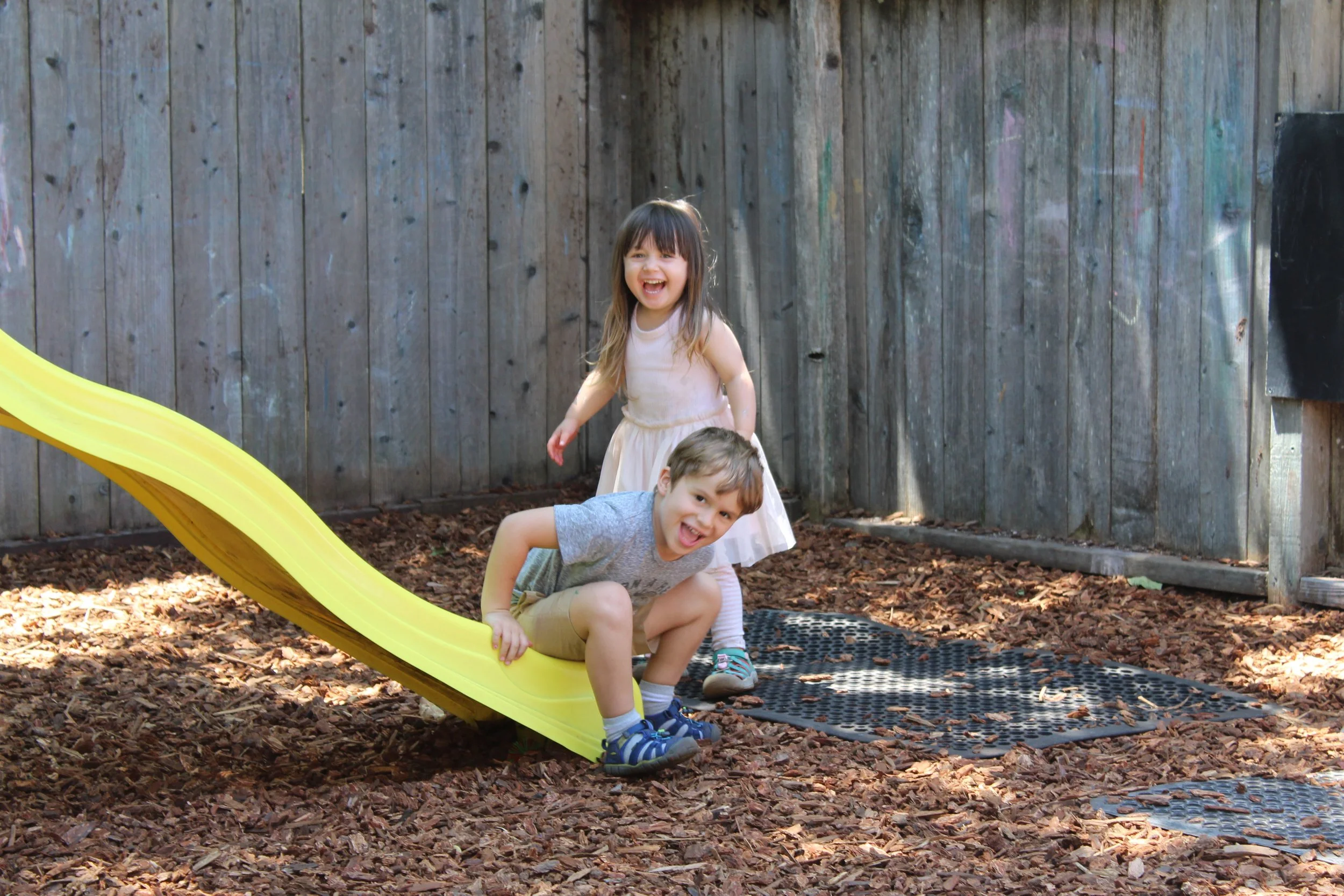
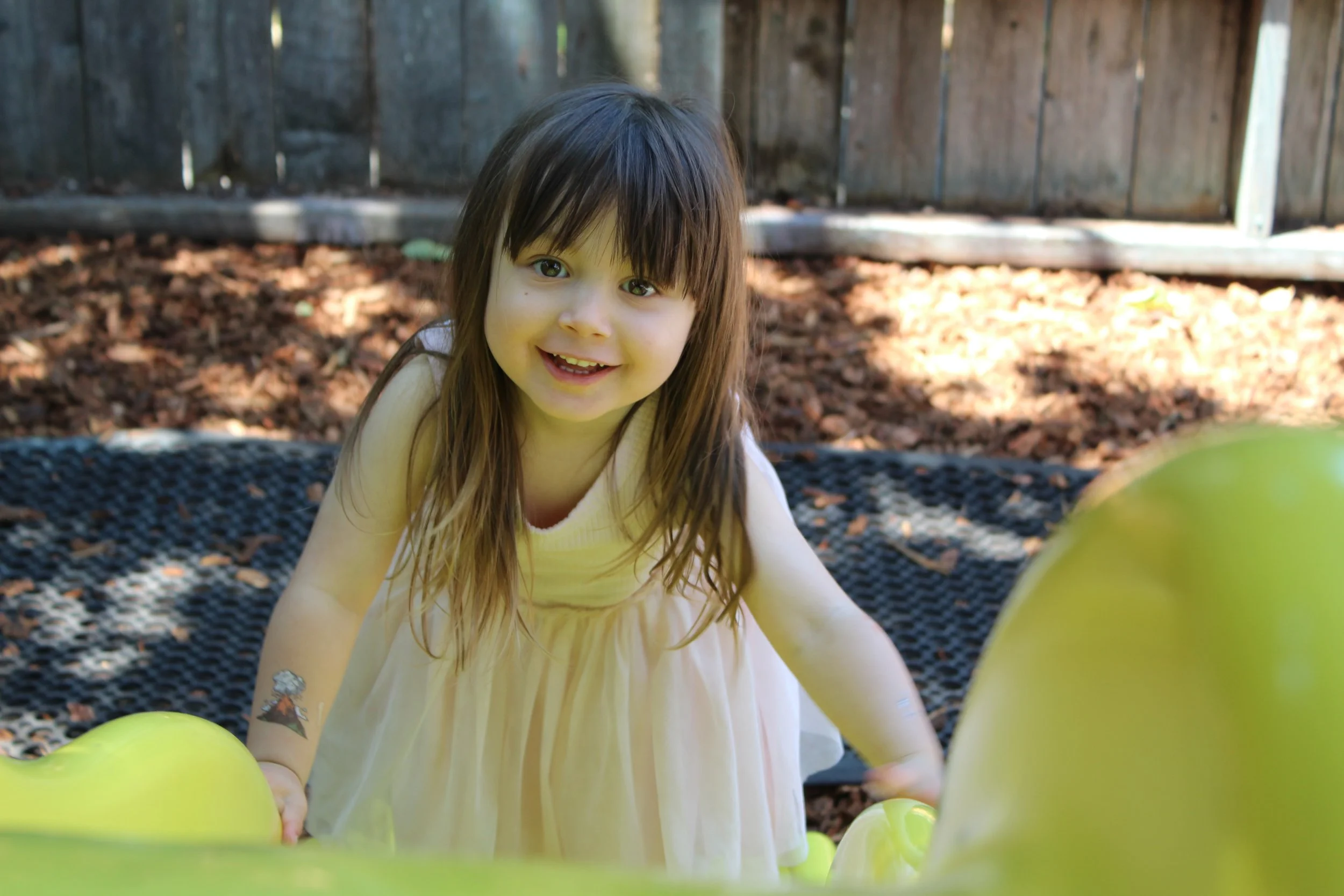
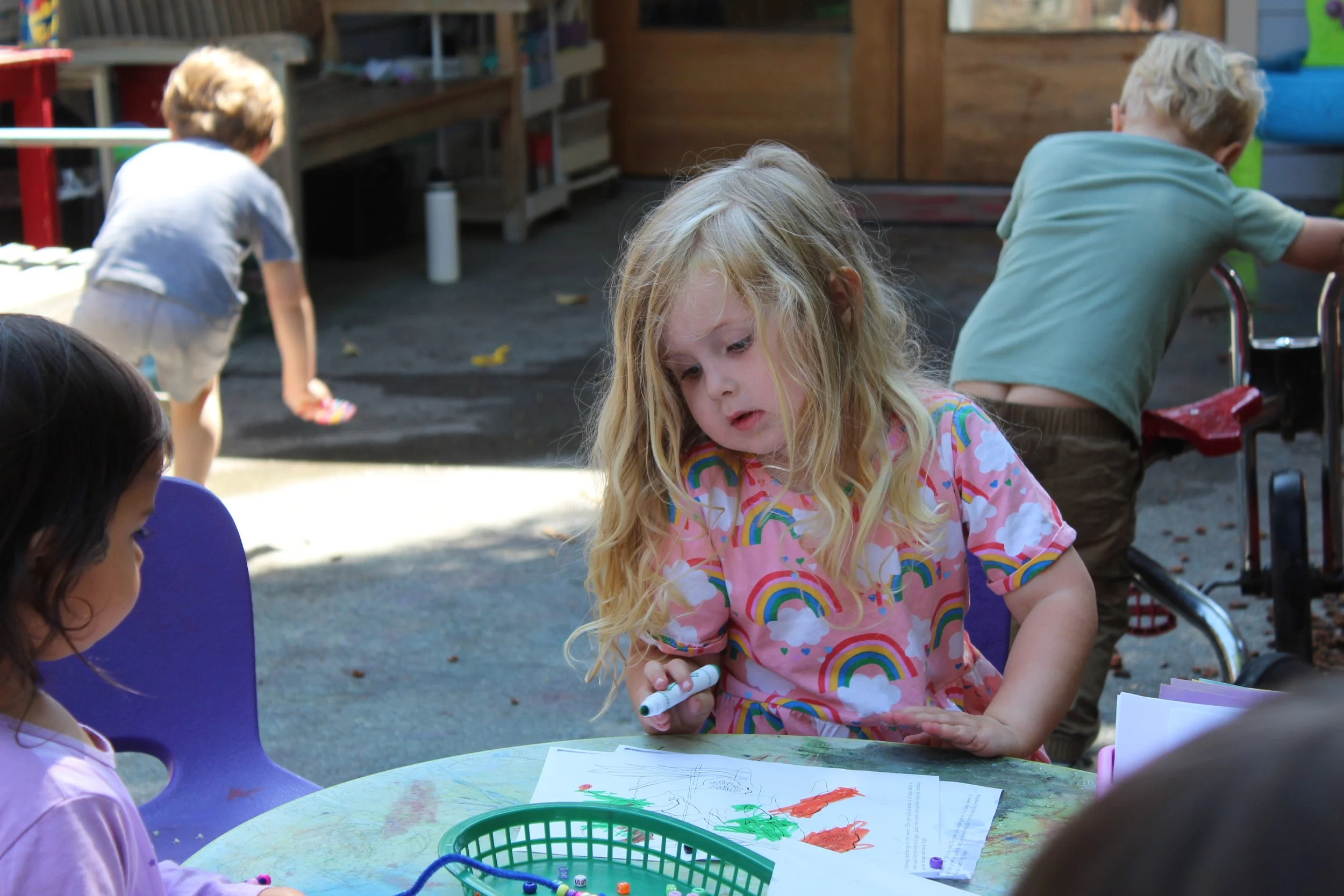
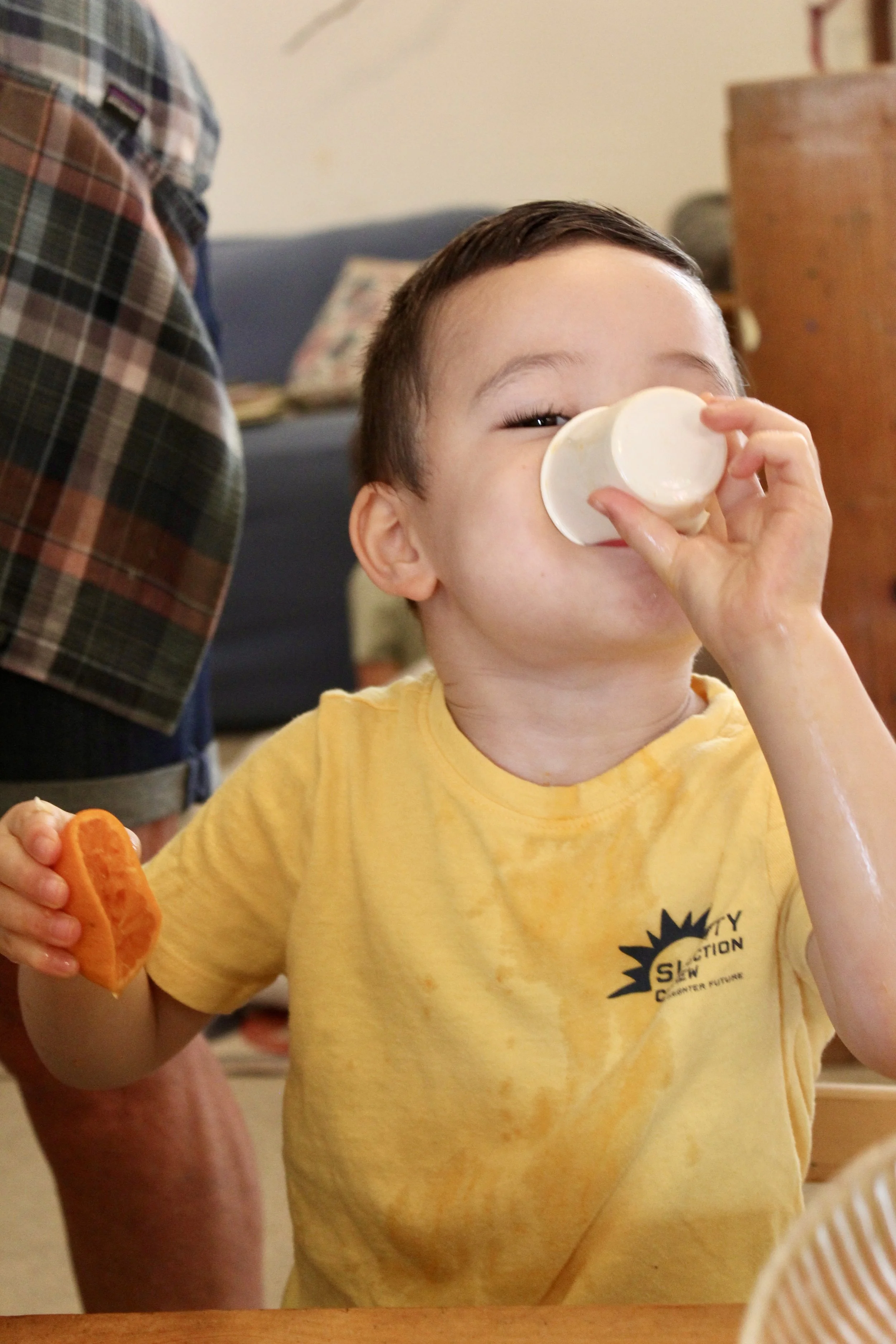
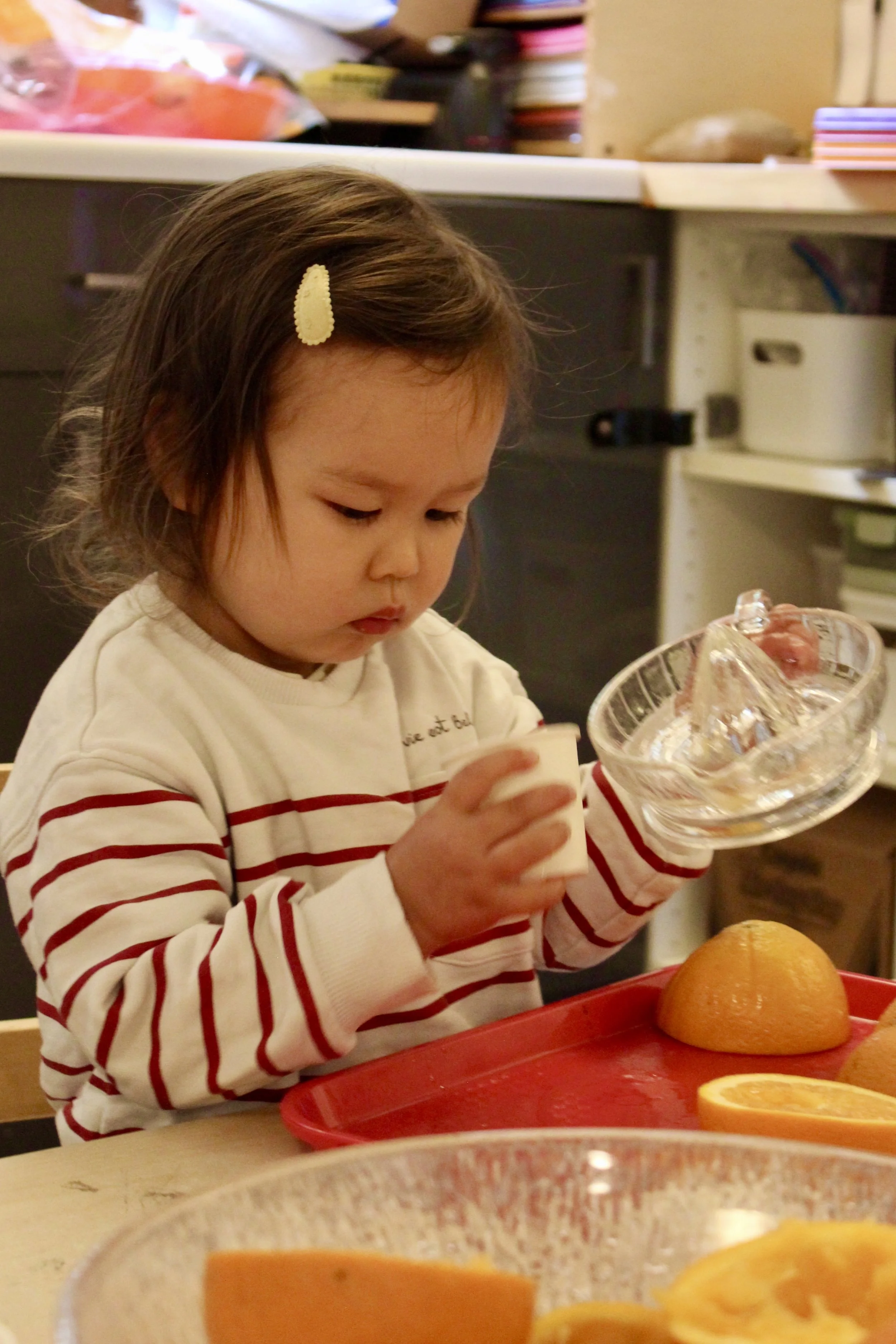
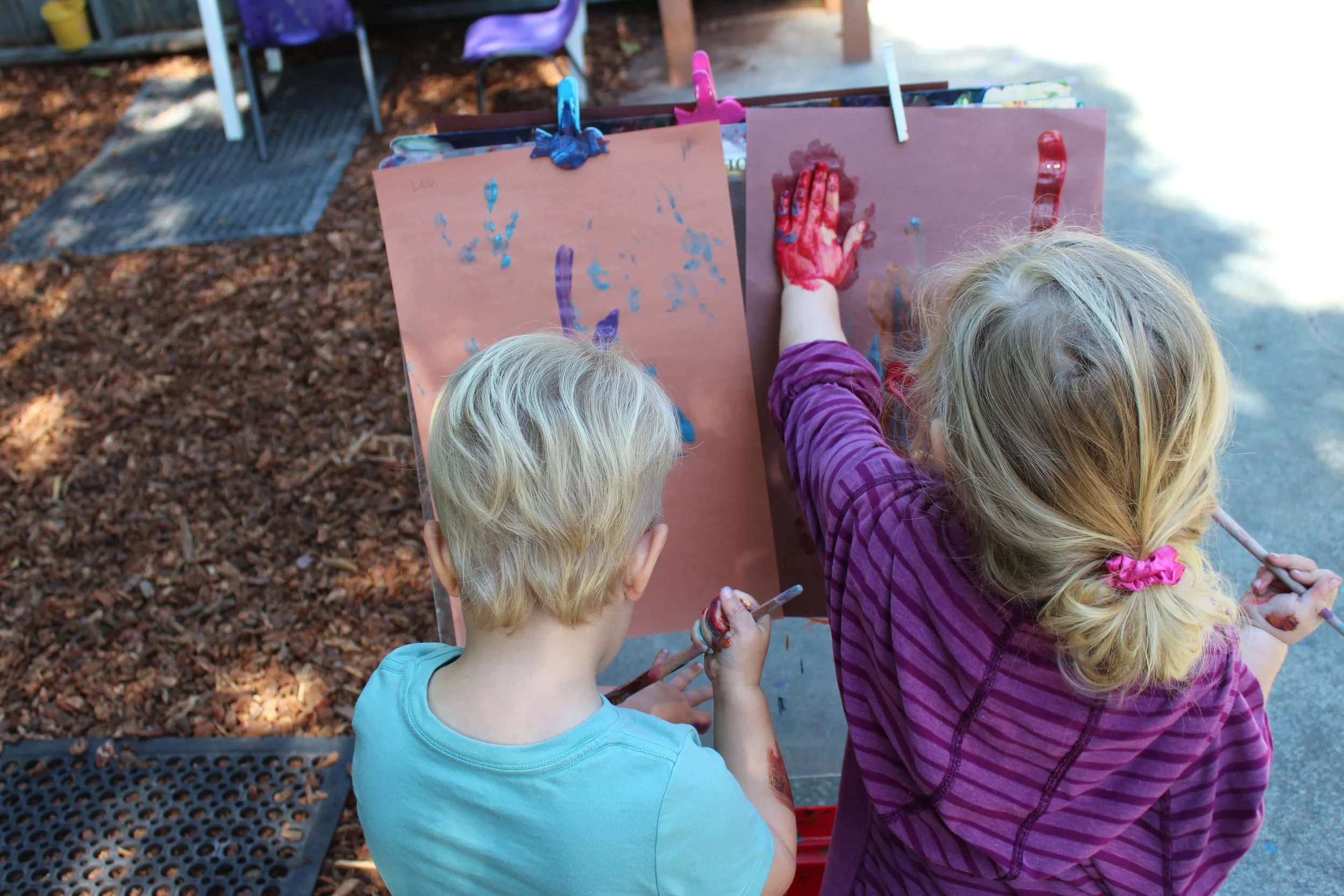
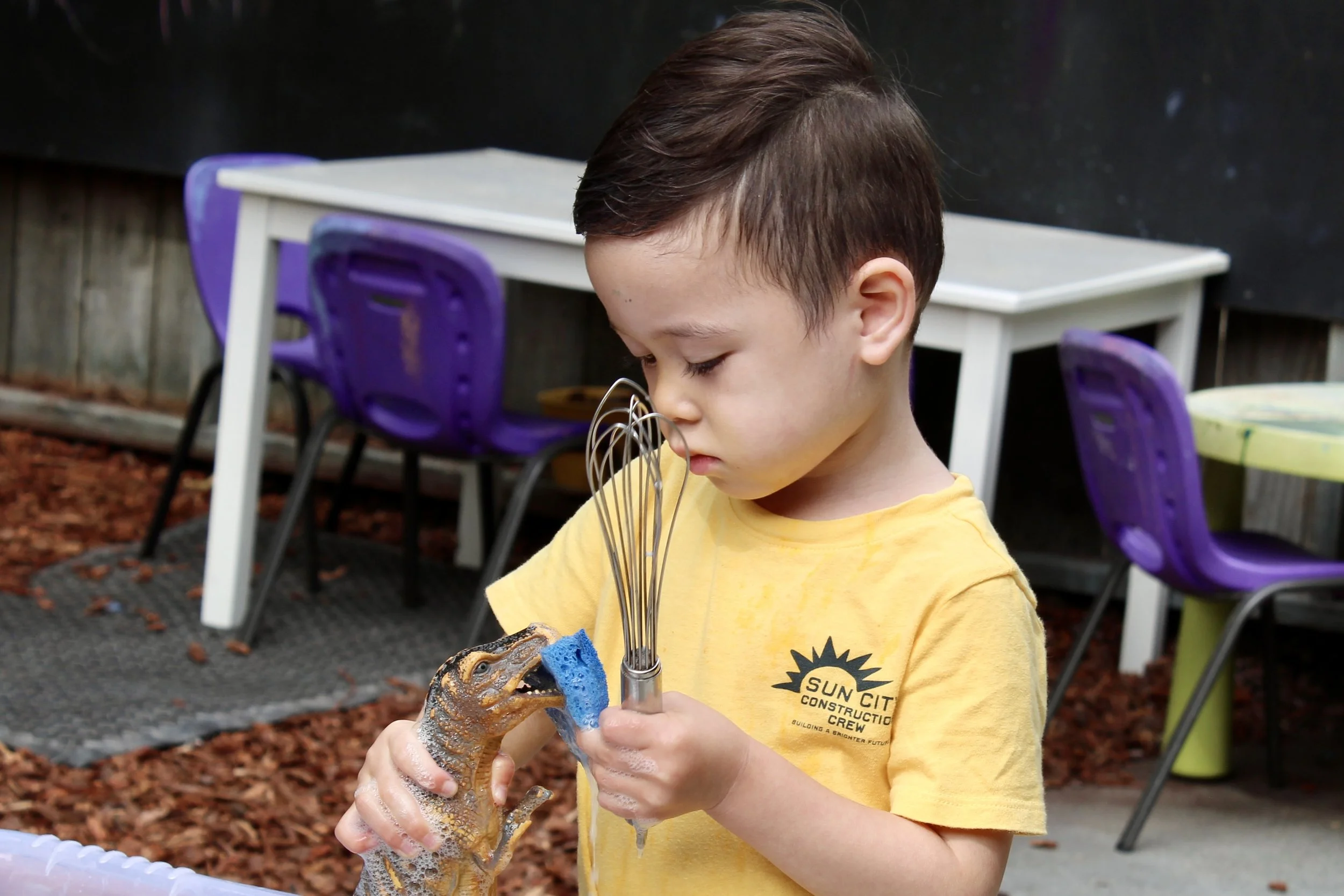
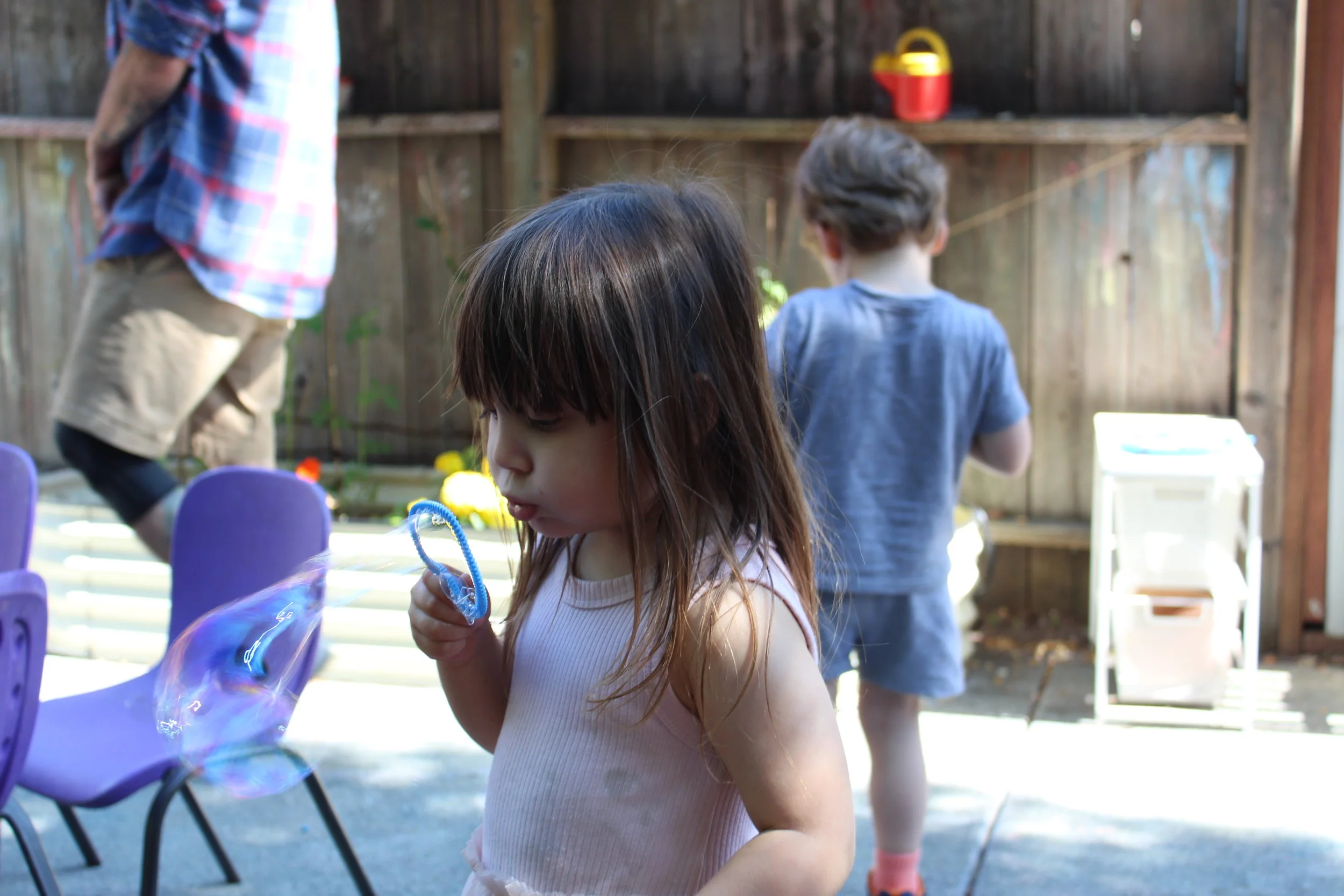
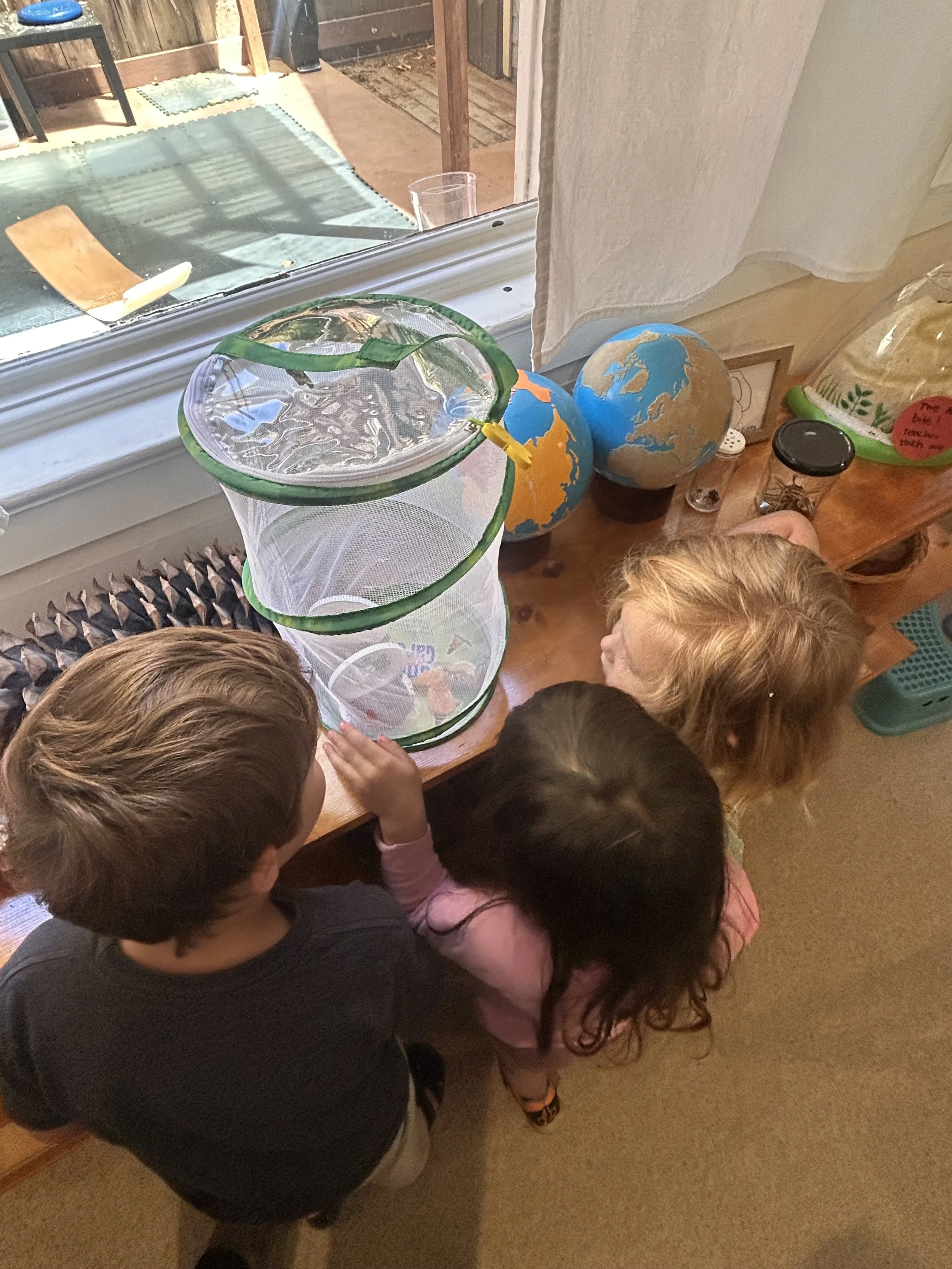
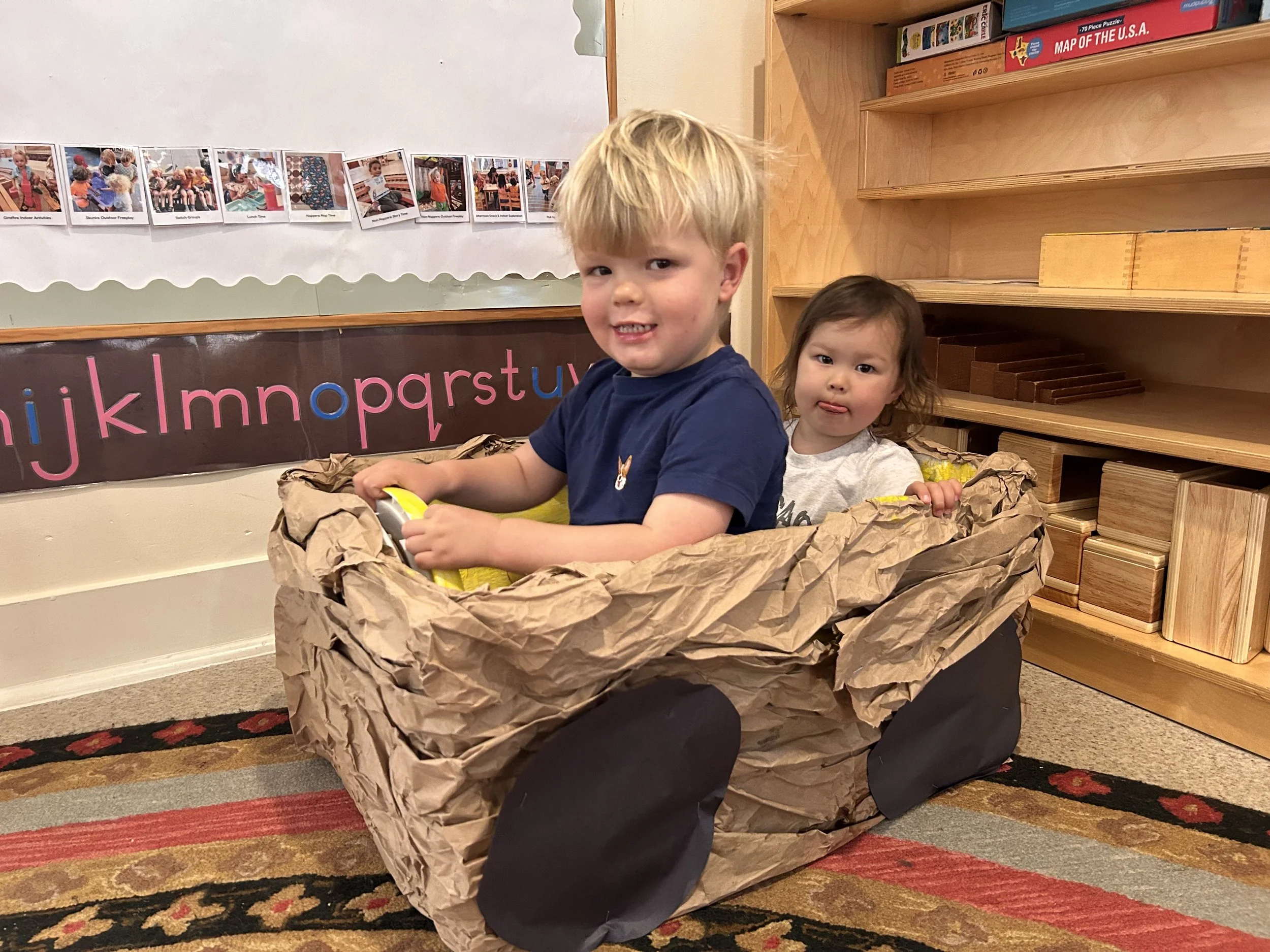

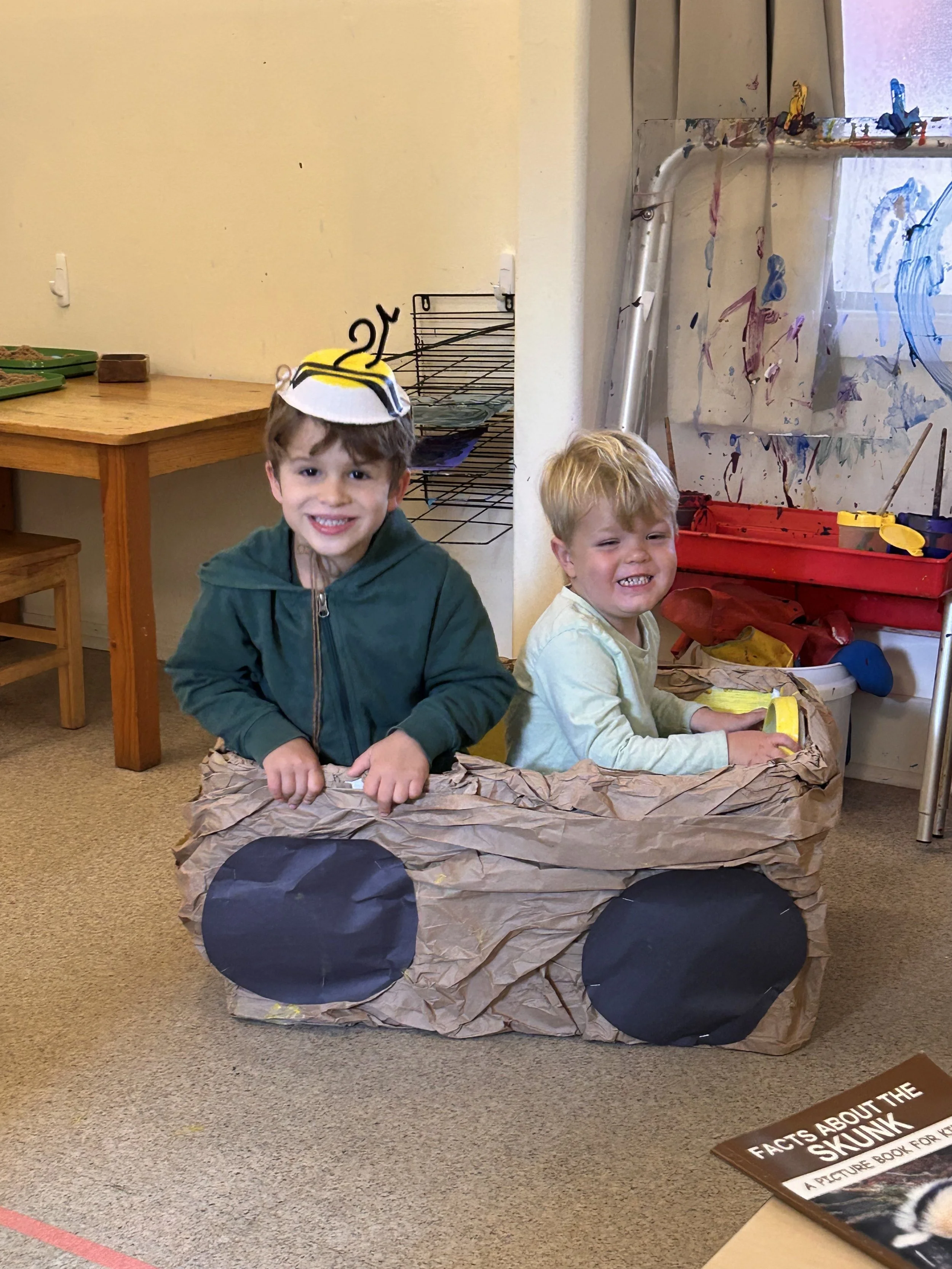
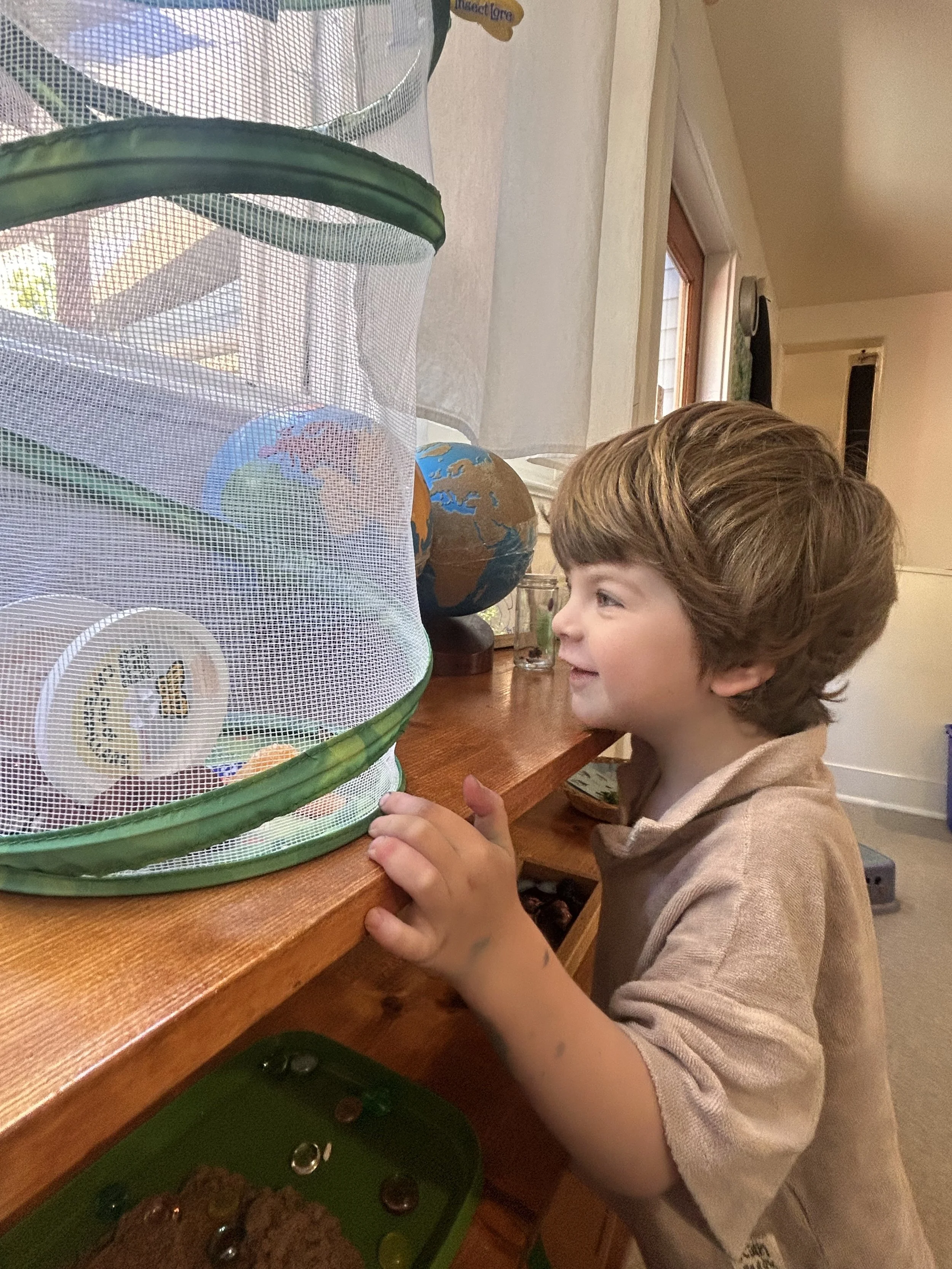
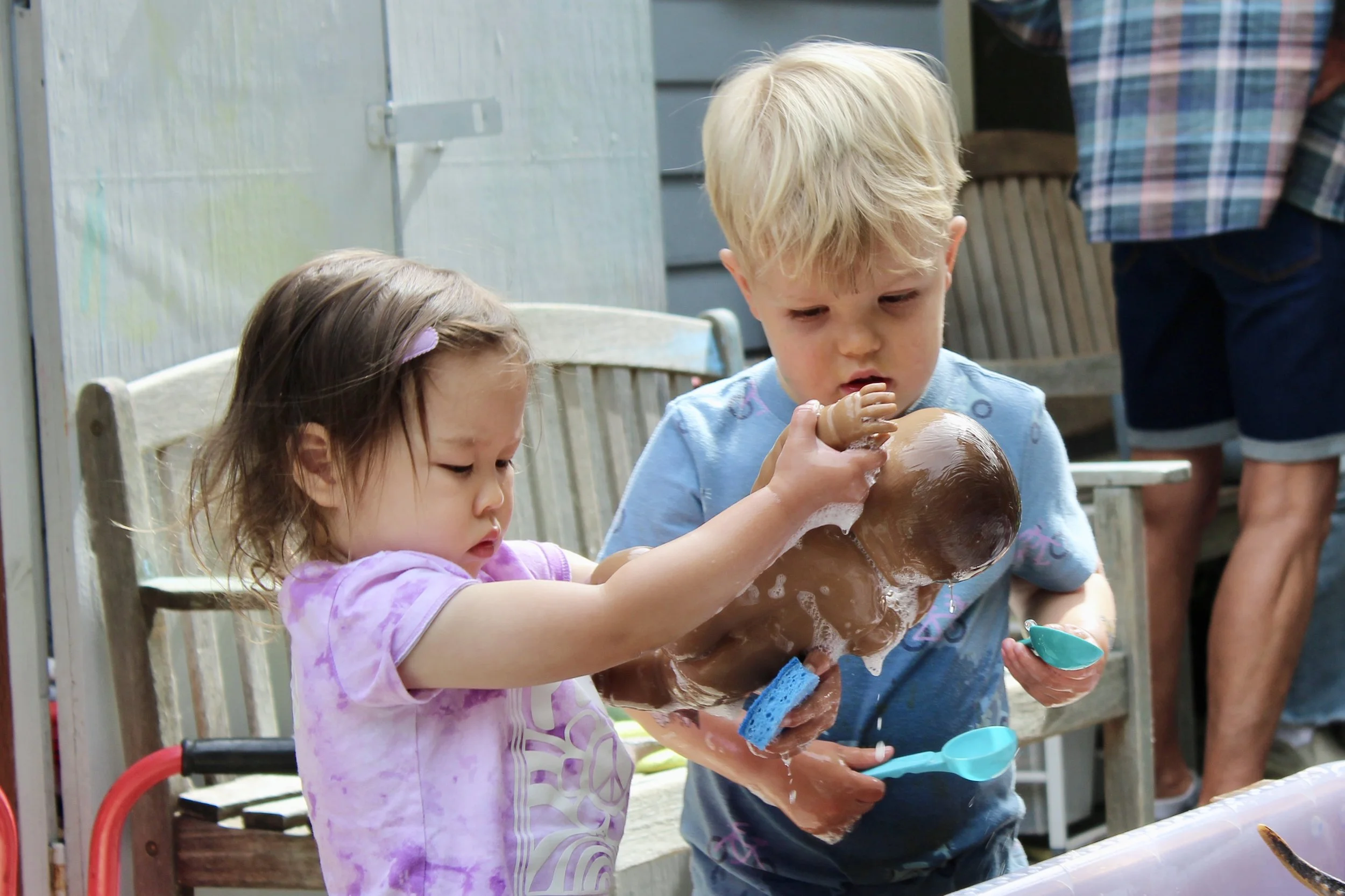
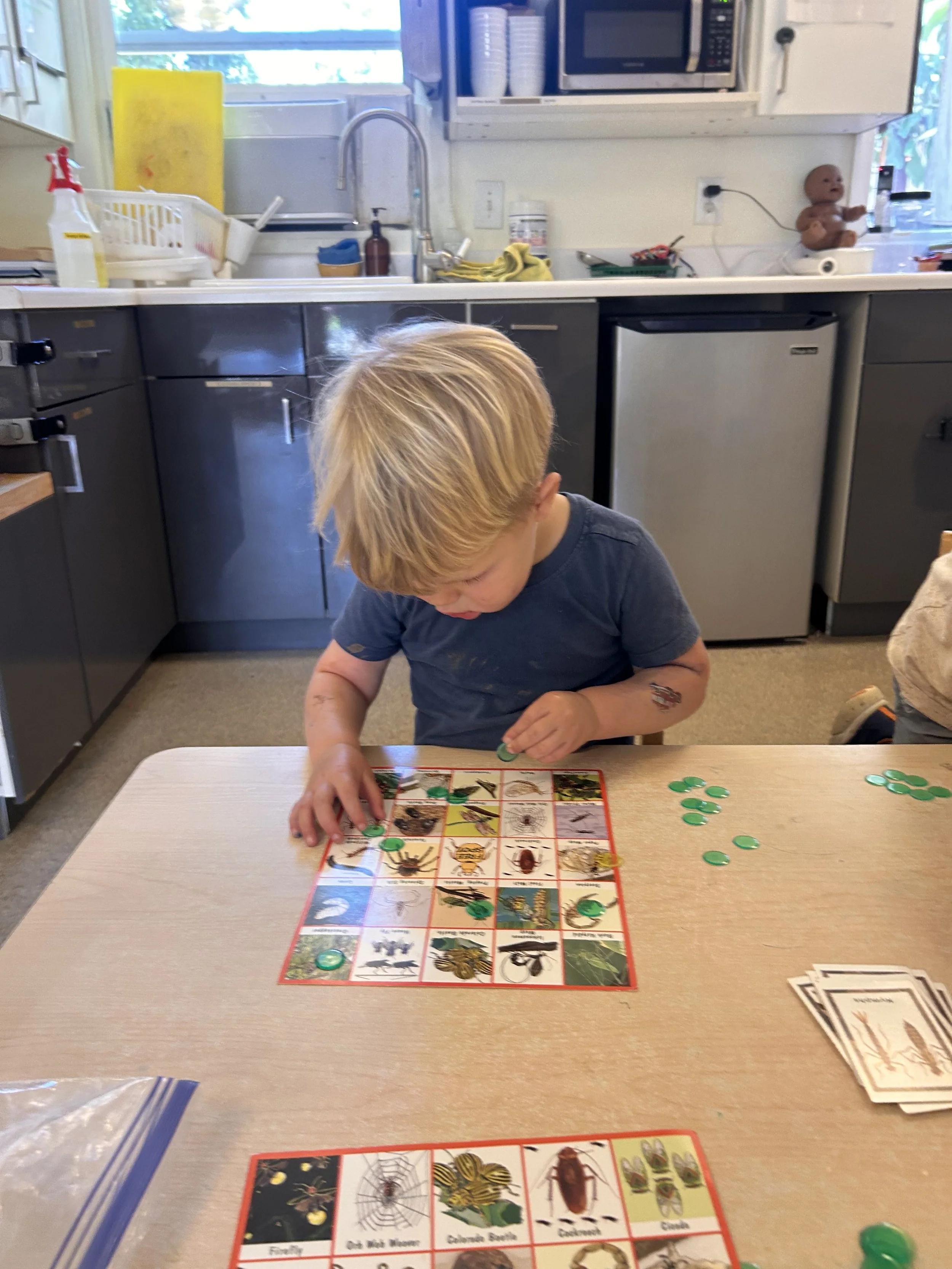
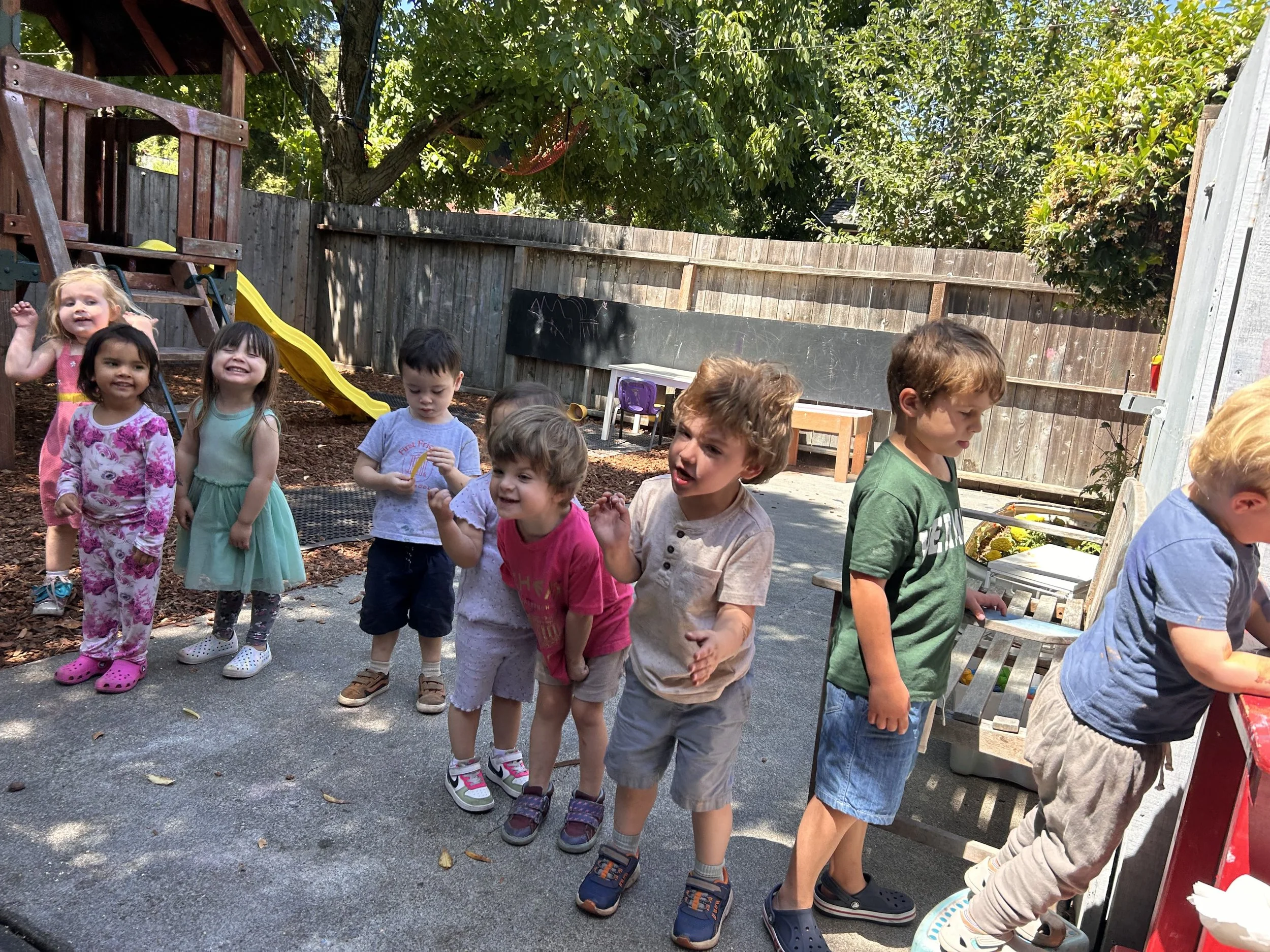
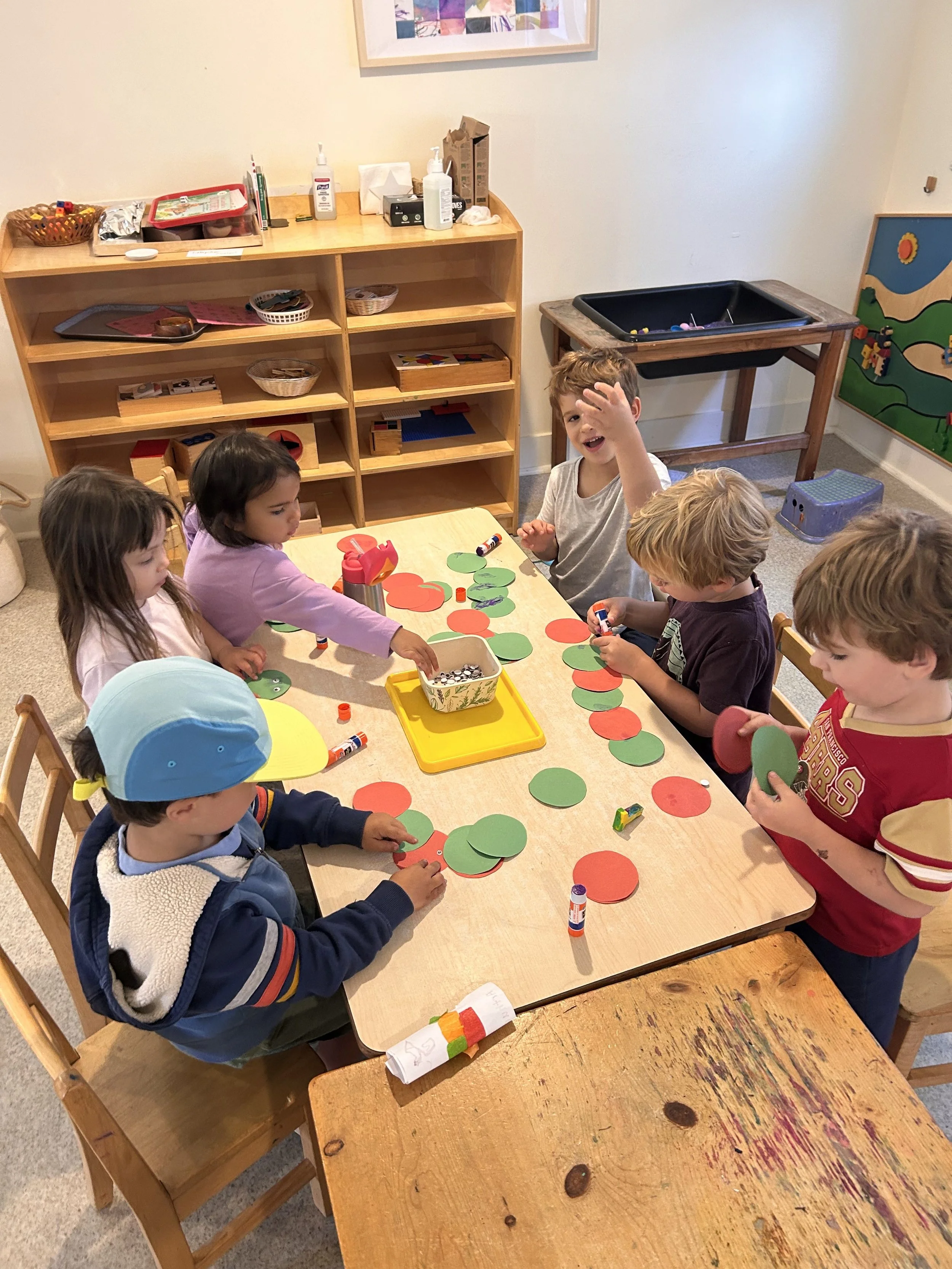
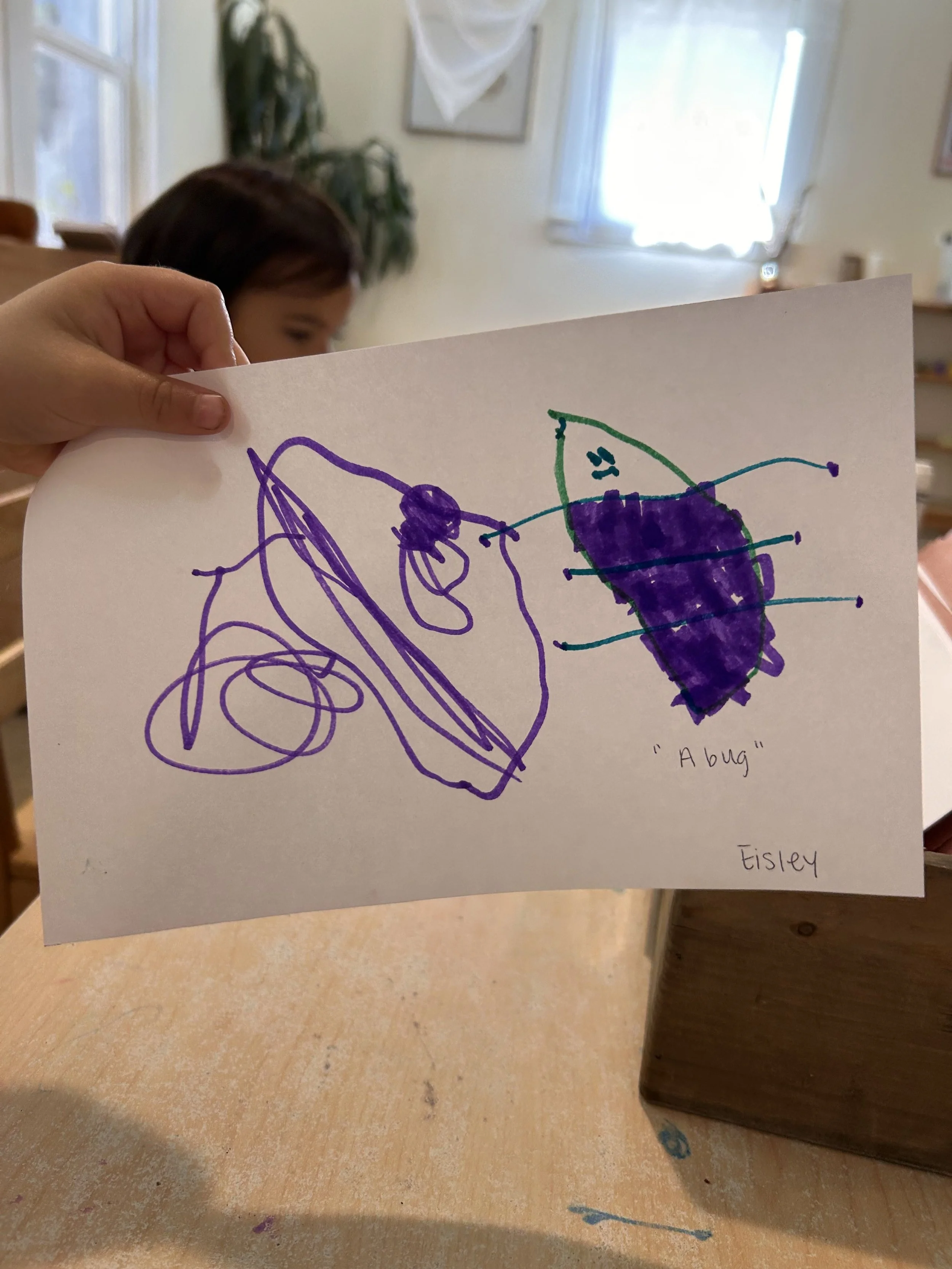

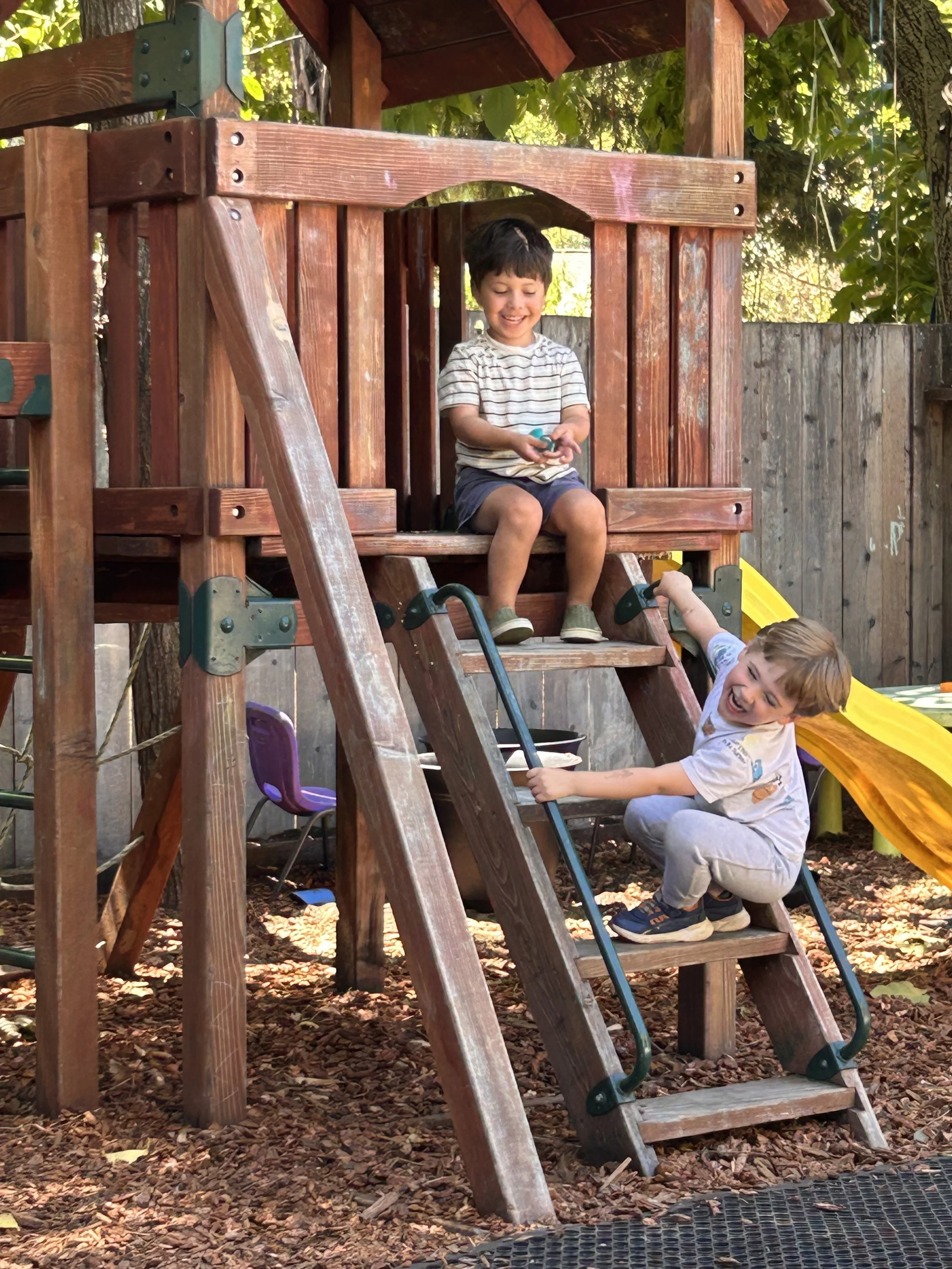

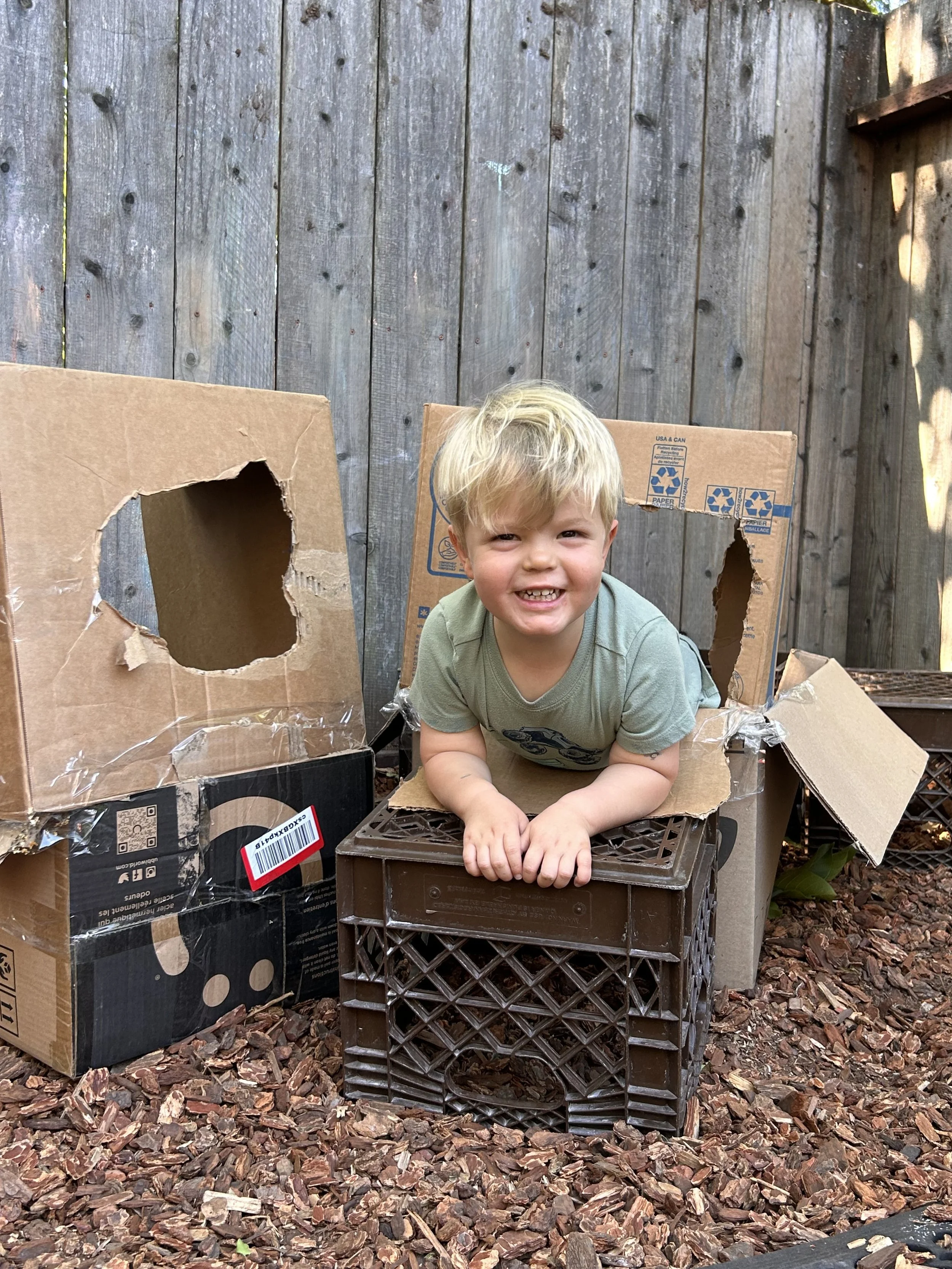

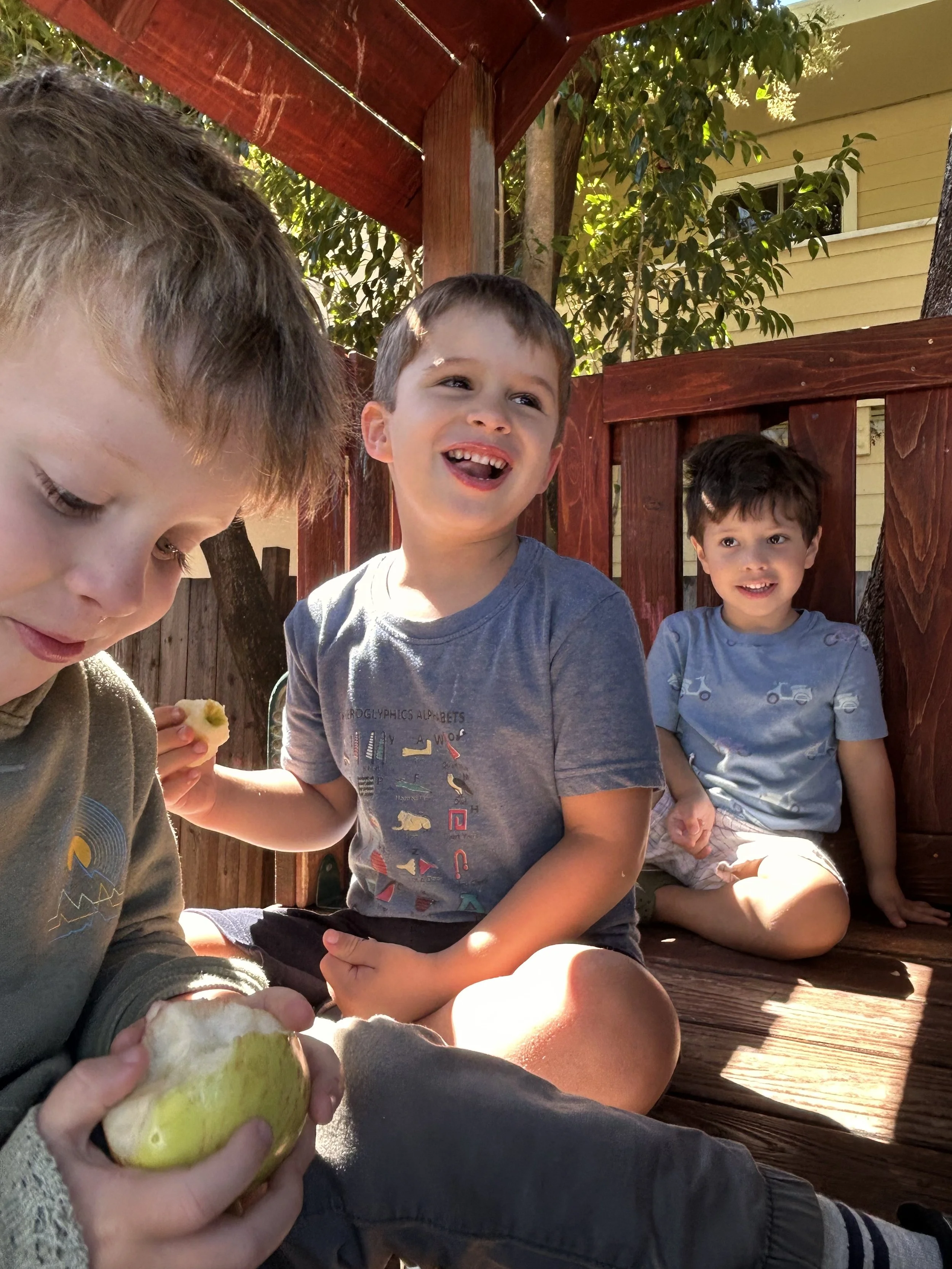
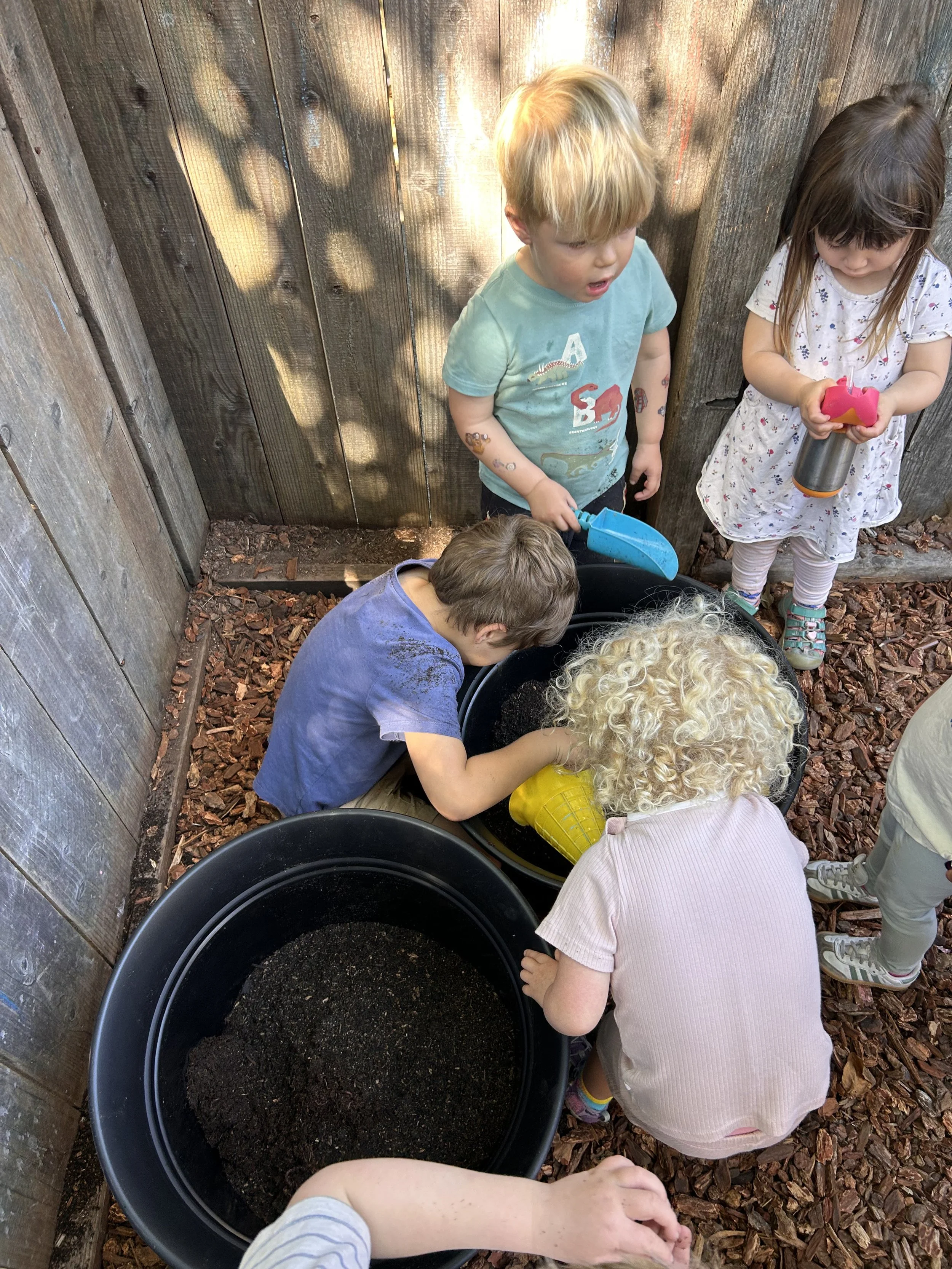
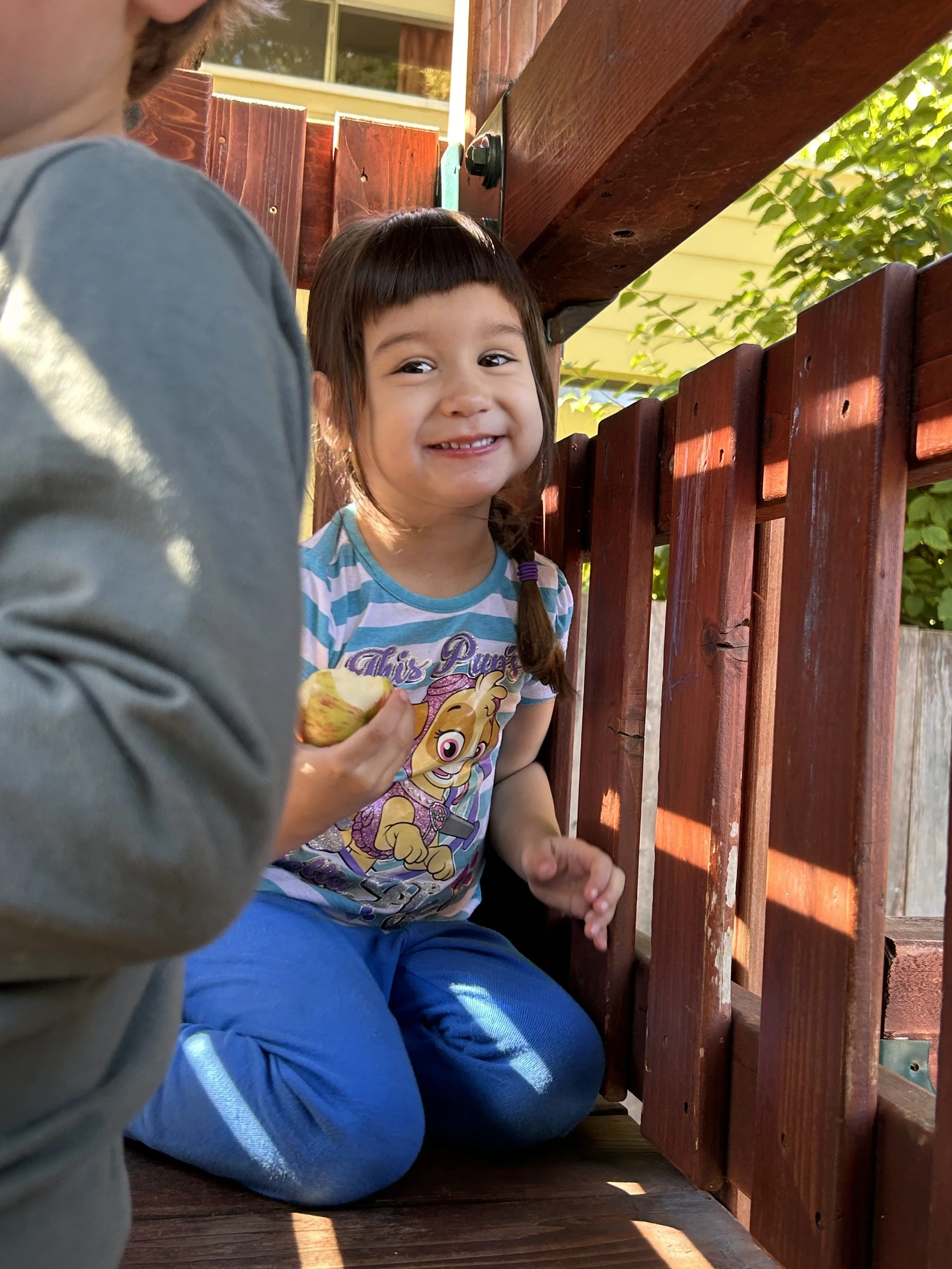
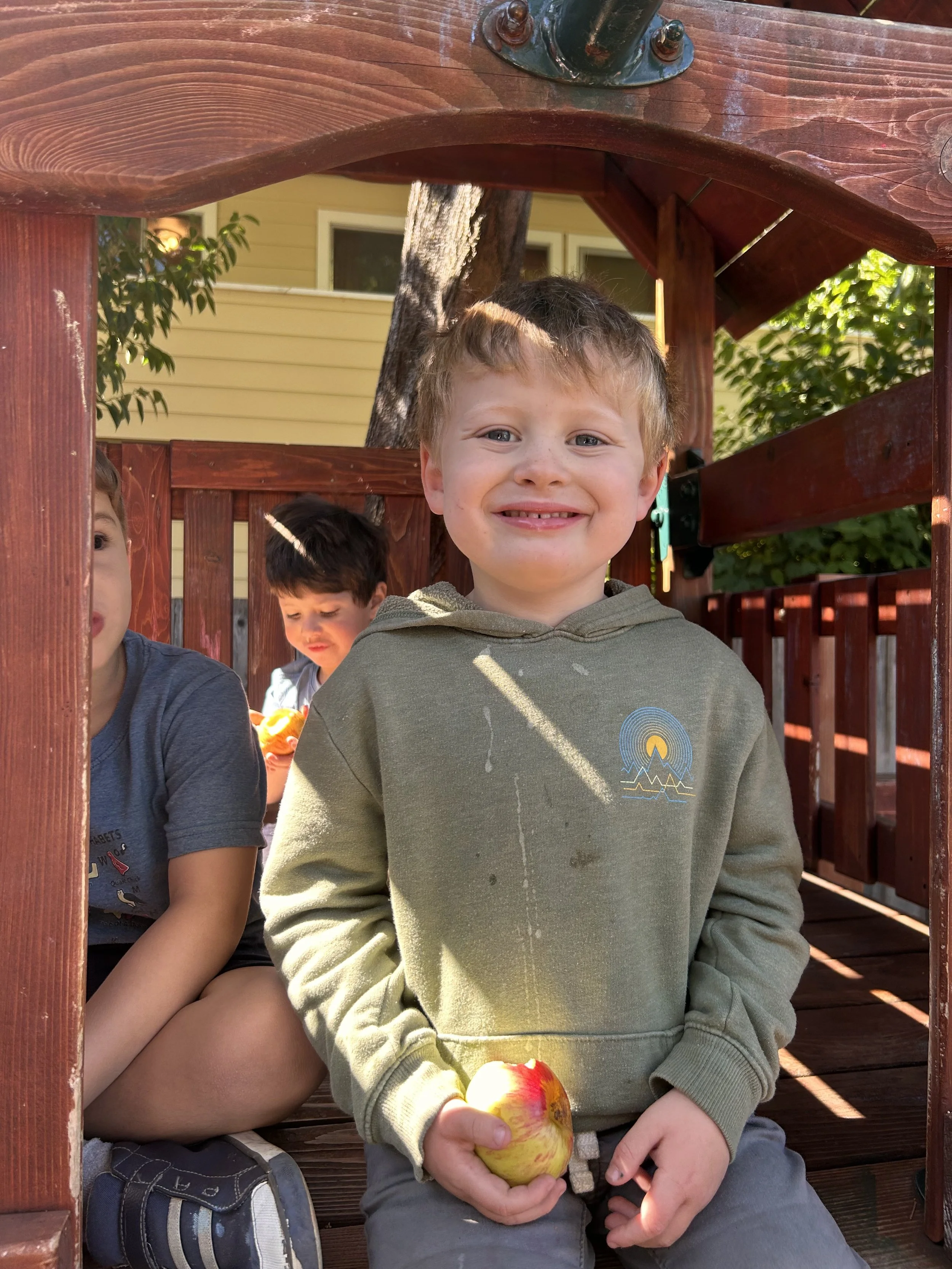
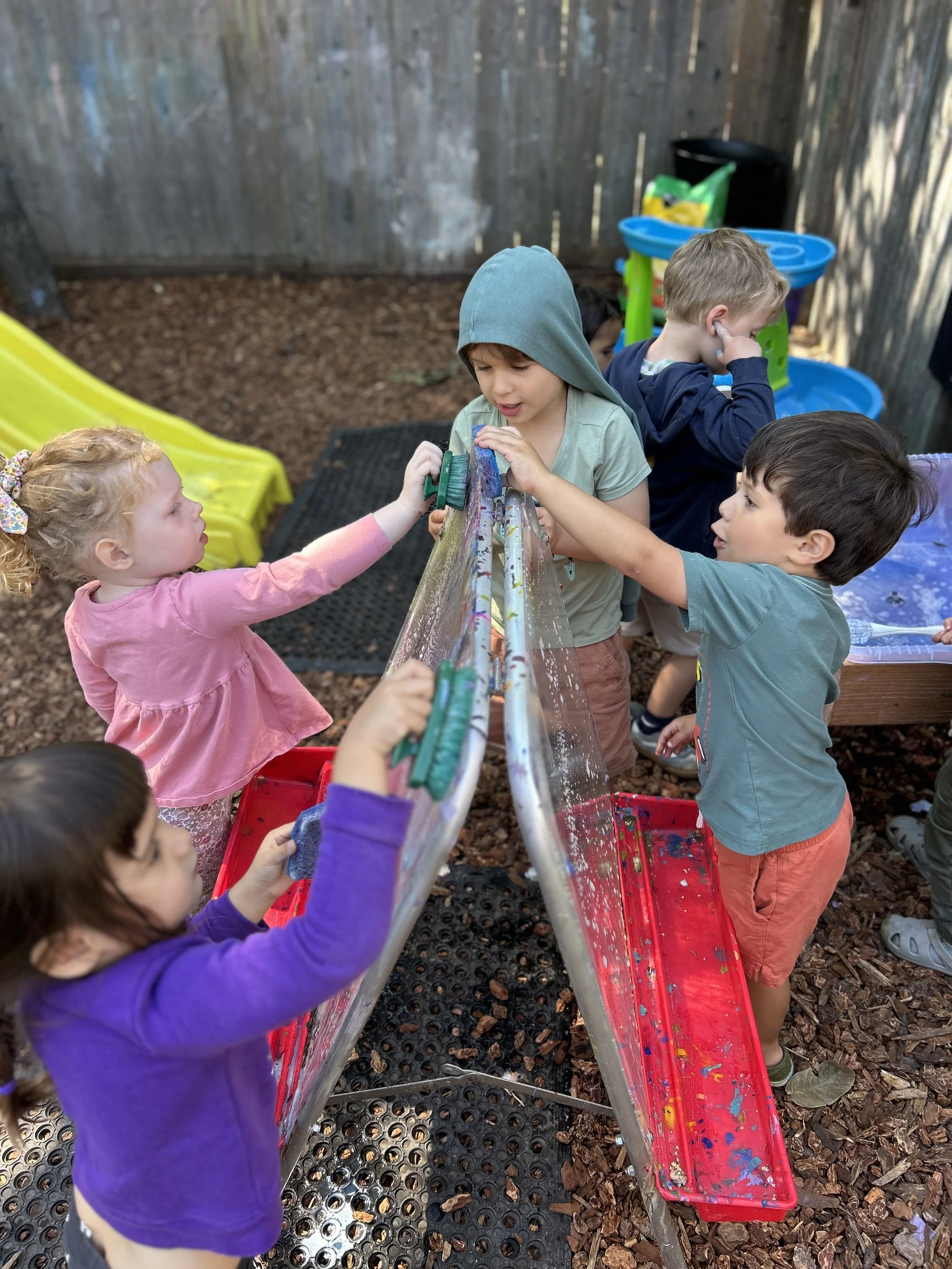
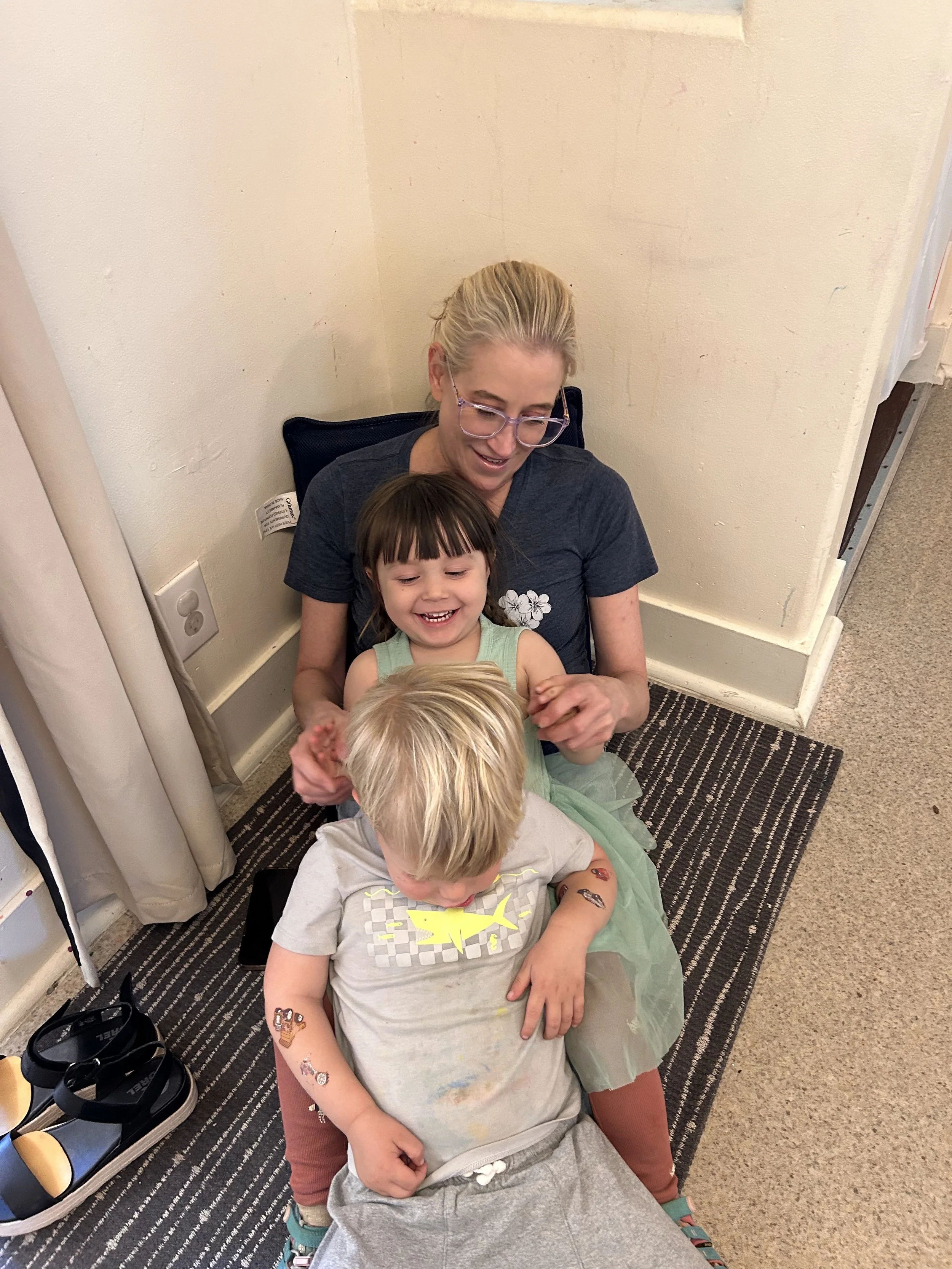
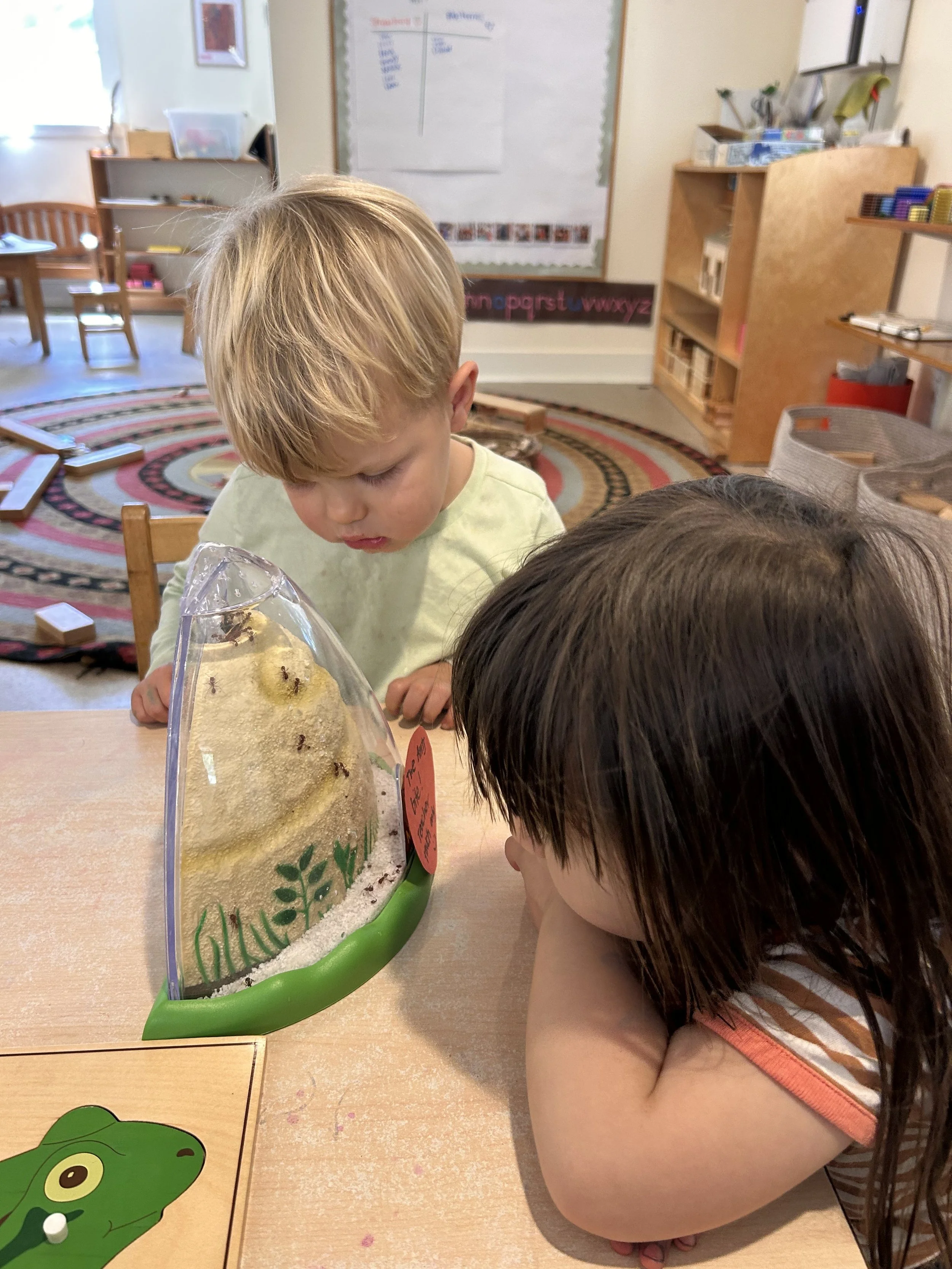
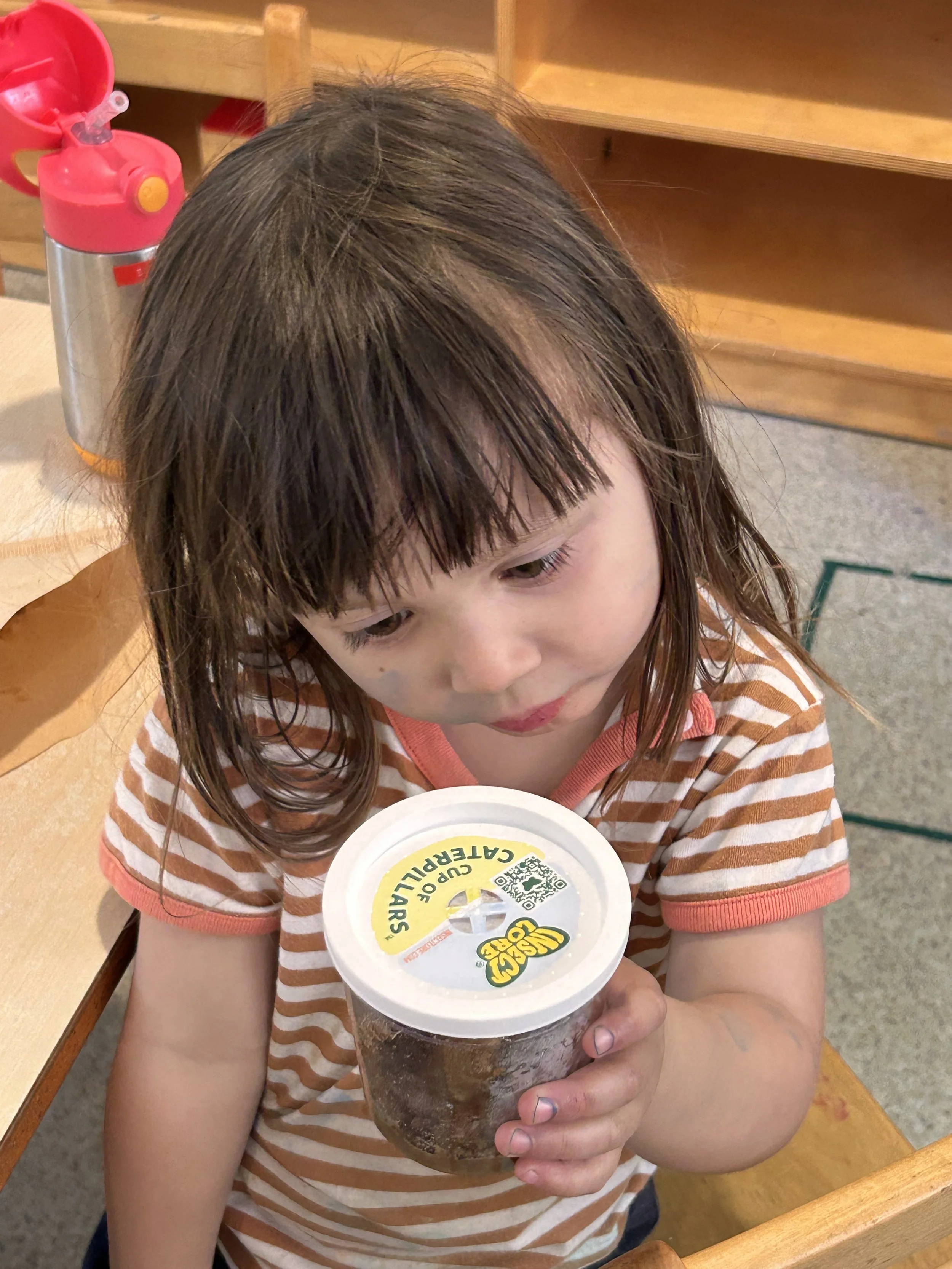
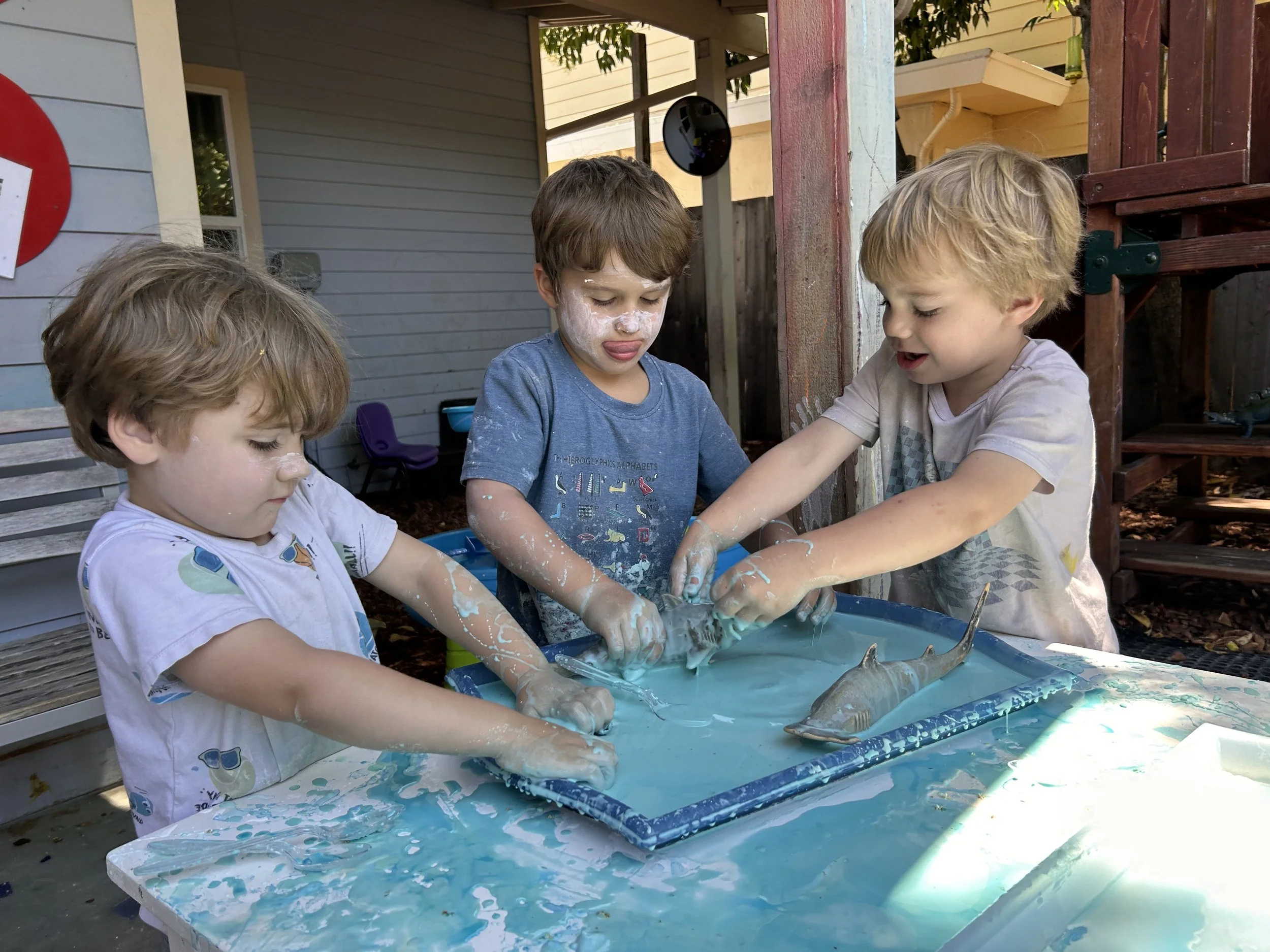
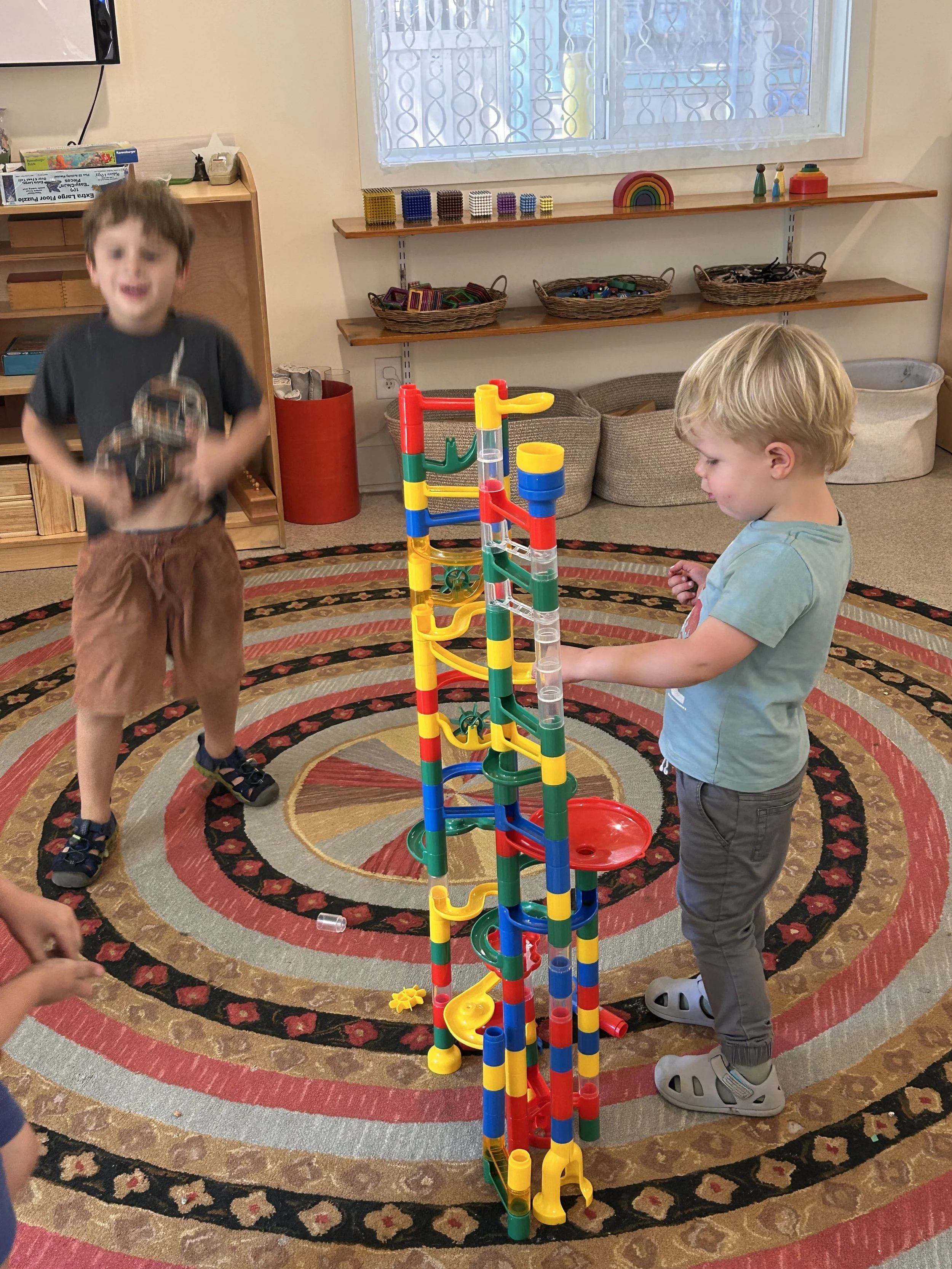
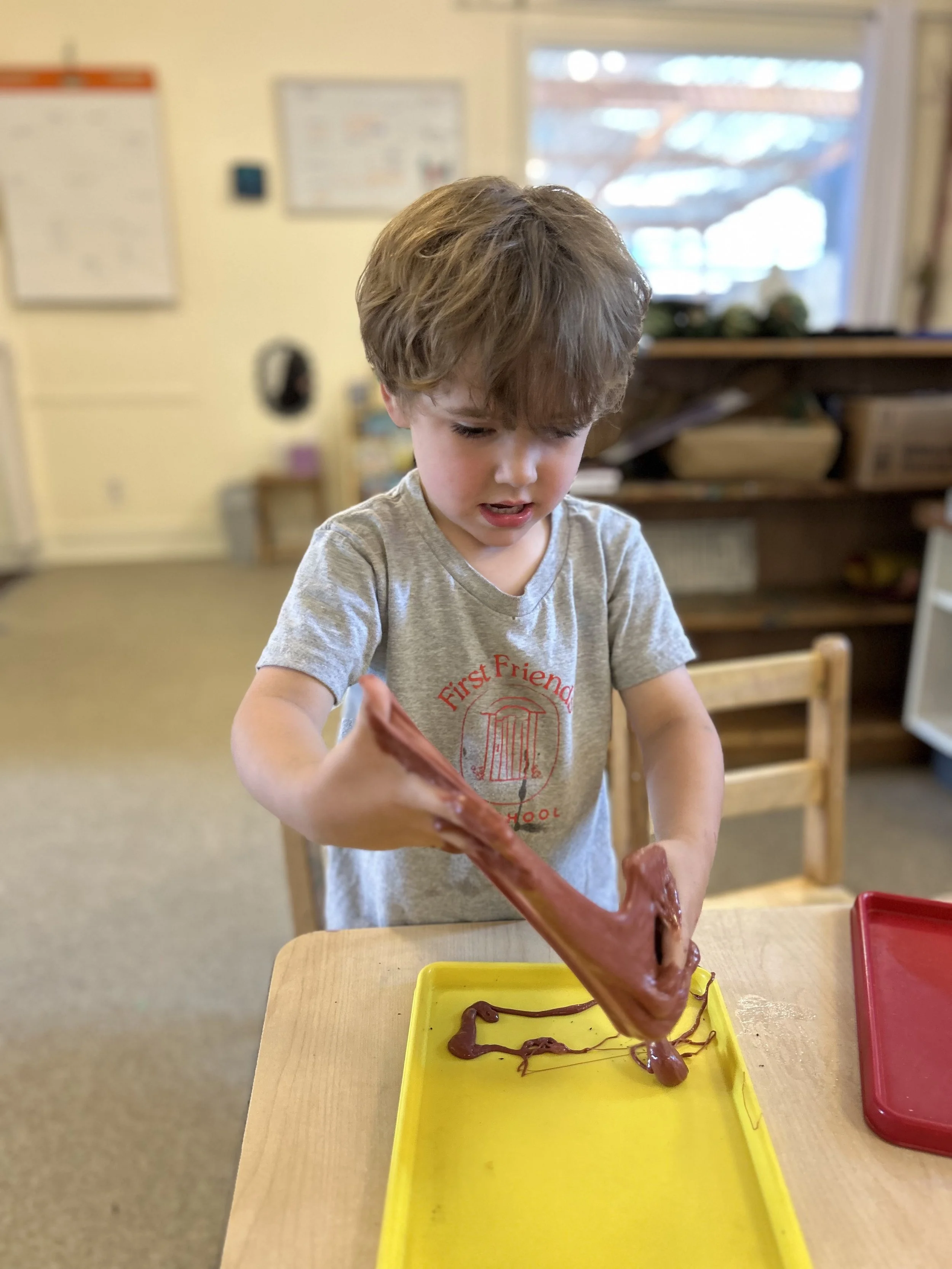
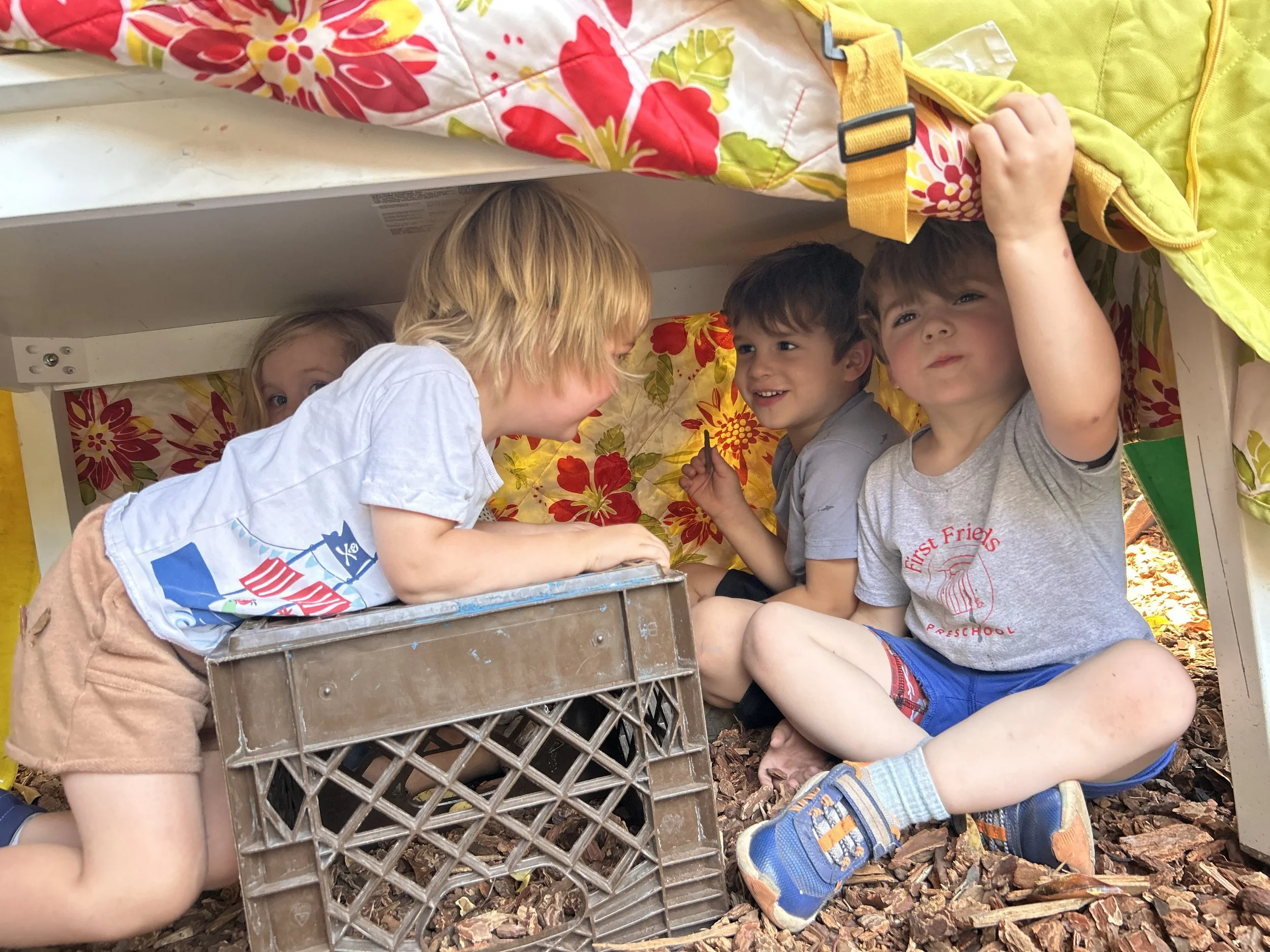
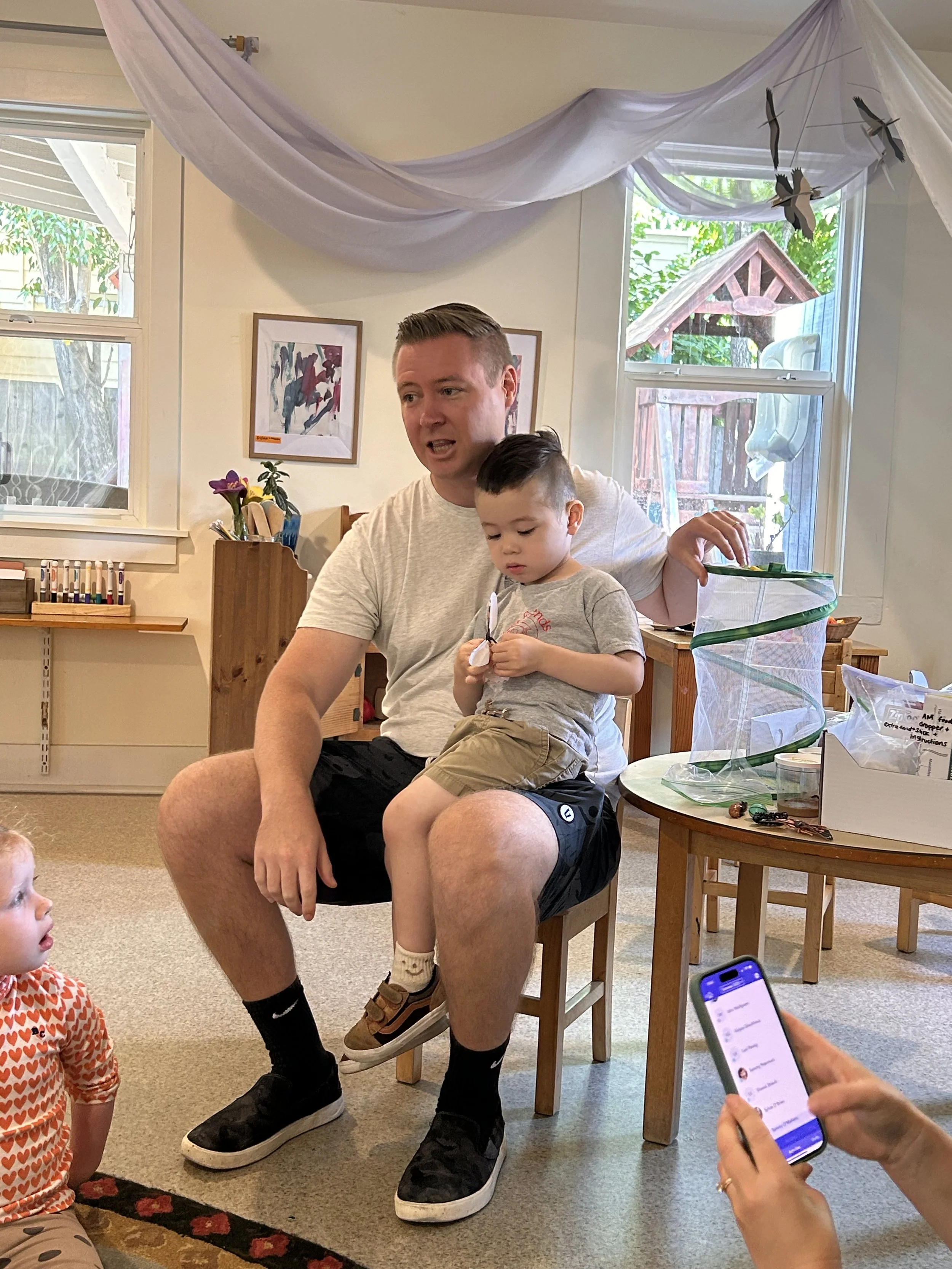
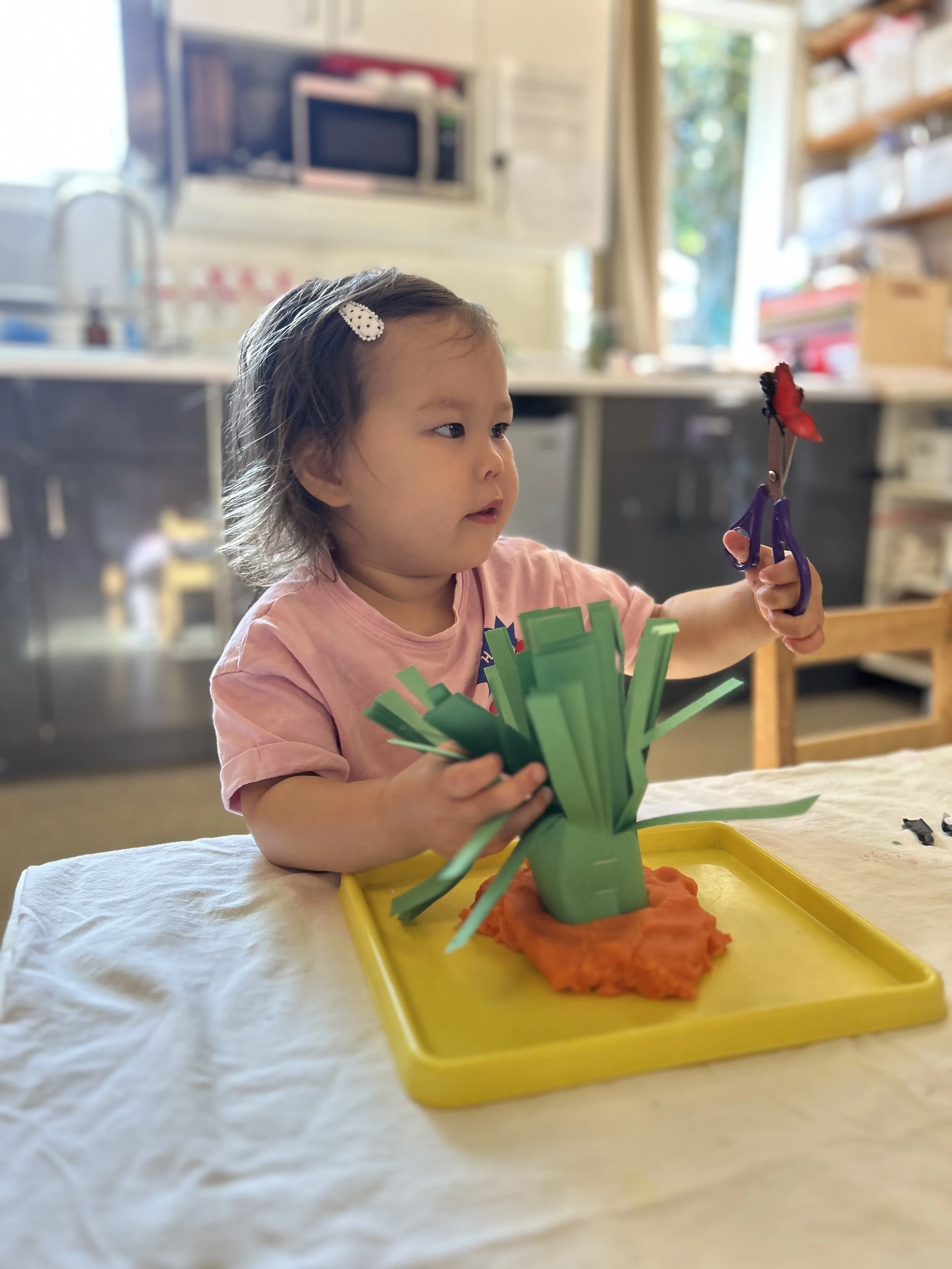
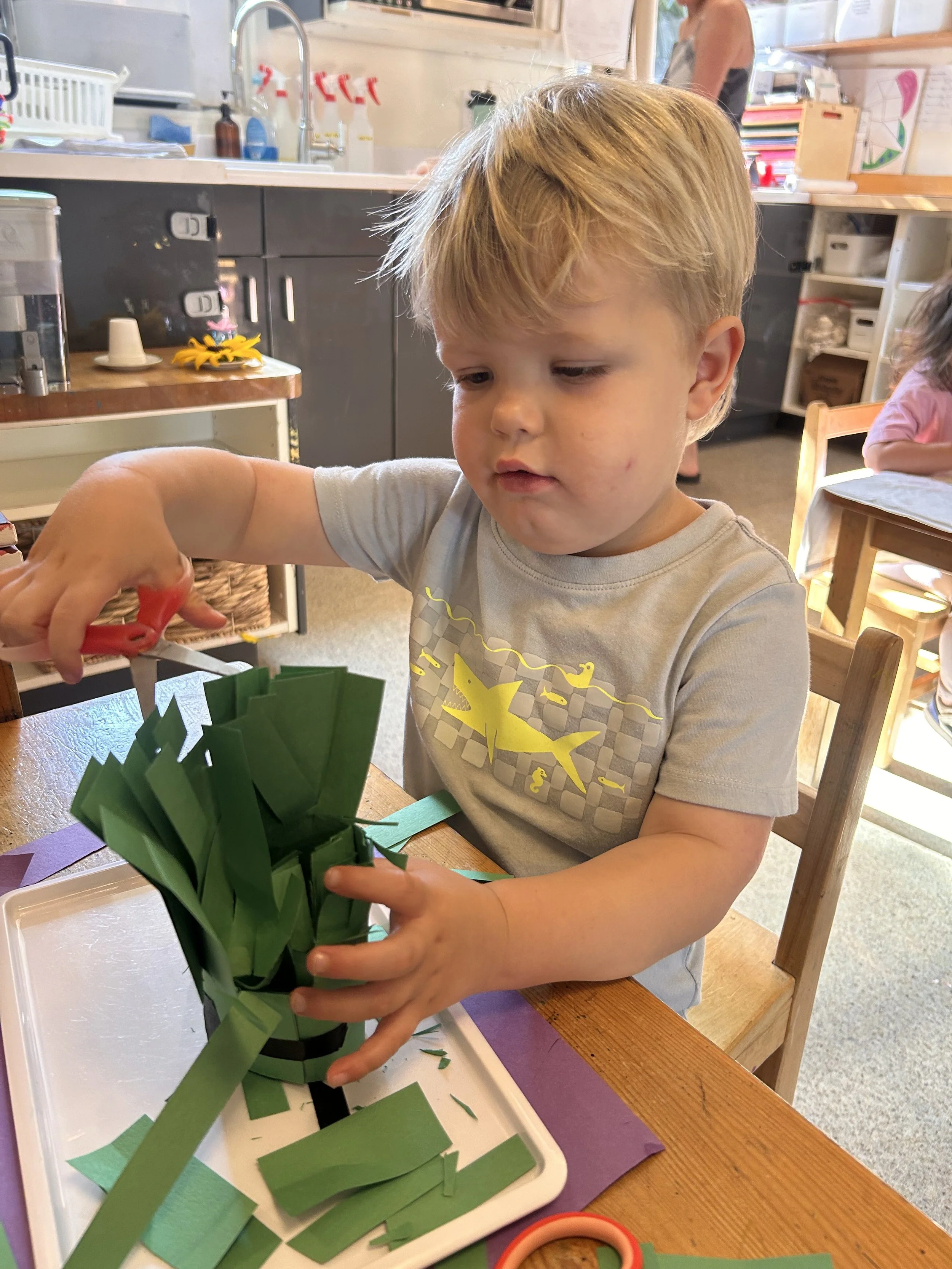
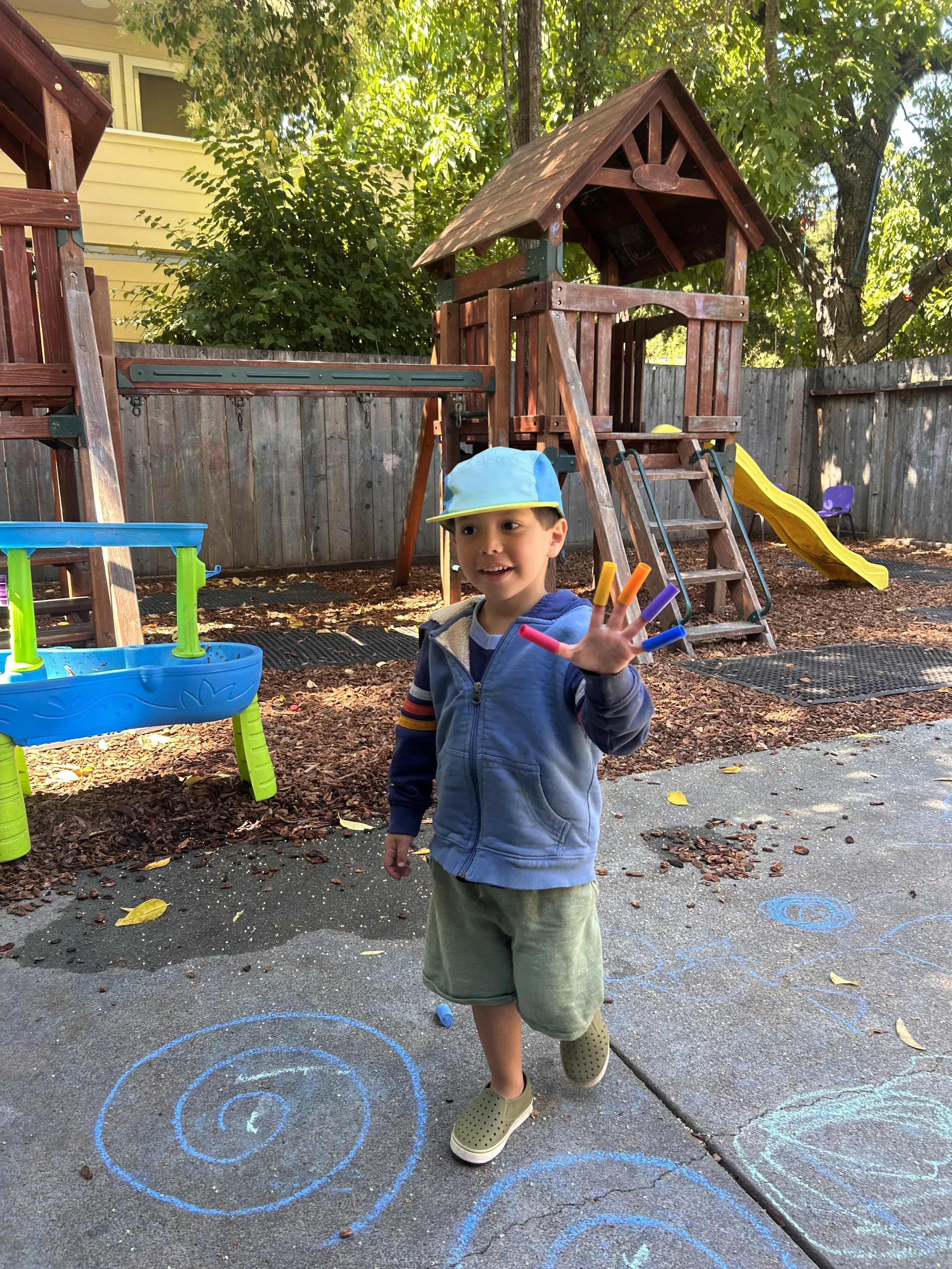
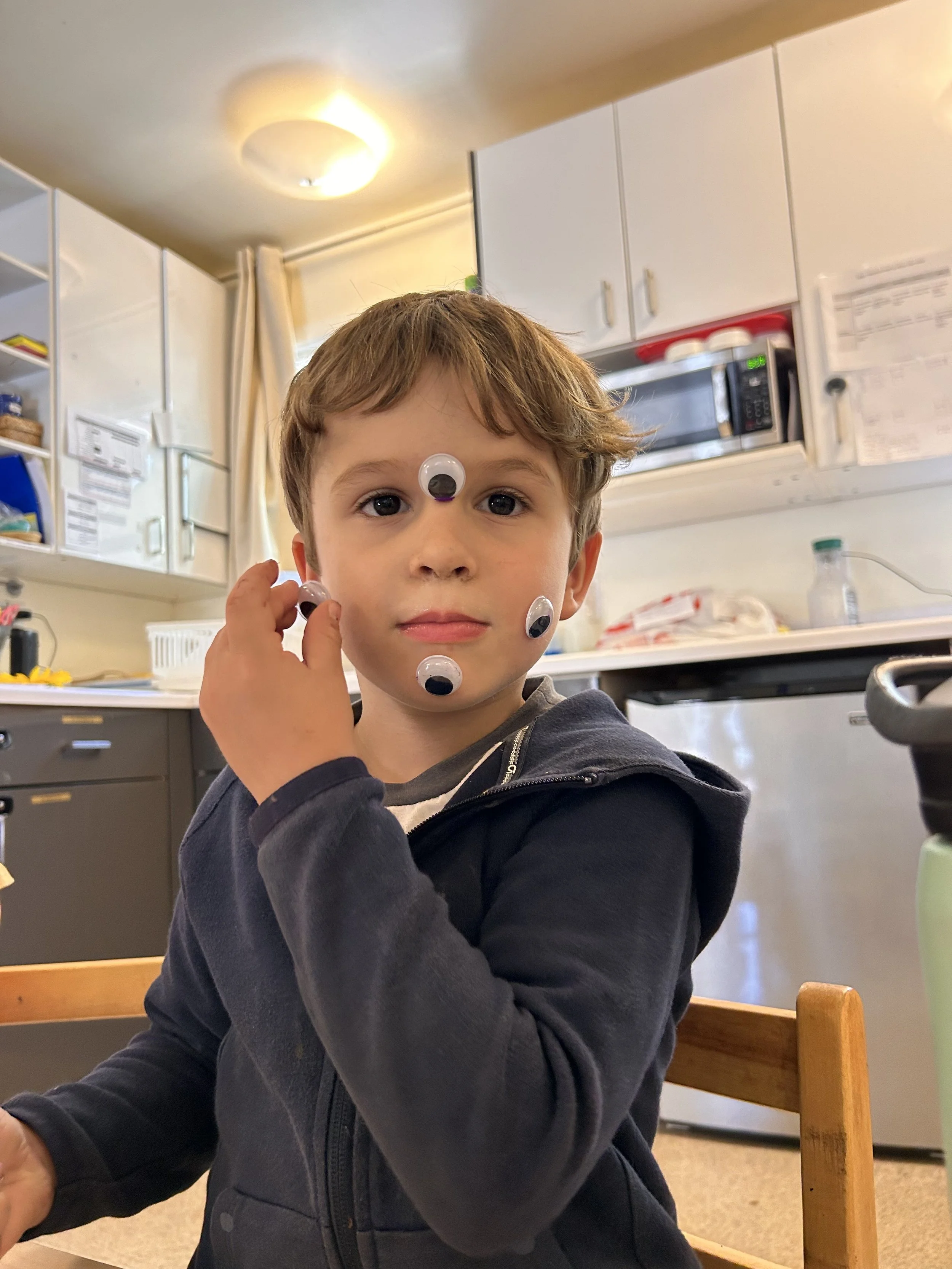
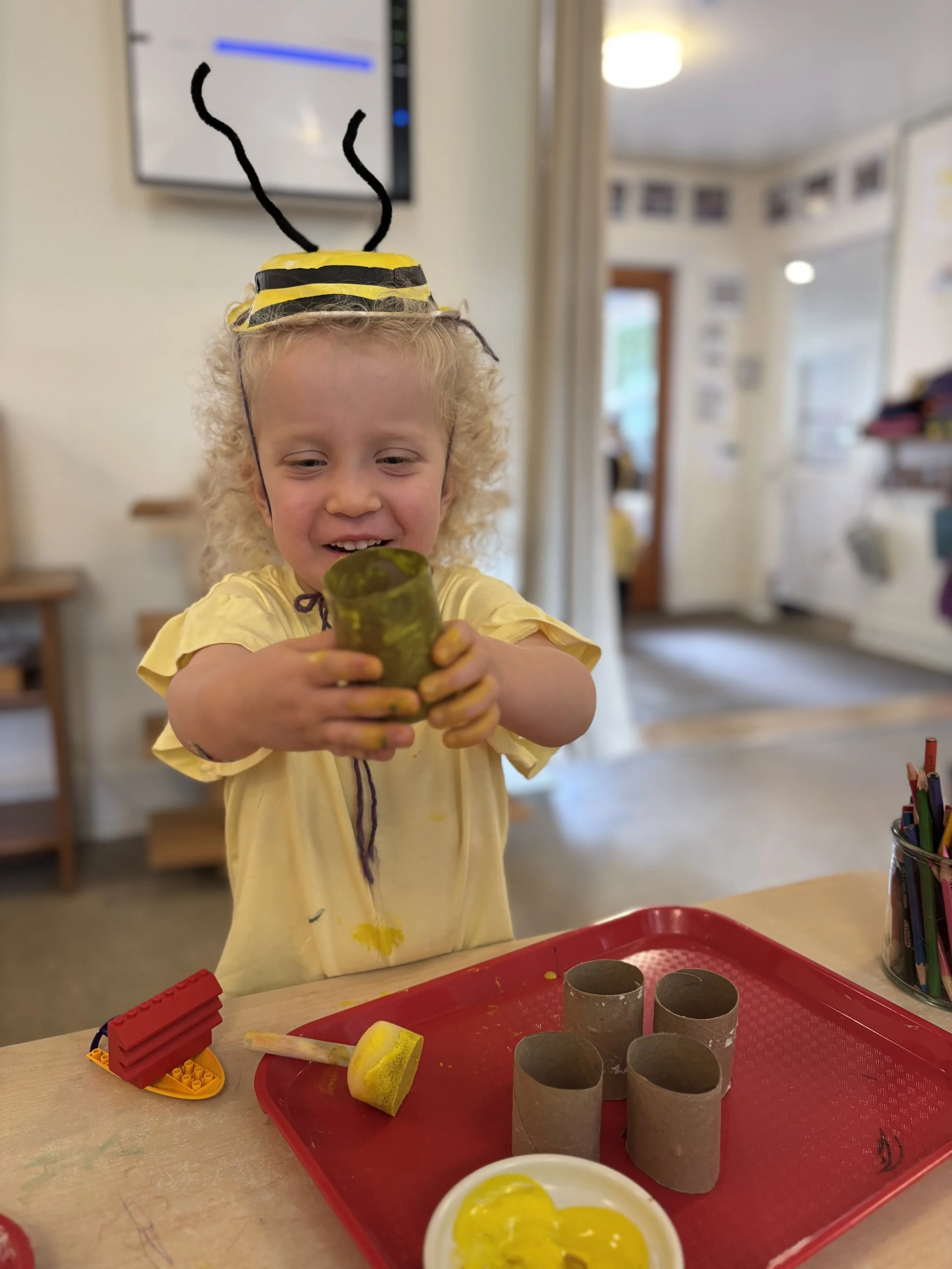
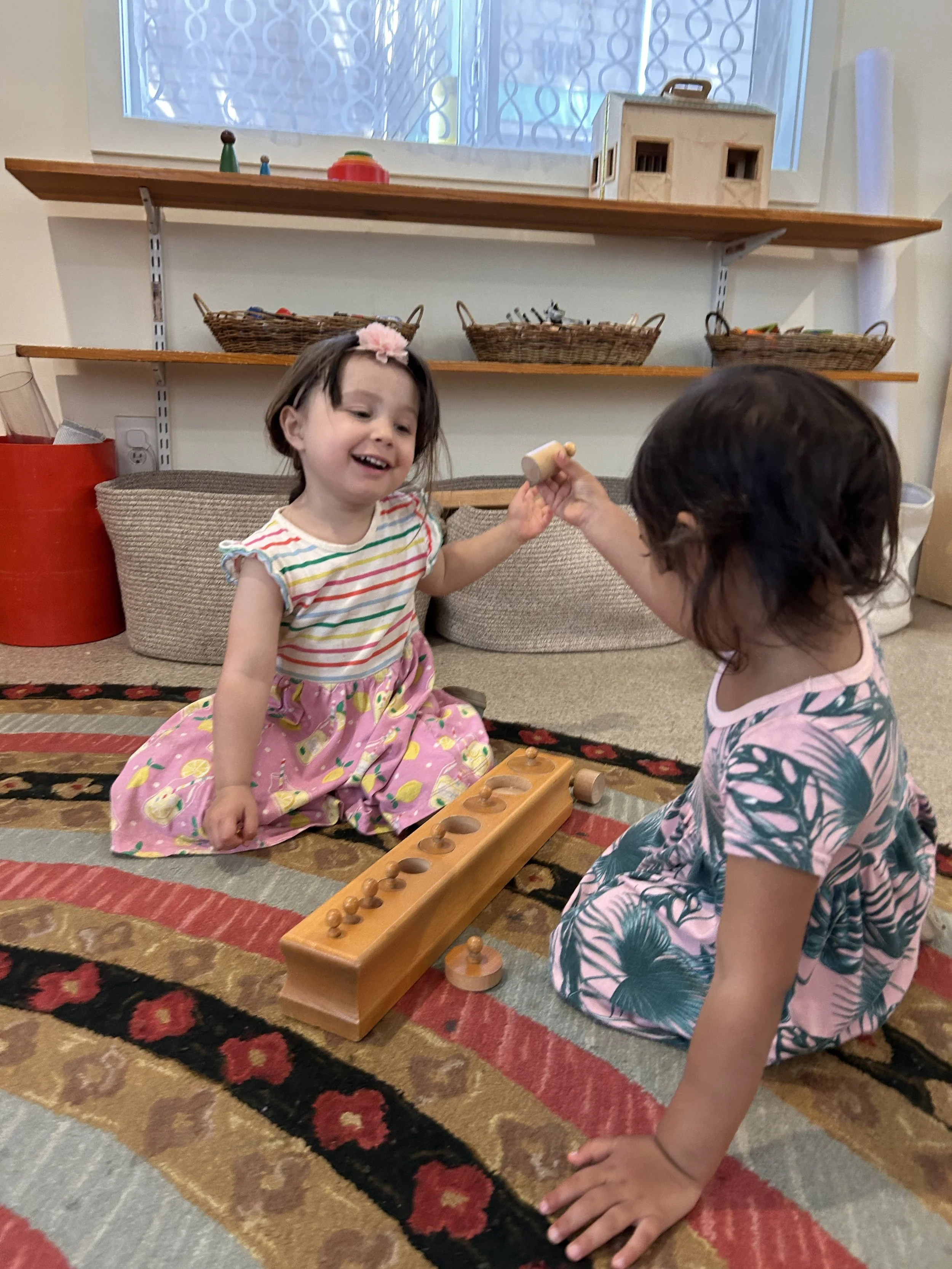
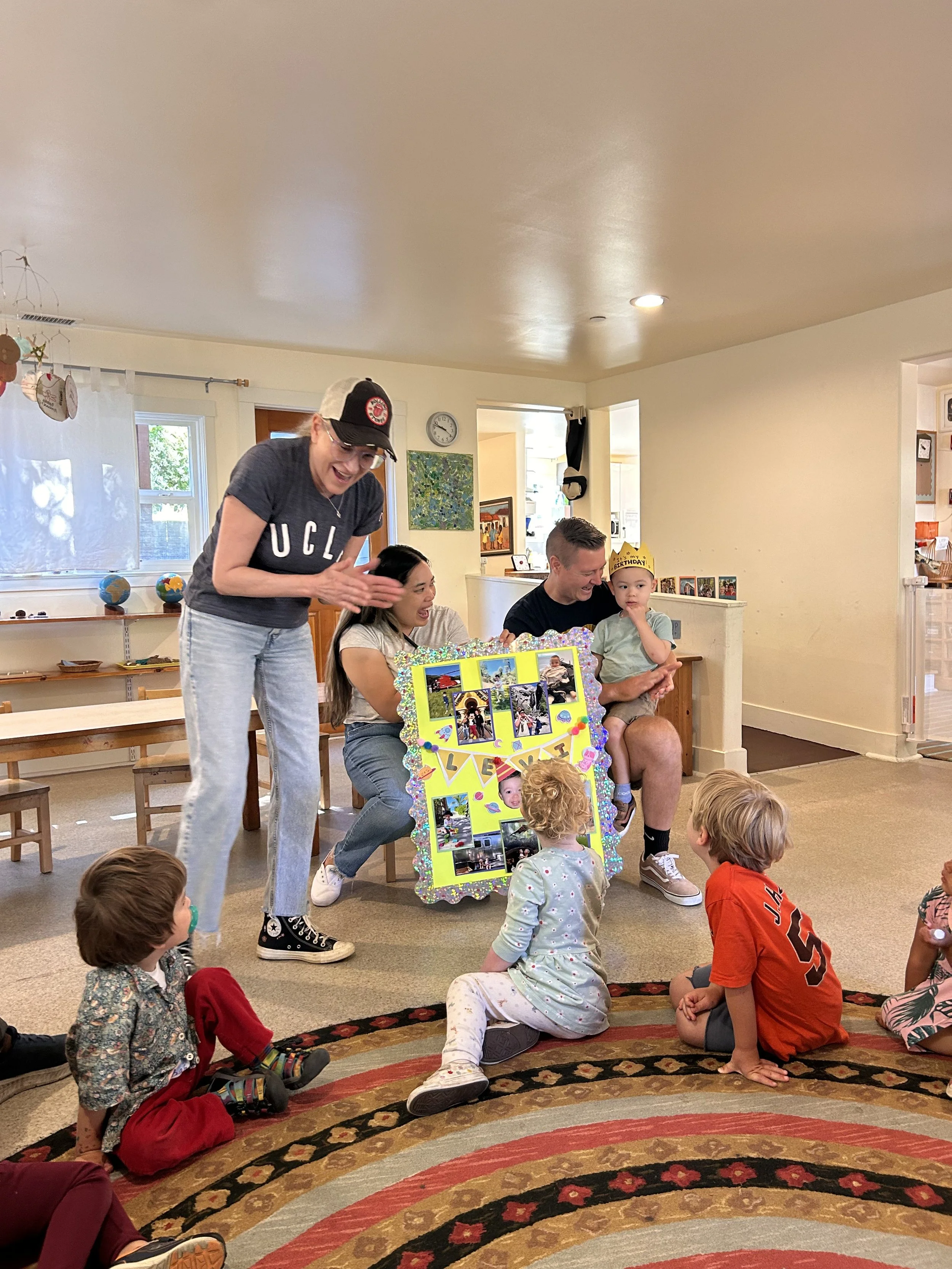
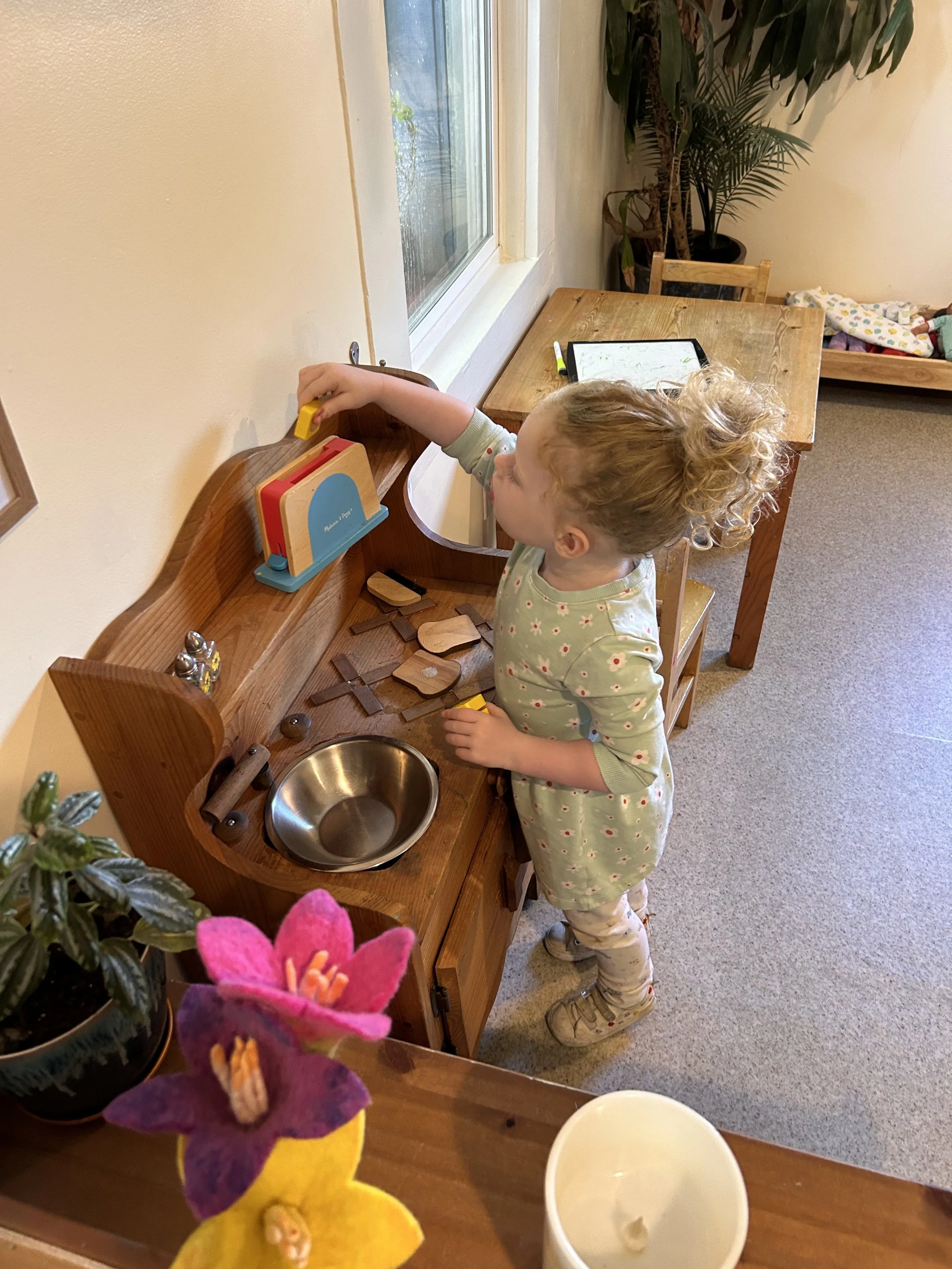
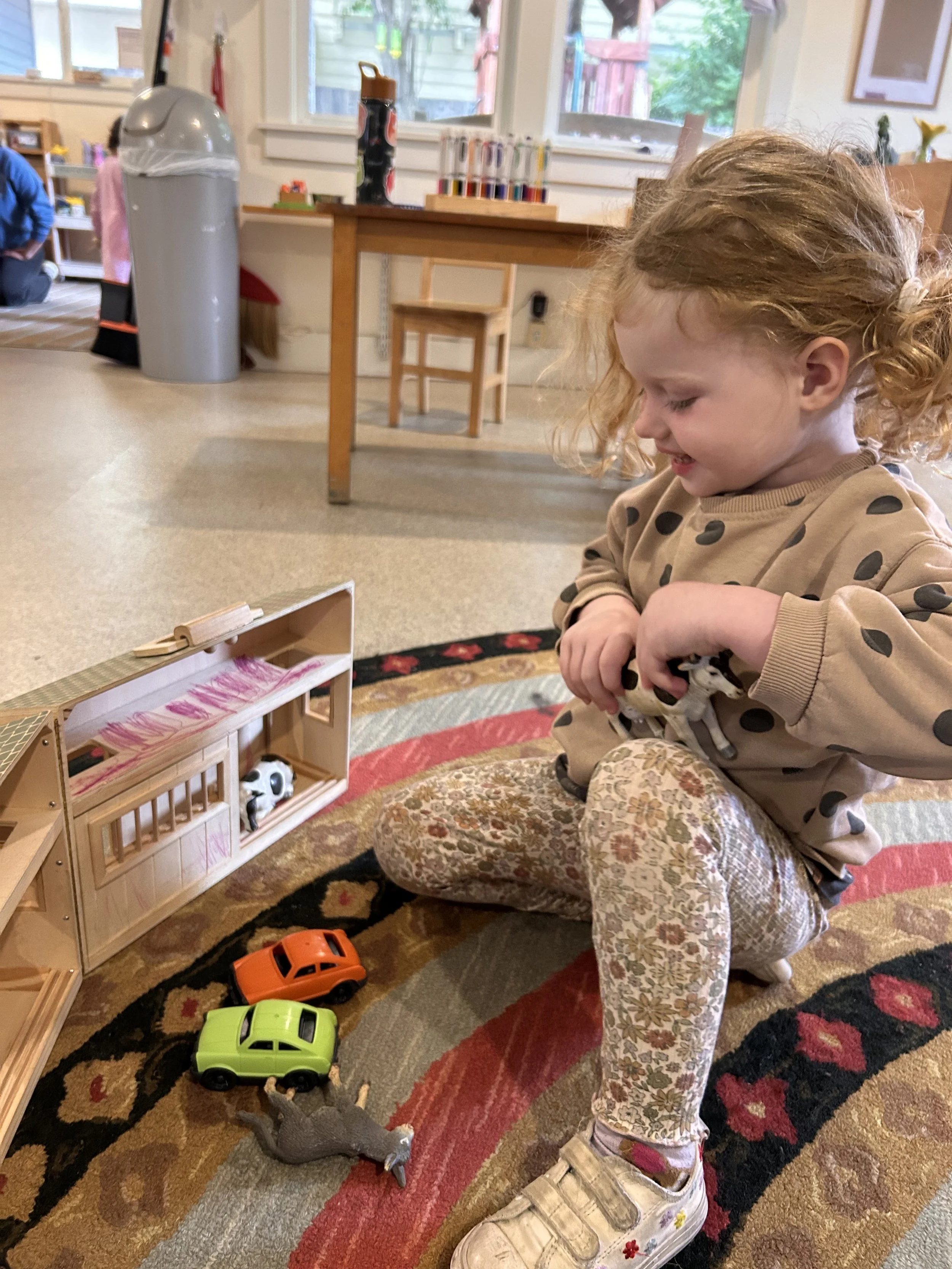

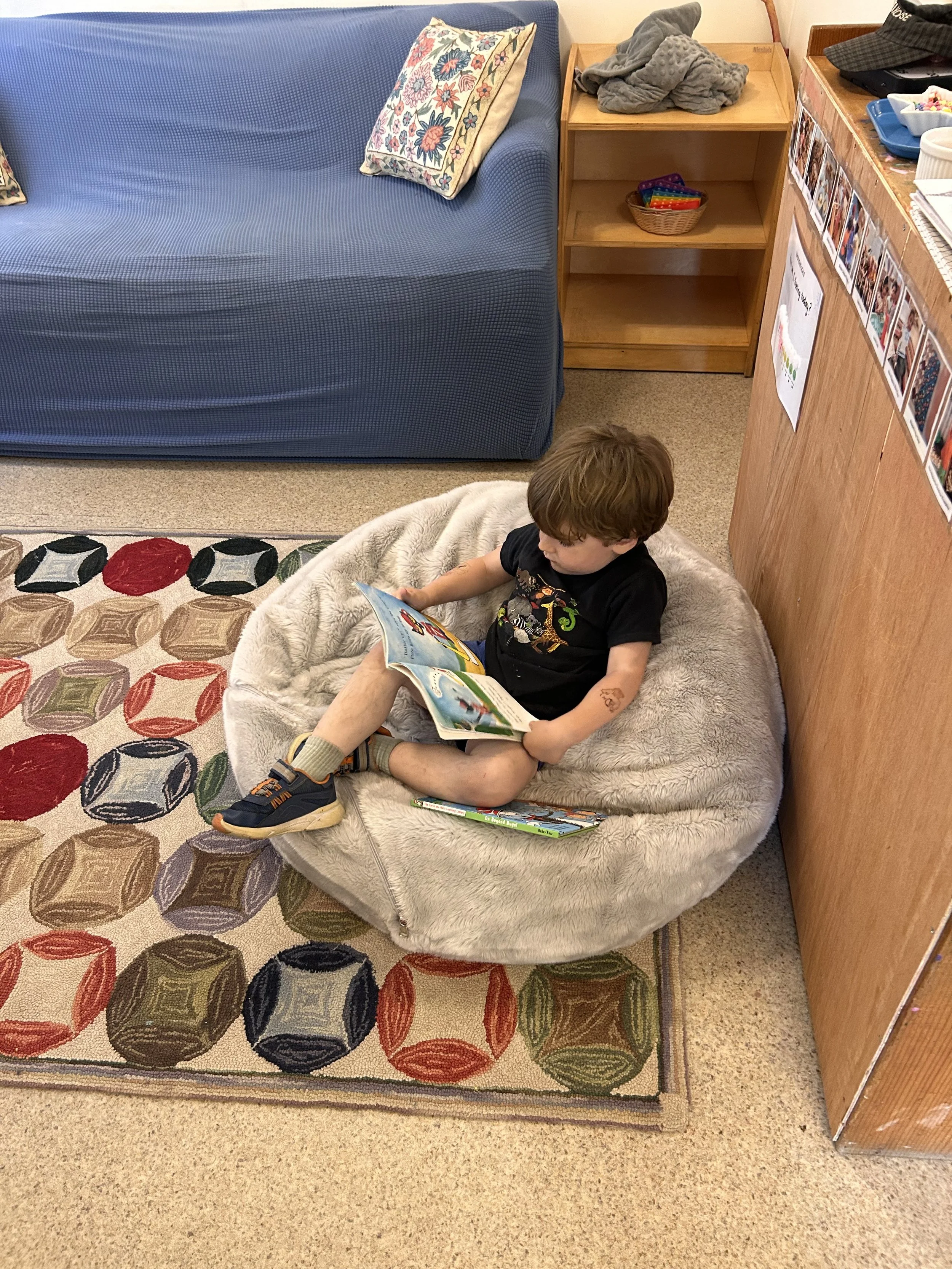
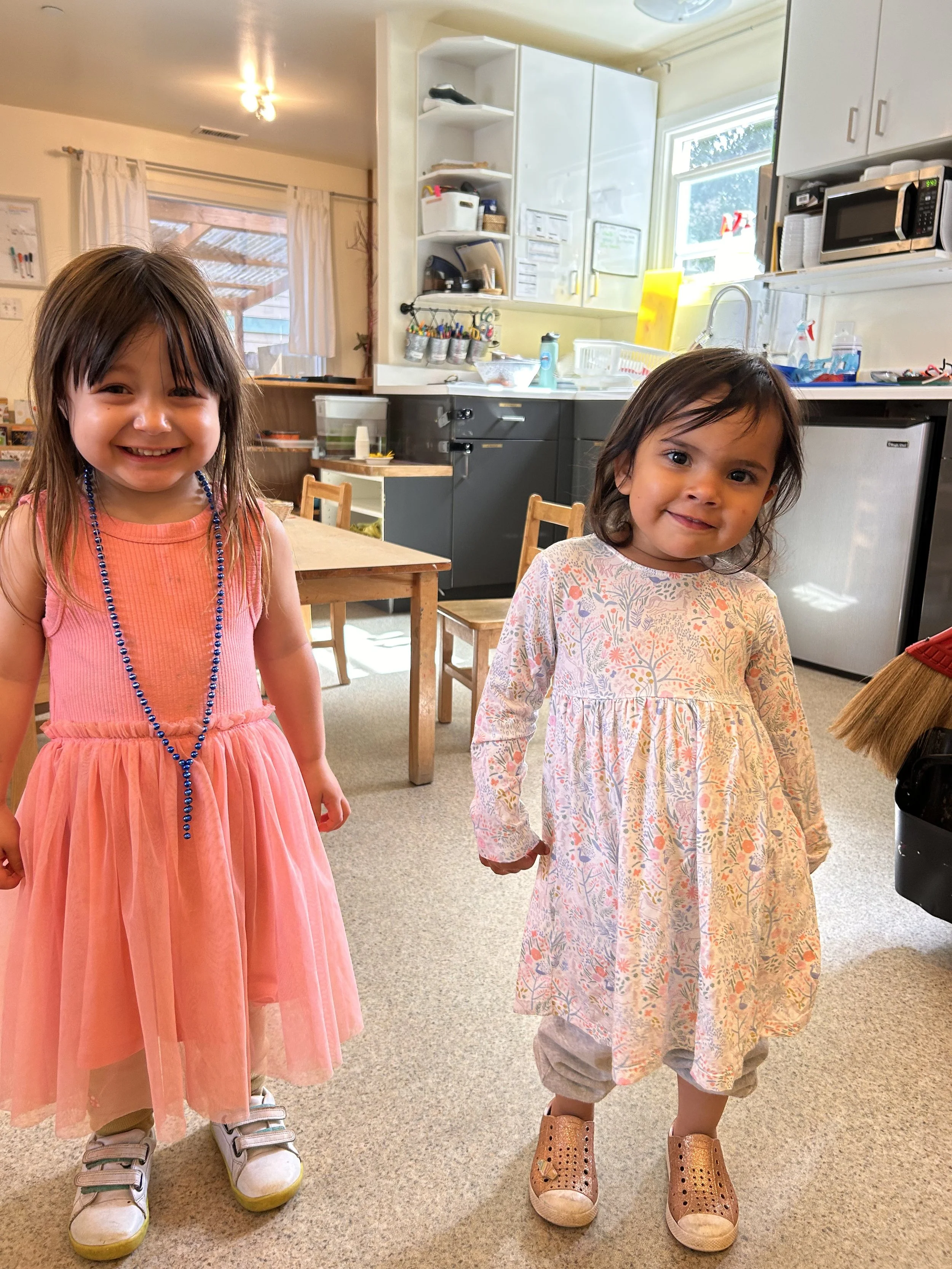
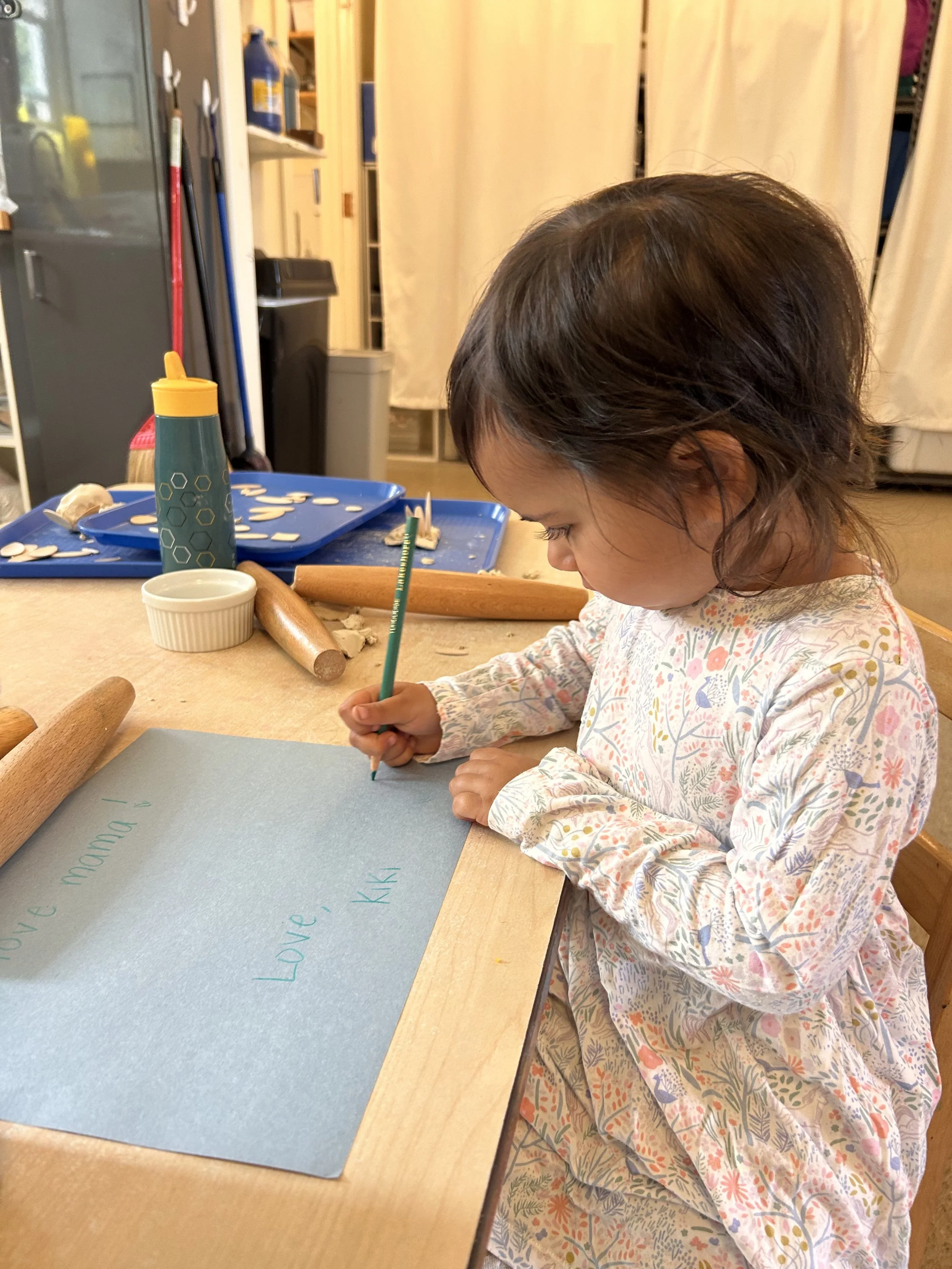
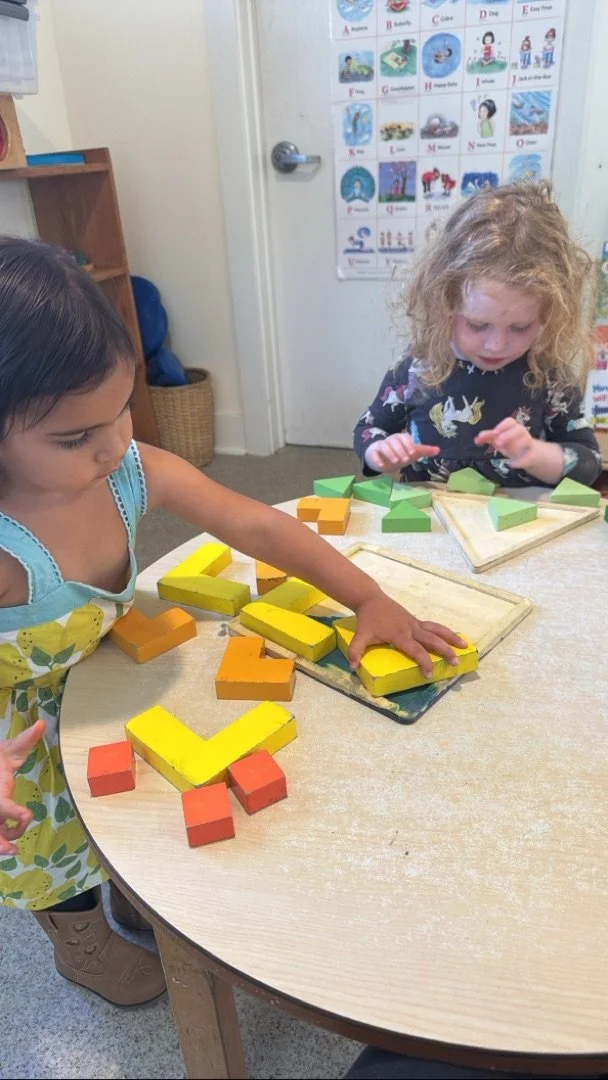


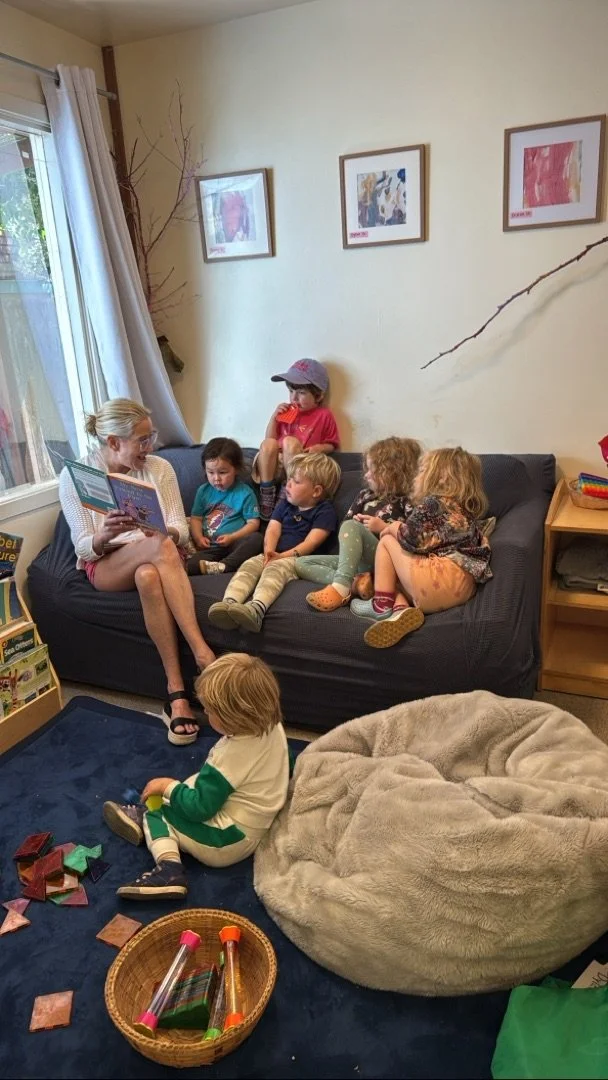
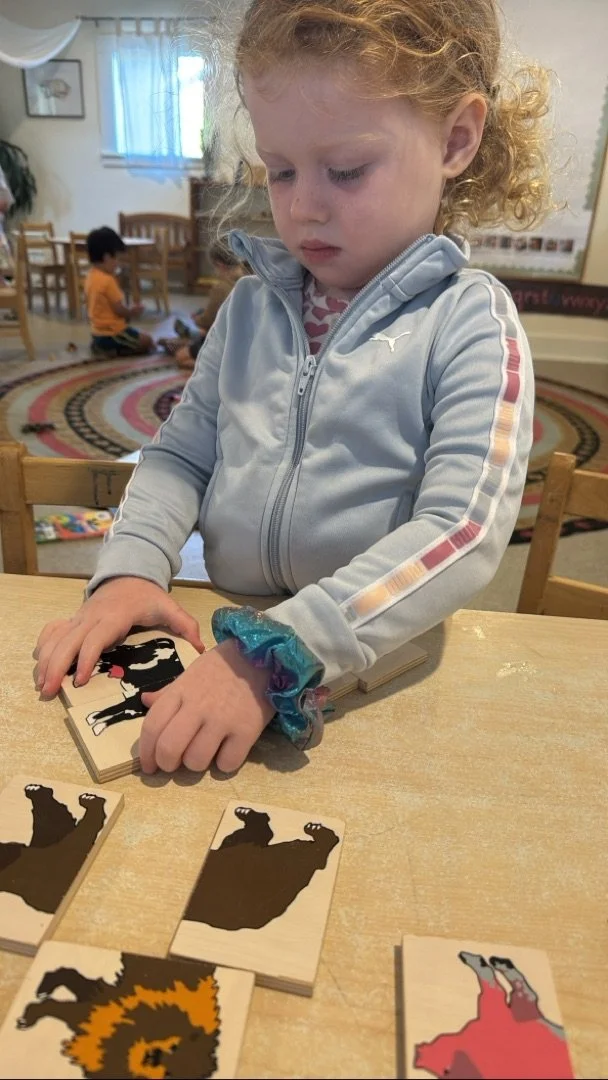
Social & Emotional Learning
One of the focuses this summer was on building understanding of classroom routines and supporting positive social interactions among the children.
Through teacher puppet shows, the children explored common conflicts, such as taking turns and sharing materials. These scenarios encouraged the children to suggest solutions and practice empathy, including how to respond if they grab, hurt or upset a friend. Using puppet shows provides a safe way for children to develop problem solving and conflict resolution skills without feeling directly involved.
Some of the language we use to support these skills includes phrases like, “Can I have a turn when you’re done?” and after an accident or disagreement, encouraging children to ask, “Are you okay?” These simple, respectful expressions help children communicate their needs and check in with their peers, fostering empathy and perspective taking.
Our older friends have played an important role in mentoring the new children as they learn the classroom routines. They have helped model routines of the classroom like cleaning up, freezing when the bell rings, and sitting on the edge of the rug during circle time, and lining up to wash hands and go outside. One of the most rewarding parts of being a teacher is witnessing these moments and seeing older children deepen their own growth and understanding by sharing what they know and supporting their younger peers. Thanks to this guidance, our new friends have settled in well, gaining confidence as they understand what comes next and smoothly transition from one activity to another.
This summer, we placed a strong emphasis on emotional regulation and helping children learn effective ways to manage big feelings. Emotional regulation is the ability to recognize, understand, and respond to emotions in a healthy and constructive way. We introduce specific calming strategies during times when children’s higher level thinking skills (often referred to as executive functions or the “upstairs brain”) are fully engaged. Then, during moments of dysregulation, when those skills are temporarily overwhelmed and inaccessible, we revisit and reinforce those strategies while providing coregulation. This involves staying close, offering calm guidance, and modeling ways to reconnect emotions with body cues. In coregulation, children are able to borrow from the calm presence of a regulated adult as they work toward regaining control. Some of the strategies we teach and practice include:
Creating personal space
Take a break in our cozy corner
Asking a teacher for help
Getting a sip of water
Practicing deep breathing exercises using tools like our breathing ball or pinwheels
These approaches help children develop self awareness and build foundational skills for managing their emotions effectively.
We read The Color Monster by Anna Llenas and discussed what makes us feel better when we are feeling upset.
Some of the children’s responses were:
“When I get hugs and kisses and laugh about something funny”-Sammy
“When someone checks-in”-Idris
“When I don’t want to clean my room when someone helps me clean my room”-Sloane
“You have to keep hands on your own body”-Dylan
Additional children’s thoughts on emotions and relationships:
“Mama always comes back” -Winter to comfort a friend who had a hard time saying goodbye to their grown up
“We have to have safe hands”-Arthur
“We have to take deep breaths”-Eisley
“I need ice pack”-Levi who became our ice pack retriever, always willing to jump in to help a friend in need.
“Why is Kiki crying?,” asked Dylan. “She misses her mommy,” said teacher Jocelyn. Dylan thought about that for a minute and then gently took Kiki’s hand in his and said, “I miss my mommy too, but mommy always comes back.”
Supporting children in developing emotional regulation is an ongoing, essential part of our daily work together in helping to develop each child’s sense of safety and self worth.
Thank you for an special summer! We’re excited to continue learning with and caring for your children this fall.
Have a wonderful break!
